AOL-Time Warner
description: former American multinational media conglomerate
142 results
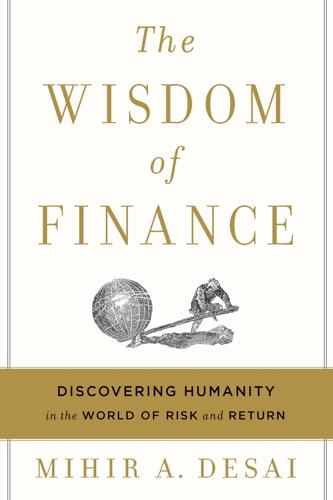
The Wisdom of Finance: Discovering Humanity in the World of Risk and Return
by
Mihir Desai
Published 22 May 2017
New York Times, February 27, 2016. The account of the AOL–Time Warner merger is based on Okrent, Daniel. “AOL–Time Warner Merger: Happily Ever After?” Time, January 24, 2000; Klein, Alec. Stealing Time: Steve Case, Jerry Levin, and the Collapse of AOL Time Warner. New York: Simon & Schuster, 2003; Munk, Nina. Fools Rush In: Steve Case, Jerry Levin, and the Unmaking of AOL Time Warner. New York: Harper-Business, 2004; Arango, Tim. “How the AOL–Time Warner Merger Went So Wrong.” New York Times, January 10, 2010; Marriage from Hell: The Breakup of AOL Time Warner. United States: CNBC, January 6, 2010. News Documentary; Barnett, Emma, and Amanda Andrews.
…
Depending on how you count it, over $200 billion in market value was destroyed. It’s little solace to the shareholders and employees that got crushed in the AOL–Time Warner merger, but the truth is that many, and some say most, mergers fail. And the failures of AOL–Time Warner are representative of the most common mistakes. So, what went wrong in the marriage of AOL and Time Warner? Just about everything—and, in fact, the mistakes read like a playbook for disaster drawn from the finance folklore of what makes mergers succeed or fail. With only minimal revision, the mistakes of AOL –Time Warner might just as easily be a playbook for disaster drawn from matrimonial folklore of what makes marriages succeed or fail—just substitute people for the companies and see if works for you. 1.
…
“the Time Warner–AOL merger should”: Arango, “How the AOL–Time Warner Merger Went So Wrong.” http://www.nytimes.com/2010/01/11/business/media/11merger.html. “It was the biggest mistake”: Barnett and Andrews, “AOL Merger Was the Biggest Mistake in Corporate History, Believes Time Warner Chief Jeff Bewkes.” http://www.telegraph.co.uk/finance/newsbysector/mediatechnologyandtelecoms/media/8031227/AOL-merger-was-the-biggest-mistake-in-corporate-history-believes-Time-Warner-chief-Jeff-Bewkes.html. “we need to”: Munk, Fools Rush In, 264. “like different species”: in Arango, “How the AOL–Time Warner Merger Went So Wrong.” “Thomas Edison”: Perez-Pena, “Time Warner Board Backs AOL Spinoff.” http://www.nytimes.com/2009/05/29/business/media/29warner.html.
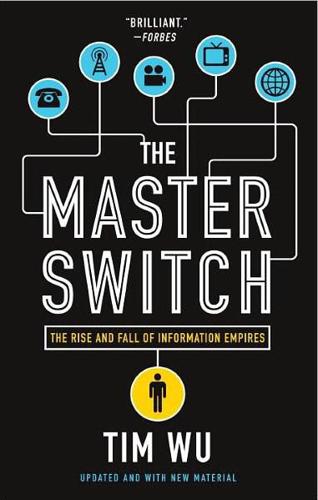
The Master Switch: The Rise and Fall of Information Empires
by
Tim Wu
Published 2 Nov 2010
CHAPTER 19: A SURPRISING WRECK 1. As told to The New York Times in Tim Arango, “How the AOL–Time Warner Merger Went So Wrong,” New York Times, January 10, 2010. For other sources on the AOL–Time Warner merger, see Johnnie L. Roberts, “How It All Fell Apart,” Newsweek, December 9, 2002, and three books: Nina Munk, Fools Rush In (New York: HarperCollins, 2004); Alec Klein, Stealing TIME: Steve Case, Jerry Levin, and the Collapse of AOL Time Warner (New York: Simon and Schuster, 2003); and Kara Swisher, There Must Be a Pony In Here Somewhere: The AOL Time Warner Debacle and the Quest for a Digital Future (New York: Crown Business, 2003). 2.
…
The early 2000s might have turned into a war of accumulation among three vertically integrated great powers: Microsoft-GE (NBC’s parent), AOL Time Warner, and Comcast-Disney. Eventually everything on the Internet would have been owned by one of them. That would have made for a tidier information economy, centered mainly on two mega-industries: the media conglomerates and the telephone companies. But something went wrong. Microsoft stopped buying media. Disney rejected Comcast’s merger offers. And AOL Time Warner became the textbook example of what not to do—as Ken Auletta calls it, “the Merger from Hell.”11 WHAT HAPPENED? The books about the AOL Time Warner saga are the work of business reporters and as such tend to focus on the personalities, clashes of corporate cultures, and terse boardroom encounters.
…
And within three months of that rendezvous on the reviewing stand, on January 10, 2000, they were holding a press conference to announce their own revolution: a $350 billion merger between the world’s biggest media company and biggest Internet firm. AOL would be the engine that brought Time Warner’s old media holdings—a treasury of what was becoming known as “content”—into the new world. It was an effusive spectacle. Levin said “We’ve become a company of high-fives and hugs.” Ted Turner, the largest individual shareholder, likened it to “the first time I made love some forty-two years ago.”5 It looked as if the future had indeed arrived. To many it seemed that the Internet would eventually belong to vertically integrated giants on the model of AOL Time Warner. Here’s Steve Lohr writing in The New York Times in 2000: “The America Online–Time Warner merger [will] create a powerhouse for the next phase of Internet business: selling information and entertainment services to consumers who may tap into them using digital cell phones, handheld devices and television set-top boxes in addition to personal computers.”6 In time, it was envisioned, three or four consolidated firms—say, AOL Time Warner, Microsoft-Disney, and perhaps Comcast-NBC—would slowly divide up the juiciest Internet properties, such as Yahoo!
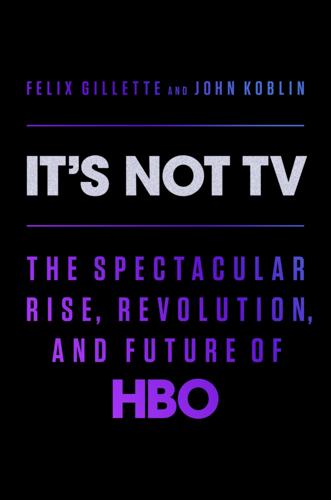
It's Not TV: The Spectacular Rise, Revolution, and Future of HBO
by
Felix Gillette
and
John Koblin
Published 1 Nov 2022
Wall Street’s strong initial support for the deal was disappearing. By the summer of 2002, AOL Time Warner shares were trading near an all-time low, having lost more than 80 percent of their value over the past year, erasing billions of dollars in value. Analysts and investors were apoplectic. HBO staffers, many of whom had large amounts of their personal nest eggs tied up in company stock, were also growing deeply embittered. From day one, staffers were free to sell off their newly converted AOL Time Warner stock, but were discouraged from doing so. Word circulated around the offices that if you cashed in a lot of AOL Time Warner stock at one time, you were likely to get a stern note from the bosses in corporate.
…
The men donned suits, tailored button-down shirts, well-appointed cuff links, and designer ties. While the AOL deal would ultimately fail to disrupt the future of media, it did succeed briefly at disrupting the prevailing wardrobe at Time Warner. Styles in the C-suite changed overnight. Longtime HBO staffers watched with some dismay as members of the company’s senior management team began adopting the khaki-infused style of the AOL tribe. A smattering of business casual could be seen blooming in every AOL Time Warner conference room. Gerald Levin, a reliable suit-and-tie man for decades, started showing up in public wearing denim shirts and suede shoes that looked like slippers.
…
He wanted to show the business world that it was possible for the top executive at the most powerful media conglomerate on the planet to relinquish control of the company without dying or being fired. His existence, he told reporters, was about more than just AOL Time Warner earnings. “I need to reclaim my identity,” he said. “I’m about to demonstrate the real me.” After leaving AOL Time Warner, Levin would soon divorce his wife, leave New York City, marry a clairvoyant healer, grow a beard, and become the director of the Moonview Sanctuary, a holistic wellness institute in Santa Monica, California, with a yoga room, a collection of hand drums, a marble statue of Buddha, and an outsize gong.
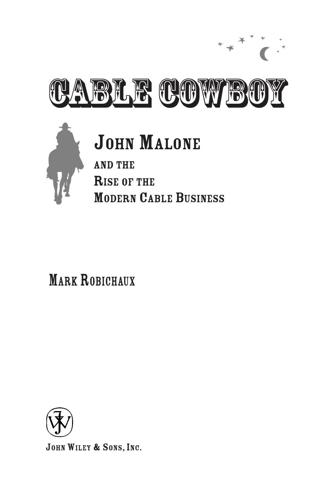
Cable Cowboy
by
Mark Robichaux
Published 19 Oct 2002
Before the meeting concluded, the men brief ly discussed another subject: America Online. At the time, Levin was terrified that AOL would use its pumped-up market capitalization to attempt a hostile takeover of Time Warner. Thanks to the Internet inf lation in the financial markets, AOL had twice the market capitalization of Time Warner and had hired bankers in the summer to plot strategic possibilities. Hindery, a longtime cable guy, closed ranks with Time Warner and promised that AT&T would never talk with AOL without talking to Time Warner first. The men even discussed a poison pill for Time Warner Entertainment. Armstrong also needed a pact with Cablevision Systems Corporation, the Long Island, New York–based cable empire headed by cable pioneer Charles Dolan.
…
A parade of companies would follow the template set in the AT&T deal, merging, investing, and chasing the grand vision of offering consumers a nonstop stream of information and entertainment—and many would fall short. Just weeks after AOL and Time Warner merged, the Internet bubble burst, sending values of online firms tumbling. The terrorist attacks of September 11, 2001, further accelerated a recession that battered media stocks in nearly every sector. Synergies and savings were elusive. By 2002, AOL–Time Warner would lose more than $100 billion in shareholder value since the merger announcement, amid rumors the behemouth might be dismantled. Vivendi, a French water utility that remade itself into a global media giant with the purchase of Seagram Company’s Universal Studios and other properties, nearly choked in the process, losing half its stock value.
…
Microsoft, which had acquired Media One’s 29.9 percent stake in Telewest a year earlier, and was also a minority partner in UGC, was as eager as Malone to push overseas for new business. When AT&T conceded that its cable systems were formally up for sale, AOL Time Warner and Cox jumped into the fray. Microsoft lurked in the wings, too, promising to back the Cox and Comcast bids in order to block the only other broadband behemoth it 275 9486_Robichaux_03.f.qxd 8/28/02 9:54 AM Page 276 276 C A B L E C O W B OY considered a real threat, AOL Time Warner. Handicapping who would end up with the TCI and Media One cable systems came down to this: Who could craft the most lucrative, face-saving offer for Mike Armstrong?
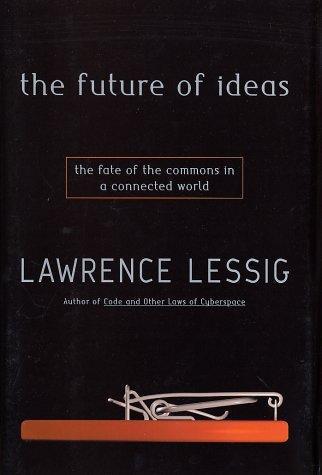
The Future of Ideas: The Fate of the Commons in a Connected World
by
Lawrence Lessig
Published 14 Jul 2001
AS THE CLINTON administration came to an end, one of the last acts of the (by statute, at least, neutral) Federal Trade Commission (FTC) was a sign of some hope. After a long and extensive investigation into the risks of the proposed AOL-Time Warner merger, the FTC, led by its chairman, Robert Pitofsky, conditioned the merger of AOL and Time Warner upon the essential elements of open access. Access to the cable broadband pipes must be kept open, the FTC insisted. Nonaffiliated content must flow without hindrance from AOL or Time Warner. And this unhindered access must include access to Internet-active TV.45 This decision by the FTC was an important breakthrough in the attitude of the government.
…
Powerful corporations like AT&T and the proposed AOL Time Warner would have the power to balkanize the broadband Internet for their own purposes, with no legal reason to open their networks to competitors.” “Convergence Raises Concerns About Access,” New York Times, January 31, 2000, available at http://www.nytimes.com/library/tech/00/ 01/biztech/articles/31digi.html. 45 See Federal Trade Commission, “FTC Approves AOL/Time Warner Merger with Conditions,” December 14, 2000, http://www.ftc.gov/opa/2000/12/aol.htm; Federal Trade Commission, Docket No. C-3989. See also John R. Wilke, “AOL and Time-Warner Pledge Cable Access to Ease FTC Fears,” Wall Street Journal, December 14, 2000. 46 Or alternatively, a tragedy of an anticommons.
…
Instead, AT&T began to argue that the market should regulate cable, and the government should stand aside. This would become a familiar pattern. In January 2000, AOL and Time Warner announced to a startled world that they had agreed to merge. Time Warner owned many cable companies; these cable companies would serve AOL content at high speed. AOL had many Internet customers. These customers would be able to get access to Time Warner content. The merger was an ideal opportunity, both companies argued, for synergy in this market. The old and the new would form together one of the most important media companies in the world.

As the Future Catches You: How Genomics & Other Forces Are Changing Your Work, Health & Wealth
by
Juan Enriquez
Published 15 Feb 2001
(At the end of 1997, Time Warner’s assets were about forty times those of AOL … But the Internet boom changed things … So did AoL’s 27 million subscribers.) The speed and scope of technological change is such that … AOL became twice as valuable as Time Warner … And became the lead company … In the world’s largest merger. (A new company that expects to be Microsoft’s main competitor … By January 2001 AOL Time Warner controlled 33 percent of Americans’ time on the Net … Yahoo! had 7 percent … Microsoft 6 percent.) Things change very quickly in a digital world. Even companies … That have more cash … That have more information … And that have become larger … Than most national economies … Are by no means guaranteed survival … Either they get smarter … And grow … Or someone will eat them up.6 THE POWER OF TECHNOLOGY … TO BUILD … AND DESTROY … IS SUCH … THAT IT IS LIKELY … FEW OF US HAVE EVER HEARD … THE NAME OF WHAT WILL BE THE WORLD’S LARGEST COMPANY … IN 2020.
…
Technology companies are getting very large … and very powerful… Microsoft’s stock value … Before a judge ruled it a monopoly … Was approaching the value … Of everything Canada produced in one year. In the first quarter of 2000, AOL Time Warner’s market value was greater than everything produced during 1998 by all those who lived in a country like … OR LOOK AT IT A DIFFERENT WAY … OF ALL THE WORLD’S 190 “OFFICIAL” COUNTRIES … LESS THAN ONE-TENTH PRODUCED ENOUGH WEALTH IN 1998 … TO BE ABLE TO BUY AOL TIME WARNER. Even products that … Are by no means essential … That can be substituted by something cheaper … Or by something made locally … Or by products that are healthier … Can dominate using … Talent, scale, and know-how … AND THE LOGIC OF GLOBAL CAPITALISM IS … THAT ONE MUST DOMINATE … THE WHOLE … WORLD … FAST.
…
A language we cannot speak or read directly … We have to use chips and machines to understand. (This is different from communicating in, say, English-Chinese-English. No human translator can take the raw code inside a floppy disk, cell phone, pager, or TV and simultaneously tell you what it says.) Digital code is what drives rapid growth today. It allows mergers like AOL Time Warner … It drives the Internet, TV, music, finance, IT, news coverage, research, manufacturing. A few countries and companies understood this change. That is how poor countries like Finland, Singapore, and Taiwan got so wealthy … So quickly … But a lot of folks just did not learn to read and write a new language … And even though they produced more and more goods, particularly commodities … And even though they restructured companies and governments … Cut budgets, raised taxes, built large factories and buildings … They got a lot poorer.
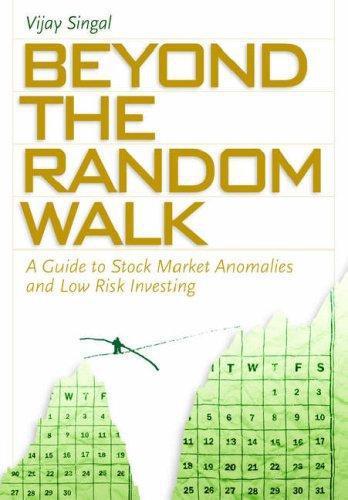
Beyond the Random Walk: A Guide to Stock Market Anomalies and Low Risk Investing
by
Vijay Singal
Published 15 Jun 2004
They prefer a stock payment because of tax implications but would like to receive cash because there is no uncertainty about the amount of money. As an example, consider the AOL–Time Warner merger, where AOL agreed to pay 1.5 shares of its stock for each share of Time Warner stock. AOL’s price before announcement of the bid was $73 per share. With a 1.5 share ratio, Time Warner shareholders expect to receive $109.50 for each share. If AOL’s stock price fell to $35, Time Warner shareholders would receive only $52.50, introducing uncertainty into the amount received by the target firm. Collars are a recent innovation, a way of partially addressing both bidder and target concerns.
…
STOCK MERGERS—SINGLE BID When the target’s stock price does not rise to the bidder’s offer, traders can make arbitrage profits by strategic execution. An all-stock merger such as America Online’s (NYSE: AOL) acquisition of Time Warner (NYSE: TWX) is a good example. The merger was announced after the close on January 7, 2000 (a Friday). AOL agreed to pay 1.5 shares for each share of Time Warner. On the next trading day (January 10, 2000), AOL closed at $71.88 and Time Warner closed at $90.06. Based on AOL’s offer of 1.5 shares and it’s closing price, Time Warner should have closed at $107.82. The speculation spread in this case is $17.76 ($107.82—$90.06), or 19.7 percent. An arbitrageur could buy one share of Time Warner at $90.06 (pays $90.06) and short-sell 1.5 shares of America Online at $71.88 (receives $107.82).
…
For example, Fred Alger Management (manager of Alger mutual funds) changed its holdings to take advantage of the AOL–Time Warner merger that was announced in January 2000, as the numbers below illustrate. Fred Alger Management sold several million shares of AOL (acquirer) while at the same time increasing its stake in Time Warner (target).7 Note that the reduction in AOL shares is larger than the increase in Time Warner, in part due to the exchange ratio of 1.5 AOL shares for each Time Warner share. Holdings Time Warner AOL December 1999 51,900 6,915,790 March 2000 1,584,000 4,297,950 Change +1,532,100 –2,617,840 The above discussion shows that it is possible to get reasonable returns by using funds specializing in merger arbitrage.
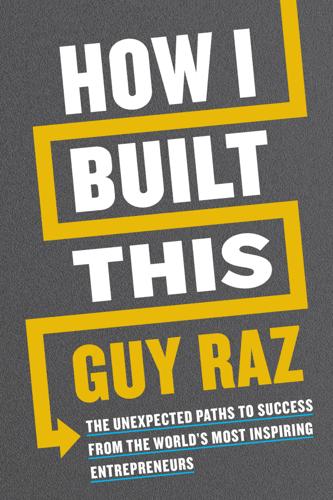
How I Built This: The Unexpected Paths to Success From the World's Most Inspiring Entrepreneurs
by
Guy Raz
Published 14 Sep 2020
Only a company that has lost its way a little bit, that doesn’t know precisely what business it’s actually in, tends to fight itself like this. Andy only needed to look twenty blocks uptown from his New York office and a few years into the past, at AOL Time Warner and the titanic merger that created the company in 2000, to see what the worst possible version of this might look like. When AOL and Time Warner merged, a lot was made of the new media entity’s size and market cap. The potential created by both teams leveraging the assets they brought to the table was difficult to contemplate let alone calculate. The merger was valued at $165 billion, but that was probably just a guess.
…
With a strong culture unified by a larger mission and propelled by people who were all rowing in the same direction, they could have even leveraged the obstacles they faced into opportunities. Except inside AOL Time Warner, there was no unity to be found, and within a decade the merger would be dead. Both companies would lose more than 85 percent of their premerger value. Time Warner would eventually spin off its cable business (Time Warner Cable), it’s publishing business (Time Inc.), and, of course, AOL, which would reenter a radically transformed digital media landscape as a wandering shell of its former self. The smaller Time Warner rebranded itself as WarnerMedia, which was ultimately sold to AT&T for around $85 billion in 2018.
…
In the aftermath of the merger’s unwinding (which occurred at roughly the same time Andy and Brian unwound their partnership at Bonobos, coincidentally), analysts and participants alike pointed to the schism between the AOL folks down in Virginia and the Time Warner folks up in New York as one of the principal reasons for the company’s failure to find its way through the turbulent waters of the dot-com recession. There was always great talk about “building synergy” between AOL and Time Warner, but in the end that turned out to be an illusory goal. “Some of it was the fights within the company,” Steve Case, AOL’s chairman, told me. “It was a mix of different factors but at the end of the day it’s about people and it’s about teams.”
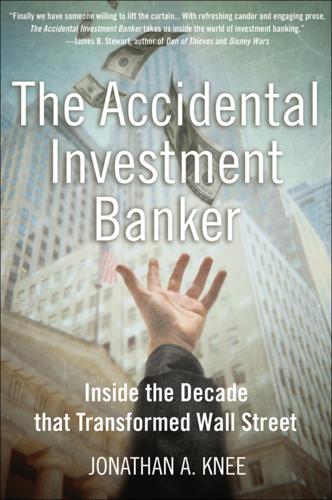
The Accidental Investment Banker: Inside the Decade That Transformed Wall Street
by
Jonathan A. Knee
Published 31 Jul 2006
Some of the most entertaining reading in any pitch book are the tortured footnotes to these league tables that allow anybody with a semistraight face to claim they are number one: “includes transactions over $500 closed since January 1, XXXX,” “excludes transactions over $500 closed since January 1, XXXX,” “league tables are for transactions other than Comcast/AT&T and AOL/Time Warner,” and so on. Many an analyst has spent many a sleepless night cutting and recutting the data to come up with the least ridiculous way to demonstrate number one market share. They could be forgiven for their occasional temptation to throw up their hands and simply include an omnibus league table page for all products, for all times that would simply read: WE HAVE 100% MARKET SHARE OF ALL DEALS WE DID.
…
Although Perella had made his bones in the industry as an M&A practitioner, he had demonstrated extraordinary effectiveness as a senior coverage officer. An impressive number of Morgan’s high-profile banking successes across many industries—from the combination of Sandoz with Ciba-Geigy to the AOL Time Warner merger—would have Perella’s fingerprints on them. Despite his formidable track record, and Perella’s willingness to go to any meeting if asked, many bankers thought twice before calling Perella in as “senior air cover” on an account. Perella refused to be used as a mere prop for new business pitches.
…
We came up with the bright idea of organizing an “Internet Media Conference” in part to satisfy our clients whom we could never actually get invited to Mary’s “real” Internet conference—one of the street’s hottest tickets—but also as a subtle way to credentialize our traditional media analysts as having all-important Web savvy. I was responsible for organizing the conference and kept Mary and her “gatekeepers” informed. By early 2000, I had already gotten commitments from Viacom chairman Sumner Redstone and AOL Time Warner CEO Jerry Levin to speak and had sent out save-the-date cards to investors announcing the conference for that summer. Then I got the call I had been dreading. “Mary says you can’t call it Internet Media,” said the gatekeeper. “Why?” I asked. “It will confuse investors,” said the gatekeeper, “and besides she really hasn’t been involved in the organization.”
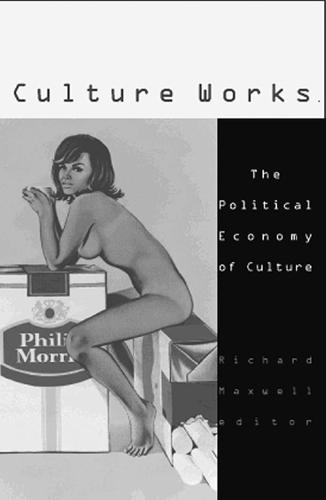
Culture works: the political economy of culture
by
Richard Maxwell
Published 15 Jan 2001
The two mergers involve telecommunication companies marrying the United States’ two largest cable providers, in part to extend their grasp over future broadband customers. Had American and European regulators not applied pressure and set conditions for the AOL Time Warner merger, the new company could have reduced competition drastically by combining the United States’ secondlargest cable company with its dominant Internet service provider (ISP). In response to complaints from consumer advocates and competitors, the U.S. Federal Trade Commission (FTC) required AOL to continue offering reasonably priced DSL services to customers in cities where Time Warner was also selling broadband access via its monopoly cable systems. The merged company was required to offer subscribers a choice of at least three ISPs besides its own on its cable systems, ending Time Warner’s practice of forcing its own ISP on cable customers.
…
On the other hand, the large studios continue to command the lion’s share of markets and revenues by financing independent producers and controlling distribution channels. The studios’ power has only been strengthened as they have become part of larger, horizontally integrated entertainment conglomerates (AOL Time Warner, Sony, News Corp, etc.) that can provide financing and promote their products across many media outlets. What does this have to do with PCs and how they access the Web? First, it draws our attention to control over finance and distribution bottlenecks as the key source of profit and power in media markets.
…
CEO Bill Gates raised the specter of Microsoft becoming the universal middleman of the twenty-first century when he announced that “this new, electronic world of the information highway will generate a higher volume of transactions than anything has to date, and we’re proposing that Windows be at the center, servicing all those transactions.”32 The company’s chief technology officer has said that it hoped to charge a “vig” or vigorish on every Web transaction that uses Microsoft technology.33 Equally disturbing, an unbridled Microsoft could use its power to shape the news and culture that Web surfers find when they follow the path of least resistance into cyberspace and end up at one of Microsoft’s sites. Mergers between AT&T and Media-One, and America Online (AOL) and Time Warner, reflect another major bid to control Internet distribution, this time by locking up the emerging market for high-speed broadband service. Broadband connections, which can be made through digital subscriber line (DSL) via phone lines or cable modems, offer faster download times that enable interactive voice and television service.
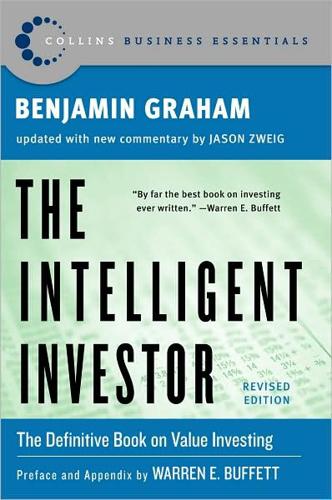
The Intelligent Investor (Collins Business Essentials)
by
Benjamin Graham
and
Jason Zweig
Published 1 Jan 1949
Any established company that reprices options—as dozens of high-tech firms have—is a disgrace. And any investor who buys stock in such a company is a sheep begging to be sheared. By looking in the annual report for the mandatory footnote about stock options, you can see how large the “option overhang” is. AOL Time Warner, for example, reported in the front of its annual report that it had 4.5 billion shares of common stock outstanding as of December 31, 2002—but a footnote in the bowels of the report reveals that the company had issued options on 657 million more shares. So AOL’s future earnings will have to be divided among 15% more shares.
…
The stock, which had closed at $58.90 at year-end 2001, finished 2002 at $17.08—a loss of 71% in twelve months.4 A Minnow Swallows a Whale On January 10, 2000, America Online, Inc. and Time Warner Inc. announced that they would merge in a deal initially valued at $156 billion. As of December 31, 1999, AOL had $10.3 billion in assets, and its revenues over the previous 12 months had amounted to $5.7 billion. Time Warner, on the other hand, had $51.2 billion in assets and revenues of $27.3 billion. Time Warner was a vastly bigger company by any measure except one: the valuation of its stock. Because America Online bedazzled investors simply by being in the Internet industry, its stock sold for a stupendous 164 times its earnings.
…
Stock in Time Warner, a grab bag of cable television, movies, music, and magazines, sold for around 50 times earnings. In announcing the deal, the two companies called it a “strategic merger of equals.” Time Warner’s chairman, Gerald M. Levin, declared that “the opportunities are limitless for everyone connected to AOL Time Warner”—above all, he added, for its shareholders. Ecstatic that their stock might finally get the cachet of an Internet darling, Time Warner shareholders overwhelmingly approved the deal. But they overlooked a few things: This “merger of equals” was designed to give America Online’s shareholders 55% of the combined company—even though Time Warner was five times bigger.

Survival of the Richest: Escape Fantasies of the Tech Billionaires
by
Douglas Rushkoff
Published 7 Sep 2022
A venerable conglomerate with real assets including a film library, magazine empire, theme parks, movie studios, and thousands of miles of television cable was about to merge with the guys who mailed shrink-wrapped “10 Hours Free Access” CDs to pretty much every home in America. According to the terms of the deal, the two companies would combine into one, with AOL shareholders owning 55 percent and Time Warner just 45 percent of the new company’s stock. How could America Online, a company with virtually no real assets, accomplish such a feat? Yes, AOL had accumulated a few million users, but for several months I had been hearing that the new subscriber rate was actually slowing. The only thing peaking about AOL at the turn of the century was its stock price.
…
Then, all of a sudden, the move made sense to the video game geek within me: AOL was spending its “in-world” fantasy money. AOL founder Steve Case was cashing in his chips, exchanging his speculative dotcom paper assets for a majority stake in a real company with real assets. Moreover, if he was choosing to do it now, it meant he believed that his AOL stock had hit its all-time high. To me, AOL’s purchase of Time Warner suggested that what then-Fed chair Alan Greenspan had called the “irrational exuberance” surrounding technology stocks had climaxed: the dotcom boom was ending. So I wrote all this down and sent it to the editor by the 3 pm deadline. An hour later, the phone rang. “We can’t run this!” he said.
…
The excitement around digital culture, the sexiness of people engaging with one another through media or making new software for free instead of simply watching television all night, was being leveraged to hype a big deal on the old economy’s stock exchange. Digital innovations were no longer about changing the world, but keeping the old system firmly in place. Two months later, the dotcom bubble burst, the NASDAQ crashed, and the very same newspapers that had celebrated the AOL–Time Warner merger were now decrying it as an epic failure on the part of Time Warner’s CEO, a former director of the New York Stock Exchange no less, Gerald Levin. People blamed his poor judgment on the trauma of losing his son, and watched, stunned, as $200 billion of shareholder money seemingly evaporated.
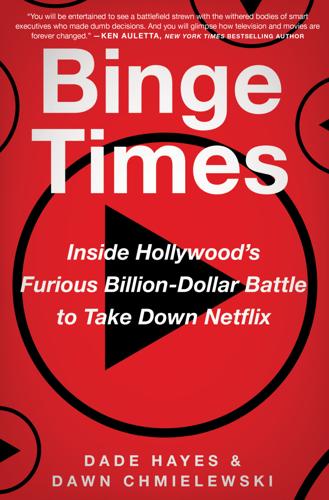
Binge Times: Inside Hollywood's Furious Billion-Dollar Battle to Take Down Netflix
by
Dade Hayes
and
Dawn Chmielewski
Published 18 Apr 2022
By far the most unfortunate aftereffect of the merger’s meltdown was that it made the company look askance at technology. The “innovator’s dilemma” described throughout this book is perhaps nowhere more evident than at AOL Time Warner in the 2000s. Jonathan Miller, chairman and CEO of AOL from 2002 to 2006, recalled bringing several potential acquisitions and joint venture proposals to the Time Warner board and to Jeff Bewkes and Dick Parsons, then president and CEO, respectively. Green-lighting many of them would likely have set the company—and the media and tech industries—on a dramatically different course.
…
Intertainer’s premature death, in 2002, could be traced to the studios’ decision to pull back all the rights and control internet distribution themselves, through a Sony-led venture called Moviefly (and later renamed Movielink). “In one week, we went from having about eight thousand movies on the service to having about eight,” Taplin said. “So, I had no choice but to shut it down.” Taplin sued Sony Pictures, Universal Studios, and AOL Time Warner (then parent of Warner Bros. and New Line Cinema), claiming the studios stole his idea and reneged on agreements to provide Intertainer their movies. After a three-year court battle, the case was resolved with a settlement in the tens of millions. But it was a pyrrhic victory for Taplin, who effectively ended his film career when he chose to take on the studios.
…
In many ways, the streaming version of HBO was the entertainment equivalent of universal health care legislation that finally made it through Congress in watered-down form. It followed more than a decade of active exploration of digital alternatives at HBO and Time Warner, which infamously bore the official name AOL Time Warner from 2001 to 2003. The disastrous merger with America Online was one of the biggest debacles in U.S. corporate history, but it somehow managed not to torpedo Time Warner. In that period, the entertainment side of the house was firing on all cylinders, releasing films like the Harry Potter and Lord of the Rings franchises and a string of TV hits produced by Warner Bros.
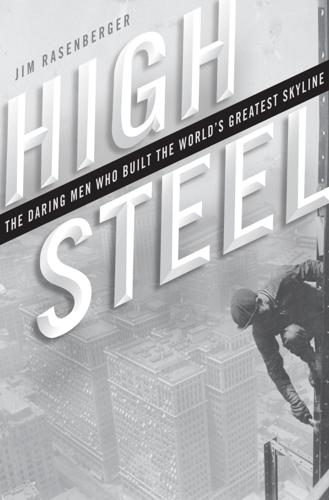
High Steel: The Daring Men Who Built the World's Greatest Skyline
by
Jim Rasenberger
Published 15 Mar 2004
I’m a Center for the Performing Arts! I’m the Center of Everything! First and foremost, the building would serve as corporate headquarters of Time Warner—or AOL Time Warner, as the company called itself back then. Including offices and studios for various branches of the entertainment and news divisions, the company would occupy about 854,000 square feet of space, most of this on the lowest 10 floors of the building. The merger of AOL and Time Warner in January of 2000 had spawned the largest media company in the world, instantly worth 342 billion dollars. These conjoined towers would represent more than office space: they would represent corporate dominance.
…
That was the idea, anyway, back in that heady time, before the conglomerate foundered and jettisoned AOL from its name. For the moment, the business of AOL Time Warner—communications—was the red-hot center of the American economy, very much as steel had been a hundred years earlier. “Global media,” said Gerald Levin, then CEO of Time Warner, “will be and is fast becoming the predominant business force of the twenty-first century.” AOL Time Warner, much like that corporate behemoth of a century earlier, U.S. Steel, aspired to vertical integration of its industry, only now the plan had a new name: “synergy.”
…
A few moments later, out of sight from the crowd, the crane laid the beam on the 22nd floor of the south tower, where it would rest and rust and await removal to its final berth on the 24th floor. For the moment, there was no 24th floor. In all the many speeches made that morning, no one mentioned the astonishing decline of AOL Time Warner’s stock over the last year. Attendees politely skipped over the fact that the company had lost about half its value since AOL and Time Warner merged the previous winter, and that the merger, barely a year old, was already looking like a colossal debacle. (The company would eventually concede as much, deleting AOL’s acronym from its name, and from the building once intended to bear it.)
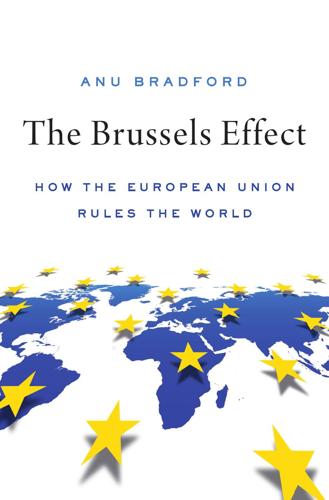
The Brussels Effect: How the European Union Rules the World
by
Anu Bradford
Published 14 Sep 2020
In 2011, the Commission required Intel to unbundle software and security solutions worldwide as a condition for the merger.77 It also required Intel to release interoperability information relevant for its chipsets and central processing units to independent security software vendors on a royalty-free basis.78 These examples further illustrate the significance of the Brussels Effect in the merger-review context. However, sometimes the practical effect of seemingly global merger remedies can be limited to the EU. For example, when the EU approved a merger between AOL and Time Warner in 2000, it required AOL to first sever all structural links with German media group Bertelsmann AG.79 Previously, AOL had conducted all its operations in Europe through two joint ventures in which Bertelsmann was a partner. The divestiture was globally effective—in other words, even if no other competition agencies required such divestment, the merged entity had to sever its links with respect to the company’s global operations.
…
(July 5, 2001, 12:01 AM ET), https://www.wsj.com/articles/SB99428227597056929 (on file with author). 40.Id. 41.Commission Decision in Case No. IV/M.877 (Boeing/McDonnell Douglas), 1997 O.J. (L 336) 16; Commission Decision in Case No. COMP/M.1741 (MCI WorldCom/Sprint) 2003 O.J. (L 300) 1; Commission Decision in Case No. COMP/M.1845 (AOL/Time Warner), 2001 O.J. (L 268) 28; Commission Decision in Case No. COMP/M.6570 (UPS/ TNT Express), C(2013) 431 final (Jan. 30, 2013) cited in 2014 O.J. (C 137) 8. 42.Tobias Buck, How the European Union Exports Its Laws, Fin. Times (July 9, 2007), https://www.ft.com/content/942b1ae2-2e32-11dc-821c-0000779fd2ac (on file with author). 43.Mark Scott, E.U.
…
(CCH) ¶ 24,295 (July 1, 1997). 75.Commission Decision in Case No. IV/M.877 (Boeing/McDonnell Douglas), 1997 O.J. (L 336) 16,36‒38. 76.See Kovacic, supra note 18, at 838‒39. 77.Commission Decision in Case No. COMP/M.5984 (Intel/McAfee), C(2011) 529 Final (Jan. 26, 2011). 78.Id. 79.Commission Decision in Case No. COMP/M.1845 (AOL/Time Warner), 2001 O.J. (L 268) 28. 80.See Commission Decision in Case No. COMP/39258 (Airfreight), C(2010) 7694 final (Nov. 21, 2001) re-adopted in Summary Commission Decision in Case No. AT.39258 (Airfreight), 2017 O.J. (C 188) 14; Commission Decision in Case AT.39924 (Swiss Franc Interest Rate Derivatives/LIBOR), C(2014) 7605 final (Oct. 21, 2014) cited in 2015 O.J.
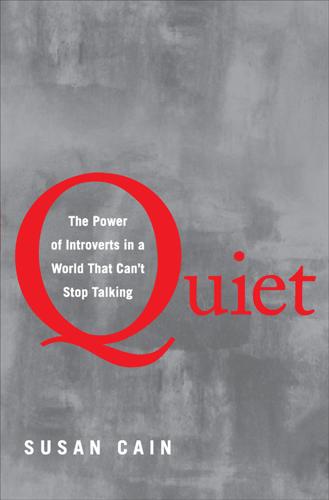
Quiet: The Power of Introverts in a World That Can't Stop Talking
by
Susan Cain
Published 24 Jan 2012
Behavioral economists have long observed that executives buying companies can get so excited about beating out their competitors that they ignore signs that they’re overpaying. This happens so frequently that it has a name: “deal fever,” followed by “the winner’s curse.” The AOL–Time Warner merger, which wiped out $200 billion of Time Warner shareholder value, is a classic example. There were plenty of warnings that AOL’s stock, which was the currency for the merger, was wildly overvalued, yet Time Warner’s directors approved the deal unanimously. “I did it with as much or more excitement and enthusiasm as I did when I first made love some forty-two years ago,” exclaimed Ted Turner, one of those directors and the largest individual shareholder in the company.
…
Stalin refused to believe that the Germans would invade Russia in 1941, even after ninety warnings of an impending attack. See Dominic D. P. Johnson, Overconfidence and War: The Havoc and Glory of Positive Illusions (Cambridge, MA: Harvard University Press, 2004). 3. The AOL–Time Warner merger: Nina Monk, Fools Rush In: Steve Case, Jerry Levin, and the Unmaking of AOL Time-Warner (New York: HarperCollins, 2005). 4. They protect themselves better from the downside: The psychology professor Richard Howard, in an interview with the author on November 17, 2008, notes that introverts tend to down-regulate positive emotions and extroverts tend to up-regulate them. 5. our limbic system: Note that these days many scientists dislike the phrase “limbic system.”
…
“A lot of antisocial and self-defeating behavior results from people who amplify positive emotions.” Another disadvantage of buzz may be its connection to risk—sometimes outsized risk. Buzz can cause us to ignore warning signs we should be heeding. When Ted Turner (who appears to be an extreme extrovert) compared the AOL–Time Warner deal to his first sexual experience, he may have been telling us that he was in the same buzzy state of mind as an adolescent who’s so excited about spending the night with his new girlfriend that he’s not thinking much about the consequences. This blindness to danger may explain why extroverts are more likely than introverts to be killed while driving, be hospitalized as a result of accident or injury, smoke, have risky sex, participate in high-risk sports, have affairs, and remarry.
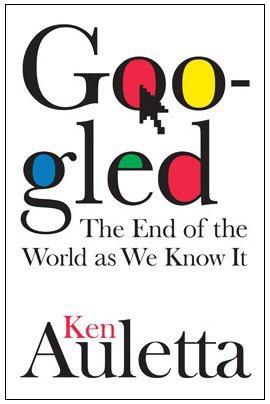
Googled: The End of the World as We Know It
by
Ken Auletta
Published 1 Jan 2009
As the CEO of Viacom, he represented the world’s then fourth-largest media company—the owner of the CBS network, of TV and radio stations, Paramount Studios, MTV and its sister cable networks, Simon & Schuster publishers, Blockbuster video, and an outdoor advertising concern, among other holdings. Short and pugnacious, Karmazin was by his own admission “always paranoid” about competitors. Two of Viacom’s biggest competitors, AOL and Time Warner, had merged to forge the world’s largest media conglomerate, and Karmazin was on the prowl for new business partners. The son of a Queens cab driver, Karmazin, then fifty-nine, had begun his career at age seventeen selling radio advertising. He was said to be so pushy that advertisers capitulated just so he would leave their offices.
…
The networks responded to the decline by cutting costs, buying local TV stations and cable properties, producing and syndicating more of their own shows, and—like the movie studios—putting their faith in hits like NBC’s Seinfeld, to save them. The media buzzwords were convergence and synergy. The common credo was that the advantage accrued to vertically integrated corporate giants—to Viacom, AOL Time Warner, News Corporation, Disney, Gannett, Tribune—those able to control every step in the process from an idea to its manufacture to its distribution. The synergies would come not from partnering with other companies but from owning content and the means to distribute it. With that in mind, media companies pushed to blur the borders between traditional industries: broadcast networks acquired cable networks; telephone companies acquired cable distribution companies; cable system owners invested in content companies and telephone services; Hollywood studios bought broadcast networks along with music and game and book companies; newspapers bought local cable and radio.
…
There were, added a still stunned Miller, “no lawyers, no nothing.” Google won the prize. The second victory came a year later, in the fall of 2005. Tim Armstrong was attending meetings in Mountain View when Eric Schmidt entered and whispered, “We’re about to lose AOL to Microsoft.” The merger between AOL and Time Warner was not working; the touted synergies had not materialized. Into this chaos stepped Microsoft, determined to catch up in search. Back when Google was still headquartered in a garage, Gates and Microsoft had had it within their grasp to build a powerful search engine when it purchased an online advertising company, LinkExchange.

Smart and Gets Things Done: Joel Spolsky's Concise Guide to Finding the Best Technical Talent
by
Joel Spolsky
Published 1 Jun 2007
Because the more people you added to that team, the more likely they would be to have one real grump who thought it was unprofessional and immature to write “Most things actually work” on your website. Not to mention the comment, “Winamp 3: Almost as new as Winamp 2!” That kind of stuff is what made us love Winamp. By the time AOL Time Warner Corporate Weenieheads got their hands on that thing, the funny stuff from the website was gone. You can just see them, fuming and festering and sniveling like Salieri in the movie Amadeus, trying to beat down all signs of creativity that might scare one old lady in Minnesota, at the cost of wiping out anything that might have made people like the product. 13 14 Smart and Gets Things Done Or look at the iPod.
…
Even if your UI design skills are lacking, as long as you force yourself to do hallway usability tests, which cost nothing, your UI will be much, much better. INDEX NUMBERS AND SYMBOLS 37signals, use of Ruby on Rails for applications, 61 A Advice for Computer Science College Students, on joelonsoftware.com, 78 Aeron chairs (Herman Miller), 48–50 AOL Time Warner, change of Winamp advertising by, 13 Austin, Robert D., Measuring and Managing Performance in Organizations by, 126 B back of the envelope questions, using in interviews, 115–116 Braithwaite, Reg, “My favourite interview question” by, 87 Bionic Office, 44 Blink: The Power of Thinking Without Thinking, by Malcolm Gladwell, 84 Brooks’ Law, regarding adding programmers, 10–11 Brooks, Frederick, The Mythical Man-Month: Essays on Software Engineering by, 10 172 Index bugs fixing before writing new code, 157–160 keeping a bug database, 156–157 C candidates, 98 chairs, buying best for programmer comfort, 48–52 chief software engineer, criteria for hiring, 81 Command and Control method based on military management, 135–140 drawbacks to in high-tech teams, 136–138 understanding military use of, 138–140 consumer electronics, 14–15 Cornell, Gary, a typical problem to simplify (personal interview), 108 Converting Capital Into Software The Works, on joelonsoftware.com, 1 cover letters, 67, 69–71, 77 Crossgain, noncompete agreement problems at, 36 “Crossgain vs.
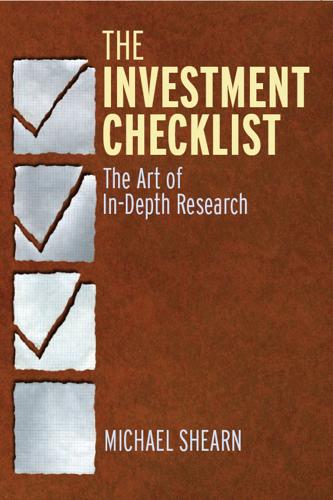
The Investment Checklist: The Art of In-Depth Research
by
Michael Shearn
Published 8 Nov 2011
Steve Case, founder and former chief executive officer and chairman of America Online (AOL), stated, “Now that the AOL Time Warner merger has closed, we have a new company for a new world—one poised to spark a transformation of the media and communications landscape—connecting, informing, and entertaining people in innovative ways that will enrich their lives.”16 Case further explained, “These unmatched assets position AOL Time Warner to speed the development of the interactive medium and capitalize on such transformational opportunities as digital music, interactive television and broadband Internet services.”17 Shortly after the merger, the share price of AOL Time Warner dropped 90 percent from its peak value.18 If the business is healthy, it will usually be able to attract higher offers.
…
Mattel at Banc of America Securities 33rd Annual Investment Conference, (Robert Eckert, CEO of Mattel), September 17, 2003, Fair Disclosure Wire, September 17, 2003. 16. Case, Stephen. “Thinking Ahead.” Executive Excellence, June 2001, p. 8. 17. “America Online and Time Warner Complete Merger to Create AOL Time Warner.” BusinessWire, January 11, 2001. 18. Standard & Poor’s Capital IQ. 19. Stoessel, Eric. “Hotel Sales are Hopping.” National Real Estate Investor. November-December 2010, p. 15. 20. Marr, Garry. “Brookfield Said Set to Re-open O&Y Bid: ‘Pennies’ Reported to be Standing in Way of a Deal.” Financial Post, August 25, 2005. 21.
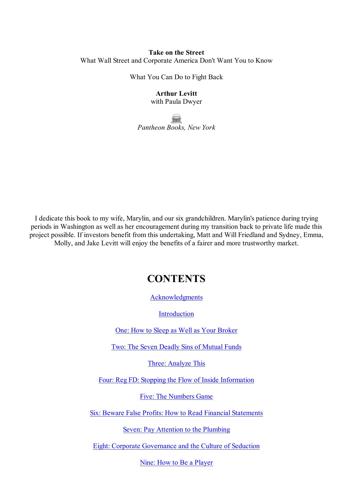
file:///C:/Documents%20and%...
by
vpavan
Instead, companies must determine annually the value of the goodwill acquired, and must write down that value on their books if they determine that it has been "impaired," or lost value, since the purchase took place. AOL Time Warner Inc., the media titan created out of the merger of America Online and Time Warner, quickly showed how goodwill accounting changes can affect shareholders' interests, and laid bare the misjudgments of managers. AOL and Time Warner announced their merger in 2000, at the height of Internet frenzy. Once the merger was completed a year later, the combined company carried $127 billion in goodwill on its balance sheet.
…
The 10-K is also where you will find the company's financial statements. This chapter will give you tools to pick apart each of the components of these statements. It will also explain some of the more popular devices companies have used to make their accounts seem rosier than they are. Such blue chips as Lucent, Motorola, AOL Time Warner, Cisco, and WorldCom have all played the numbers game. Unfortunately, you can't take the attitude that investing in high-quality companies protects you from accounting trickery. No company is completely immune from the pressure to cut corners. But many on Wall Street and in corporate America would have you believe that you need an accounting degree to understand financial statements.
…
They also wave away the write-down because it involves no hard cash, and would have no effect on future earnings. But such huge write-offs of goodwill aren't meaningless, mechanical events. They show that both companies hugely overvalued themselves and caused shareholders to overpay when the two companies merged. And writing off $54 billion means AOL Time Warner is admitting that nearly 25 percent of its $200 billion in assets is suddenly worthless. Says Jack Ciesielski, publisher of the Analysts' Accounting Observer: "How could a value impairment of that size have escaped detection?" True, the FASB's new rule is forcing AOL's hand, he concedes, but the timing is suspicious.
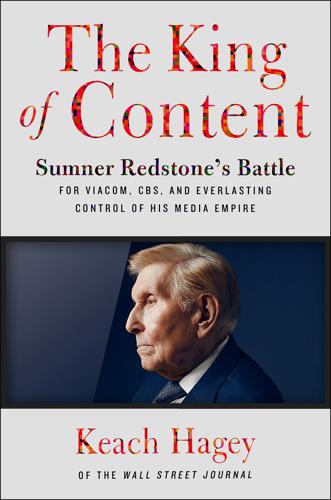
The King of Content: Sumner Redstone's Battle for Viacom, CBS, and Everlasting Control of His Media Empire
by
Keach Hagey
Published 25 Jun 2018
Like Frank Biondi before him, Karmazin “didn’t want to hang out with Sumner at all. Mel was another guy who went home at five o’clock at night,” though the workaholic Karmazin showed up at the office at the crack of dawn. Karmazin made some key acquisitions, overseeing the purchase of BET in 2001 and buying the rest of Comedy Central from partner AOL–Time Warner in 2003, and Sumner appreciated his obsession with Viacom’s stock price. But Karmazin’s cheapness at times exasperated him. A little over a year into their corporate marriage, Karmazin proposed nixing the company holiday party for top Viacom executives as a cost-cutting measure. Sumner responded by paying for the lavish affair at Sotheby’s himself, bringing his personal friend Tony Bennett in for the entertainment.
…
Within a month of her becoming vice chairman, Viacom’s loss of MySpace to archrival Rupert Murdoch would deliver an object lesson in this dynamic, with disastrous consequences for the future of both the company and her family. It wasn’t necessarily a given that MTV Networks would lose its young audience to the Internet. In early 1999, a year before the transformational AOL–Time Warner merger put all media companies on notice that they needed an aggressive online strategy, Freston gathered his channel chiefs and digital executives together to discuss the online future. “He believed that the Internet wasn’t just a transitory medium and that it was really going to be a powerful medium for the whole entertainment industry, especially in the music space,” Nicholas Butterworth, president of the MTVi Group, a division combining the online presences of channels like MTV with recent digital acquisition SonicNet, told MediaWeek in 2000.
…
But just as they were starting out on their road show, the dot-com bubble burst. MTVi pulled its IPO and soon fired a quarter of its four-hundred-person staff. “We had, like, four different people reviewing the Nelly album,” explained a Viacom spokesman.21 The crash, followed by the apocalyptic collapse of the AOL–Time Warner merger, spooked Viacom, as well as many of its competitors, from the online space for years. The company woke up in 2004 realizing it didn’t have a digital strategy. At the same moment, as chronicled in Julia Angwin’s Stealing MySpace, MTV Networks executives began to notice that fans of its shows were hanging out on MySpace, which had just surpassed Friendster as the largest social network by pageviews.22 In July 2004, MTV Networks digital executive Nick Lehman walked into his boss Jason Hirschhorn’s office and showed him that one of the most popular areas of MySpace was devoted to the MTV show Laguna Beach.
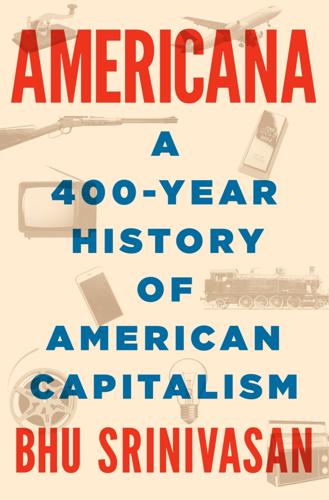
Americana: A 400-Year History of American Capitalism
by
Bhu Srinivasan
Published 25 Sep 2017
Yet it fell to the illusion of the Internet bubble, putting too much faith in the wisdom of the stock market: Time Warner agreed to merge with AOL on a 45/55 basis. AOL shareholders received 55 percent of the new entity, Time Warner 45 percent. It was the greatest heist by one set of shareholders of another in the history of mergers. It also turned out to be the finest irony of the dot-com boom. The one company that had the strongest financial metrics made its money from a dial-up service, but the whoosh-shiii-whoosh sound of slow phone modems connecting to AOL was not the future. Adding to the cruelty, Time Warner already owned its part of the high-speed broadband future—it controlled actual wires into millions of homes through Time Warner Cable.
…
Even among those who gave this theory less than full credence, the view was that the market price could be off by only a bit; few thought the market could misprice an asset by a factor of one hundred. But of course it could, and it did. When the collective irrationality of the market came to bear, several of the highest-profile dot-com companies shed 99 percent of their value. This collapse was evident with AOL Time Warner. After AOL shareholders received the majority interest in the merged company, a decade later AOL was spun off again as an independent company. This time the market gave it a value of $2 billion, $198 billion below AOL’s peak at the height of the bubble. Yet for AOL, the company that owned HBO, CNN, TBS, a storied Hollywood studio, a record label, and a cable system had given up 55 percent of itself to avoid missing out on the Internet boom.
…
postal service had funded: “Mail Service Drops Facsimile System,” New York Times, March 8, 1961. newspapers including the: See the editorial sections of the aforementioned publications on July 7, 1980. Von Meister soon formed: Alec Klein, Stealing Time: Steve Case, Jerry Levin, and the Collapse of AOL Time Warner (New York: Simon & Schuster, 2003), 14–16. with great fanfare: Ibid., 15–16. wildly popular Commodore 64: Ibid., 33. Quantum had nearly: Ibid., 35. service America Online: Ibid., 45. $30 million in: America Online Inc., Annual Report (Washington DC: Securities and Exchange Commission, 1996).

Americana
by
Bhu Srinivasan
Yet it fell to the illusion of the Internet bubble, putting too much faith in the wisdom of the stock market: Time Warner agreed to merge with AOL on a 45/55 basis. AOL shareholders received 55 percent of the new entity, Time Warner 45 percent. It was the greatest heist by one set of shareholders of another in the history of mergers. It also turned out to be the finest irony of the dot-com boom. The one company that had the strongest financial metrics made its money from a dial-up service, but the whoosh-shiii-whoosh sound of slow phone modems connecting to AOL was not the future. Adding to the cruelty, Time Warner already owned its part of the high-speed broadband future—it controlled actual wires into millions of homes through Time Warner Cable.
…
Even among those who gave this theory less than full credence, the view was that the market price could be off by only a bit; few thought the market could misprice an asset by a factor of one hundred. But of course it could, and it did. When the collective irrationality of the market came to bear, several of the highest-profile dot-com companies shed 99 percent of their value. This collapse was evident with AOL Time Warner. After AOL shareholders received the majority interest in the merged company, a decade later AOL was spun off again as an independent company. This time the market gave it a value of $2 billion, $198 billion below AOL’s peak at the height of the bubble. Yet for AOL, the company that owned HBO, CNN, TBS, a storied Hollywood studio, a record label, and a cable system had given up 55 percent of itself to avoid missing out on the Internet boom.
…
postal service had funded: “Mail Service Drops Facsimile System,” New York Times, March 8, 1961. newspapers including the: See the editorial sections of the aforementioned publications on July 7, 1980. Von Meister soon formed: Alec Klein, Stealing Time: Steve Case, Jerry Levin, and the Collapse of AOL Time Warner (New York: Simon & Schuster, 2003), 14–16. with great fanfare: Ibid., 15–16. wildly popular Commodore 64: Ibid., 33. Quantum had nearly: Ibid., 35. service America Online: Ibid., 45. $30 million in: America Online Inc., Annual Report (Washington DC: Securities and Exchange Commission, 1996).
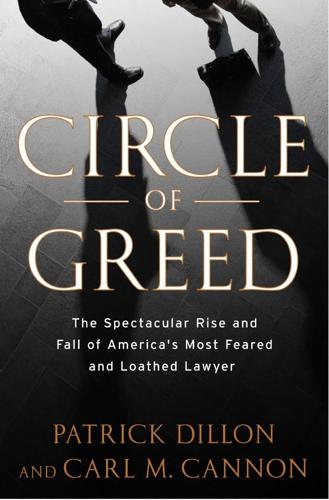
Circle of Greed: The Spectacular Rise and Fall of the Lawyer Who Brought Corporate America to Its Knees
by
Patrick Dillon
and
Carl M. Cannon
Published 2 Mar 2010
a classic example of scheme liability: Markel and Ballard, “In re: Charter Communications (Stoneridge).” a similar set of facts: Gregory A. Markel and Gregory G. Ballard, “In re Charter Communications, Inc. Securities Litigation and Simpson v. AOL Time Warner Inc.: Circuits Split Over the Validity of ‘Scheme’ Liability Under Section 10(b),” Securities Regulation Law Journal, Winter 2006, p. 246. identifying the alleged chicanery: Vaughn Marshall, “Simpson v. AOL Time Warner: The SEC and the Definition of Primary Liability under Rule 10b-5,” The RacetotheBottom.org, June 6, 2007. how they might rebound: Jaclyn Jaeger, “‘Secondary Actor’ Lawsuit Hits Fever Pitch,” Compliance Week, June 26, 2007.
…
Then the other guy says, ‘Well if he makes $24 million, then I’ve got to make $30 million.’” The subject of the interview was corporate greed. In the summer of 2002—with a consolidated lawsuit under way against dozens of defendants connected to Enron, with others against AT&T, Global Crossing, Qwest, and AOL Time Warner, with still another lawsuit in the final draft taking aim at Martha Stewart, and with an eye on Halliburton and WorldCom—Lerach had proudly positioned himself as America’s greatest fighter of corporate corruption, even as the U.S. attorney’s office in Los Angeles was investigating him for similarly motivated conduct.
…
Patti checked and learned that the two Barksdales were brothers. Was it something they could use to get Judge Barksdale off the case? He called Lerach to confer. Lerach told him that Milberg Weiss had sued Jim Barksdale and that he was a defendant in a current Lerach Coughlin lawsuit against AOL/Time Warner—Barksdale served on its board. After he hung up the phone, Lerach directed an associate, Eric Isaacson, to draft a motion calling for Barksdale’s recusal. Speed was essential, and Isaacson finished in two days. The motion reached the clerk’s office in New Orleans with little time to spare—but enough for Judge Barksdale to recognize that he had no choice but to step aside.

How Music Got Free: The End of an Industry, the Turn of the Century, and the Patient Zero of Piracy
by
Stephen Witt
Published 15 Jun 2015
In January 2000, Morris’ old bosses at Time Warner announced a startling transaction: they would be selling their company—their whole company—to America Online, the company whose business model was to drown the earth in unsolicited junk mail CDs. In exchange for $164 billion of hyperinflated AOL stock, Time Warner would sell it all—the magazines, the cable stations, the music labels, all of it—to an upstart Internet service provider trading at 200 times earnings that even an unsophisticated technology observer like Morris could see was a total house of cards. It was the stupidest transaction in the history of organized capitalism.
…
Despite the impressive growth in its market share, it was all Universal could do to keep its sales numbers flat. Everywhere else there was carnage. Tower Records was hurtling toward bankruptcy. Sony’s Columbia imprint was still fighting a civil war against its own consumer electronics division. EMI was buried in debt. Bertelsmann was offering its music assets up for sale. And then there was AOL Time Warner. Morris’ old bosses were presiding over a titanic disaster; in April 2002 the company had announced a 54-billion-dollar loss, the largest in American history. Technically the loss had been a “goodwill impairment charge.” That was an accountant’s way of saying they’d paid too much for something—in this case, the absurdly overvalued America Online, purchased at the height of the dot-com boom.
…
“black redneck” Facebook comment left on a picture of Glover with the Quad Squad. charged with felony embezzlement Chaney Sims later pleaded guilty to possession of stolen property, a misdemeanor. CHAPTER 12 “a bunch of drunken sailors nursing a hangover” Frank Pellegrini, “What AOL Time Warner’s $54 Billion Loss Means,” Time, April 25, 2002. up to 40 gigabytes of storage The third-generation iPod, released April 2003. “people don’t know what they want until you show it to them” Andy Reinhardt, “Steve Jobs on Apple’s Resurgence: Not a One-Man Show,” BusinessWeek, May 12, 1998.
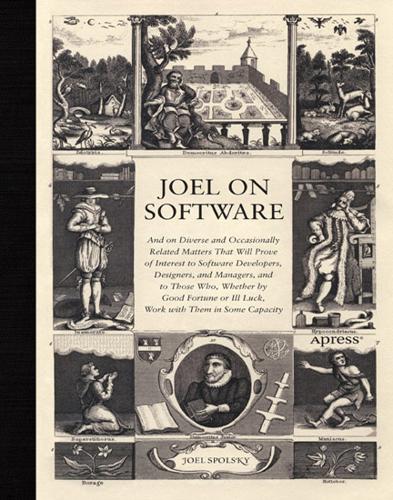
Joel on Software
by
Joel Spolsky
Published 1 Aug 2004
When Netscape released Mozilla as open source, it was because they saw an opportunity to lower the cost of developing the browser. So they could get the commodity benefits at a lower cost. Later, AOL/Time Warner acquired Netscape. The server software, which was supposed to be the beneficiary of commodity browsers, wasn't doing all that well, and was jettisoned. Now, why would AOL/Time Warner continue to invest anything in open source? AOL/Time Warner is an entertainment company. Entertainment companies are the complement of entertainment delivery platforms of all types, including web browsers. This giant conglomerate's strategic interest is to make entertainment delivery—web browsers—a commodity for which nobody can charge money.

Extreme Money: Masters of the Universe and the Cult of Risk
by
Satyajit Das
Published 14 Oct 2011
AOL had revenues of $5.2 billion and had made $879 million over the previous year, one of the few Internet companies to make money. AOL was valued by the stock market at $163 billion. AOL bought Time Warner for $165 billion. At the press conference announcing the merger, overturning their respective traditional corporate cultures, Gerald Levin, Time Warner’s chairman, appeared in an open-necked shirt and khakis, while Steve Case, AOL chairman, was clad uncharacteristically in a suit and tie. Case would be the chairman of the combined entity. The stock’s new ticker symbol would be AOL. Time Warner shareholders got 45 percent of the new AOL Time Warner, despite being the more senior partner. Levin endorsed Internet stocks: “The new media stock valuations are real.”
…
British Aluminium was not worth it at that price.”19 The advice may have been poor but Warburg did not do poorly out of the transaction. Acquisitions became common as a new generation of more aggressive businessmen assumed power. In January 2000, Time Warner and AOL agreed to merge.20 Time Warner was a sprawling conglomerate with publishing, film, television, entertainment, and media interests. AOL, originally America Online, was a young Internet company synonymous with the catchy “You’ve got mail” campaign. Time Warner had $26 billion in revenues, $6 billion in cash flows, a large amount of debt, and was valued at $83.5 billion prior to the merger. AOL had revenues of $5.2 billion and had made $879 million over the previous year, one of the few Internet companies to make money.
…
Riding the Internet boom to perfection, building up the stock price to stratospheric levels, AOL’s shares were a currency to purchase real income and cash-producing assets. Stock prices no longer represented any real underlying business or earnings. It was monopoly money, convertible into something real if others believed in its value. In 2002, as the Internet bubble collapsed, AOL Time Warner took the largest writedown in corporate history, recording a loss of $54 billion. Old media managers reasserted control, forcing out Case and Levin. Rio Tinto was old economy, formed in 1873 when British investors purchased the eponymous copper, silver, and gold mine in Huelva, dating back thousands of years to Iberians, Tartessians, Phoenicians, Greeks, Romans, Visigoths, and Moors.
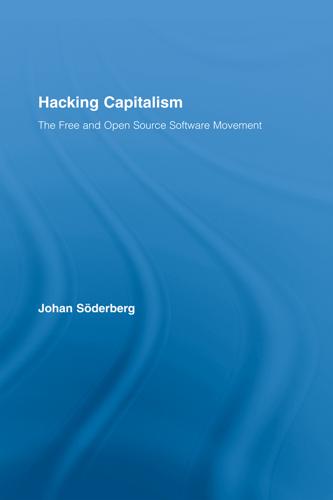
Hacking Capitalism
by
Söderberg, Johan; Söderberg, Johan;
Distributing censorship and surveillance to Internet Service Providers has one drawback, from the perspective of regulators, in that counterfeiters can hire the services of another company, or set up their own shop. But the options are declining fast since ownership over the network infrastructure is concentrated into ever fewer hands. After a number of mergers, ownership over the cables is for all practical purposes divided up between AT&T and AOL Time Warner. These giants can easily strangle access to a large part of the network and pass decrees down to smaller Internet Service Providers. No less detrimental is their intent to turn the Internet into an interactive cable TV set.49 The next generation of wires would realise this scenario by discriminating the traffic going upstream from the client (user) to the server, while giving priority to traffic going downstream (downloading of data) from server to client.
…
In WASTE the connections are established between a small circle of people who trust each other from the start and the communication, in most cases consisting of illegally copied files, is heavily encrypted. The law authorities have a very hard time to find out about the infringements taking place in the private network. In the short time that WASTE was made available by Nullsoft the code spread like wildfire in the FOSS community. The whereabouts of the application was put out of reach of AOL Time Warner. After that the plug was finally pulled on Nullsoft. The story about OpenNap, Gnutella and WASTE gives a flavour of what can happen when the means to write algorithms are dispersed among the proletariat. FOSS licenses works in a way similar to the architecture of Gnutella. By decentralising the running of the technology, Gnutella’s authors gave up their control over their creation.
…
Index Aestethic innovation 64, 68, 177 Adorno, Theodor 65, 70, 168, 191–192 Advanced Research Projects Agency, see ARPA Affluent society 99–101 Aglietta, Michel 59 Alienation 10, 156–159, 173, 182, 188, 190 Allopoietic 134–135 Altair 17 Althusser, Louis 77 Analytical Engine 3 Anti-production 120, 213 n.12 AOL Time Warner 89, 91, 125 Apache 24, 28, 38, 44 Apple 17 ARPA (advanced research projects agency) 13–15 AT&T (american telephone and telegraph) 13–15, 19, 23–24, 91, 116 Audience power 66, 68, 198 n.47, 204 n.40 Authorship 74, 78, 80–82, 112, 114, 125, 128–129, 138, 154, 160, 174, 206 n.9 Autonomous Marxism 6–7, 52, 55, 176, 194 n.18, 201 n.9 Autopoietic 134–135, 155 Axelos, Kostas 158–159 Babbage, Charles 3–4 Back Orifice 80 Barbrook, Richard 150, 216 n.27 Bataille, George 147, 149, 154, 216 n.20 Baudrillard, Jean 64, 103, 105, 109, 127, 202 n.19, 211 n.9, n.12 BBS (bulletin board systems) 96 Beauty of the Baud 3, 184 Bell, Daniel 51, 54, 100, 170–171, 173 Bell, Graham 11 Bell laboratory 14 Benjamin, Walter 65, 207 n.18, 210 n.49 Benkler, Yochai 139–140, Berkeley internet name domain, see BIND Berkeley software distribution, see BSD Berne convention 85, 208 n.25 Bertelsmann 124 Biegel, Stuart 91 Bijker, Wiebe 54–55, 203 n.24 Binary code 19, 21–22, 97, 195 n.16 BIND (Berkeley internet name domain) 25 Biometric technology 92–93 Black, Edwin 194 n.15 Boomerang externalities 146 Bowles, Samuel 173 Boyle, James 117, 208 n.24 Brand, Stewart 16, 69 Braverman, Harry 130–133 British cultural studies 9, 65–66 Brooks, Fred 184 BSD (Berkeley software distribution) 15, 23–24, 38 Bulletin board systems, see BBS Burghardt, Gordon 166–167 Bush, Vannevar 12 Caffentzis, George 61–63 Caillois, Roger 166–167, 182 Castells, Manuel 51, 145, 200 n.3, 202 n.19, 216 n.15 CC (Creative commons) 4, 41, 78 Censorship 4, 79–80, 82, 91, 97, 178, 189 CERN (Conseil européen pour la recherche nucléaire) 25 Certeau, Michel de 66, 112, 182 Chaos computer club 180 Charismatic code 153, 217 n.33 Chiapello, Eve 163 Circulating capital 120, 145 Class consciousness 18, 178, 180–181 for-itself 188 struggle 4, 7, 44, 47–48, 54, 56, 67, 72, 76, 103–104, 159, 175–178, 188, 203 n.20, 204 n.27, 212 n.12 Clickwrap license, see shrinkwrap license Coase, Ronald 140 Cohen, Gerald 54 Collective invention, 213 n.6 Collins, Hugh 76–77 Commodification of information 8, 31, 199 n.60, Commodity exchange theory 75–76, 90 Commons 119, 122, 129, 135, 137, 145–148, 150–151, 171–172, 184, 191, 199 n.57, 216 n.18 Community for-itself 183 FOSS developers 21, 23 Compiling 195 n.16 Computer literacy 131–132 Constant capital 127 Copyleft 20–22, 34, 196 n.19, n.21, 198 n.44 Copyright law 8, 18–22, 78–79, 82–85, 94, 98, 112, 113, 143, 154, 181, 195 n.14, 196 n.19, 207 n.15, 208 n.22 Crackers 69, 98, 113, 151, 153, 155, 183, 188, 217 n.35 Creative class 51, 61, 173–174 Creative commons, see CC Cross, Gary 101 Cultural workers 82, 163–164, 192 Culture industry 57, 70, 73, 75, 85, 106, 112, 168, 173, 205 n.46 Cyber attacks 199 n.61 feminism 30, 214 n.32 libertarianism 4, 90, 216 n.27 marx 52 politics 4, 30, 48, 69 space 11, 88, 150 Cycles of struggle 176–177 Cygnus 32–34 Darknet 97 Davies, Donald 195 n.5 Debian 123 Debian-women 30 Debord, Guy 103, 211 n.9 Decompiling 195 n.16 DeCSS see DVD-Jon Deleuze, Gilles 135, 213 n.12, 215 n.34 Denial-of-service attacks 1, 193 n.3 Derrida, Jacques 57, 149, 153, 216 n.24 Desire 18, 27, 48, 105, 109, 136, 155–156, 161, 174, 185–186 Deskilling 5, 9, 45, 97, 111, 130–131, 209 n.44, 210 n.56 Desktop factory 186 Developing countries and FOSS 30, 87, 96, 210 n.54 Difference Engine 3 Digital rigths management, see DRM DRM (digital rights management) 22, 42, 91, 183, 209 n.45 DVD-Jon 87–88, 91 Edelman, Bernard 77–78, 80, 207 n.16 Edwards, Richard 89 Electro-hippies 178 Electronic Frontier Foundation 58, 208 n.21 Ellickson, Robert 217 n.30 Empire 6 Enclosure movement 71, 129, 171 Engels, Friedrich 53, 115 Enzensberger, Hans 194 n.16, 210 n.49 Excess of expenditure 49, 100, 136, 147–148, 153–155, 171, 174 Exchange value 45, 56, 103–105, 109, 144, 211 n.12 Fan media production 112–113, 127, 164, 183, 191, 212 n.20, 194 n.16 Fanning, Shawn 124–125 Felsenstein, Lee 17 Filesharing networks 4, 8, 10, 31, 73, 93–94, 113, 127, 137, 150–153, 189 Firefox 37, Fisher, William 74–75 Fixed capital 15, 27, 39, 68 Flextronics 96 Florida, Richard 51, 173–174 Fordism 59, 67, 101, 203 n.26 Formal subsumption 56, 118 FOSS (free and open source) community 5, 8, 28–29, 38, 49, 111, 125, 133, 172, 177 development model 6, 9, 24, 41, 49, 115, 121, 137, 139–140, 190 license 8, 20, 28, 40, 78, 122, 125, 190 movement 26–27, 31–32, 38, 43, 50, 116, 133, 150, 184, 195 n.17 Foucault, Michel 48, 57, 76, 80, 128, 181 Frankel, Justin 124–125 Frankfurt School 57, 160 Free and open source software, see FOSS Freenet 80, 214 n.18, Free software foundation 19, 22–23, 37, 73, 126, 179–180, 196 n.20, n.23 movement 151, 195 n.17 Free speach not free beer 32, 73, 123 French regulation school 59, 204 n.27 French revolution 1–2, 79, 159, 161, 165, 187 Friedman, Andrew 133 Frow, John 151 Gaines, Jane 207 n.20 Garnham, Nicholas 102 Gates, Bill 4 Gay, Paul du 106–107 General economy 147 intellect 60, 63, 184 public license, see GPL Giddens, Anthony 200 n.6 Gift economy 10, 54, 100, 137, 148–152 Gintis, Herbert 173 Gnome 35, GNU (GNU is not Unix) book 210 n.55 Emacs 20, 32 /Linux 4, 15, 22–24, 26, 28, 31–35, 38–39, 43–44, 47, 87, 123, 163, 183, 196 n.23, n.28 Gnutella 124–125, 153, 214 n.18 Google 41 Gopher 25 Gosling, James 20 Gouldner, Alvin 201 n.12 GPL (General public license) 19–24, 27, 31–32, 34–35, 37, 96, 129, 185, 196 n.19, n.20, n.21, 197 n.44 Gracenote 41, 199 n.57 Guattari, Felix 135, 213 n.12, 215 n.34 Habermas, Jurgen 202 n.16 Hacker manifesto 28, 30, 172 spirit 44, 108, 174, 199 n.66 Hacktivists 16, 55, 84, 178, 180, 182 Haeksen 30, 197 n.41 Halloween Documents 26 Haraway, Donna 197 n.42 Hardin, Garrett 145–146, 148 Hardt, Michael 6, 47–48, 52, 60, 194 n.18, 204 n.30 Hardware hackers 7, 17–18, 96 Harrison, Bennett 140–141 Harvey, David 95 Haug, Wolfgang 104–105 Hayes, Dennis 44 Hayles, Katherine 71–72, 203 n.22 Hearn, Francis 168, 182 Heeles, Paul 108 Hegel, G.W.F. 52–53, 56, 74, 157 Heidegger, Martin 160 Heller, Michael 148 High-tech cottage industry 139 gift economy 10, 100, 137, 150 Himanen, Pekka 100, 108, 174, 199 n.66 Hippel, Eric von 205 n.44 Hirsch, Fred 102, 171 Hobsbawm, Eric 76, 189, 193 n.6 Holloway, John 7 Homebrew computer club 17, 185 Homo ludens 165 Horkheimer, Max 65, 70, 168 Howard, Michael 114–115 Huizinga, Johan 165–167, 182 Human genome project 39, 93 Hyde, Lewis 152, IBM 5, 7, 17–19, 24, 38, 43–44, 47, 73, 92, 108, 128, 142, 194 n.15 Identification 90–93, 189 Identity 98, 110, 123, 174–177, 181 Illich, Ivan 128, Immaterial labour 52, 60–61, 71 Independent media centre (IMC) 126 Information age 8, 19, 31, 50–54, 57, 60, 108, 180, 182, 199 n.66, 202 n.19, 203 n.26 exeptionalism 69–70, 73, 132, society 50 Instrumentality 10, 49, 56, 116, 160, Intel 17, 38–39, 43, 92, 198 n.52 Intellectual property enforcement 5, 43, 83, 85, 85, 88, 94, 98, 133 regime 19, 35, 42, 65, 72–75, 80, 82–85, 111, 113–114, 119, 123, 154, 174 Internet explorer 36–37 Jacquard Joseph-Marie 1, 3 Jacquard loom, 1, 193 n.1, n.2, n.4 Jameson, Fredric 56, 64, 201 n.8, 202 n.17 Jefferson, Thomas 69, 205 n.50 Jenkins, Henry 212 n.20 Jessop, Bob 143, 216 n.14 Johansen, Jon, see DVD-Jon Johnson-Forrest Tendency 143 Kant, Immanuel 74, 161 Kautsky, Karl 53–54 KDE (K desktop environment) 35 Kenney, Martin 39, 67 Keynesianism 143, 170 King, John 114–115 Kirchheimer Otto 77 Kloppenburg, Jack 90 Kopytoff, Igor 150 Kropotkin, Peter 129 Labour contract of the outlaw 123 Laclau, Ernesto 175 Lamer 58, 153, 155 Landsat system 119 Late capitalism 56, 101, 104, 120, 168, 188, 201 n.8, 202 n.17, n.18 Lazzarato, Maurizio 60–62 Lenin, Vladimir 4, 115 Lessig, Lawrence 70, 88 Lévi-Strauss, Claude 152, 217 n.34 Levy, Steven 17 Libertarianism 18, 34, 50, 90, 182, 196 n.28, 216 n.27 Library economy 136, 151–153, 155 Liebowitz, Stan 122–123, 144, Linux, see also GNU/Linux chix 30 kernel 21, 23, 49, 193 n.7, 196 n.23 Liu, Alan 48 Locke, John 74, 78, 147, 154 Luddites 1–2, 189 Lukács, Georg 162, 178–181, 184 Lury, Celia 81 Lyotard, Jean-Francois 201 n.10 Machlup, Fritz 69, 206 n.58 Magic circle 165, 167, 190 Make-believe markets 145–146, 148, 155 Mallet, Serge 60, 204 n.29 Malinowski, Bonislaw 148 Mandel, Ernest 56, 59–60, 62–63, 184, 202 n.17, n.18, n.19 Marconi Wireless Telegraph Company 116 Marcuse, Herbert 3, 10, 116, 159–164, 182, 184 Marx, Karl 2, 4, 7, 48, 50, 53–54, 56–57, 60–61, 64, 81, 88, 101, 104, 109–111, 114–115, 118–119, 133, 139, 141, 144–145, 156–162, 173–175, 197 n.32, 201 n.12, 211 n.5, 212 n.19, 215 n.4 Maslow, Abraham 99–101, 211 n.2 Mass worker 7, 176 Maturana, Humberto 134, 136s Mauss, Marcel 148–149 McBride, Darl 31, 87 McLuhan, Marshall 58 McRobbie, Angela 108 Means of production 9, 48, 57, 81, 116, 129–130, 135, 186, 192 Mentor, the 172 Micro-capital 141 Microsoft 4, 19, 24, 26, 34, 36–39, 42–43, 63, 87, 92, 96, 144 Mill, John Stuart 69 Minitel 14 Minix 23–24 Moglen, Eben 4, 126 Mokyr, Joel 55 Moody, Glen 35, 37, 130 Moore, Fred 17 Morris-Suzuki, Tessa 63–64 Mosaic 36, 198 n.50 Mosco, Vincent, 204 n.40 Motion pictures association of america, see MPAA Mouffe, Chantal 175 Mozilla 36–37, 198 n.50 Mozilla crypto group 126 MPAA (motion pictures association of america) 42, 87–88, 199 n.58, 209 n.36 Multitude 6–7, 60, 181 Mumford, Lewis 134, 147 Naples, Nancy 200 n.77 Napster 124–125, 213 n.17 Naughton, John 12, 15 N/C technology 45–46, 131 Negri, Antonio 6–7, 47–48, 52, 56–57, 60–61, 176–177, 194 n.18, 201 n.9, n.15, 202 n.16, 204 n.31, n.33 Neo-Luddism 134 Netscape 36–38, 126 Network externalities 38, 144 firm 137, 141–142, 144 industry 27, 137 science 141, 215 n.2 society 51, 137, 142 Neuman, Franz 77 Neumann, John von 61, 63 New economy 124, 132, 144 New left 16–17, 150–151, 157, 212 n.12 Noble, David 45, 131, 206 n.59 Norton, Bruce 202 n.17 Nullsoft 125 Nupedia 128 Oekonux 5 Offe, Claus 214 n.30 Office despotism 18 Opencores project 96 Open marxism 7 Open source car 185 development labs 43 initiative 36, 38–41, 78, 180 Organised labour 27, 41, 69, 72, 95–96, 131–132, 141–142, 188, 190 Pashukanis, Evgeny 75–77, 206 n.2 Patent costs 116–118 expansion 22, 39, 83–84, 208 n.24 pools 119 Peer-to-peer filesharing networks 31, 91, 123– 125, 151 labour relations 123, 129 Perelman, Michael 86, 171 Perpetual innovation economy 64, 120 Petty commodity trader 61, 81, 159 PGP (pretty good privacy) 80 Phone phreaks 16, 96–97 Pirate sharing 69, 122–123, 183, 209 n.33, n.45 Play drive 10, 18, 49, 154, 161–162 struggle 3, 10, 156, 174, 182, 190–192 Political subject 156, 174 Poster, Mark 128 Post- fordism 8, 59–61, 67, 81, 107, 116, 133, 135, 139–140, 163, 168, 176, 183, 203 n.26, 204 n.27 industrialism 5, 51–52, 54, 56, 60–61, 71, 100, 103, 130, 137, 139 marxism 175, 177 modern capitalism, 52, 56, 61, 64, 73, 101, 104, 120, 145, 168, 175–176, 188, 216 n.20 Poulantzas, Nicos 218 n.18 Pretty good privacy, see PGP Professional worker 176 Proprietary software 9, 16, 19, 21, 24, 26–27, 33–34, 38, 41, 115, 129–130, 139, 144, 198 n.46, n.52, 200 n.71 Prosumer 106–108 Put to work 8, 48, 73, 82, 177, 184 Qt 35 Radio amateur 17, 96, 185, 191 Radio frequency identifiers, see RFID RAND (research and development) 13 Rand, Ayn 206 n.61 Raymond, Eric 25–27, 196 n.28, 197 n.29 Real subsumption 56, 118, 135 Record industry association of america, see RIAA Recuperation 49, 164, 182 Red Hat 26, 32–35, 43, 47, 68, 196 n.27, 197 n.33, n.44, 198 n.45 Refusal of work 44, 108 Rehn, Alf 217 n.35 Representation politics 66, 110, 191 Research and development, see RAND Restrictive economy, see general economy RFID (radio frequency identifiers) 92 RIAA (record industry association of america) 42, 124–125, 153, 199 n.58 Robins, Kevin 194 n.17, 209 n.44 Romanticism 2, 81–82, 159, 162–163 Ross, Andrew 46, 199 n.66 Sabotage 1, 10, 46, 111, 188, 193 n.6 Sahlins, Marshall 70 Sanger, Larry 128 Sarnoff law 66 Scarcity 70–71, 99–101, 109, 112–113, 130, 147, 155, 160, 169, 190 Schiller, Dan 71, Schiller, Friedrich 23, 10, 154, 160–163, 184 Schumpeterian competition state 143 Schumpeter, Joseph 30 SCO/Caldera 43–44, 87 Self-administrated poverty 172 Sennett, Richard 45 SETI@home 127 Sham property 141 Shiva, Vandana 209 n.45 Shrinkwrap license 21 Shy, Oz 122, 143–144 Silicon Valley 44, 180 Simputer 210 n.54 Sitecom Germany GmbH 22 Situationists 150 Smythe, Dallas 66–67 Social bandit 76, 93–94, 98, 189 division of labour 4, 77, 99, 123, 149, 158–159, 164, 174, 187–188, 192, 205 n.44, 210 n.49 factory 47–48, 56, 64, 68, 89, 177 labour 38, 56, 71 planning theory 74–75 taylorism 90, 97–98, 209 n.44 worker 7, 60, 176–177 Sony 42 Stallman, Richard 19–20, 32, 37, 73, 179, 195 n.17, 196 n.23, 200 n.71 Strahilevitz, Jacob 152–153, 217 n.33 Stefik, Mark 92 Sterling, Bruce 11, 15 Strahilevitz, Jacob 152–153, 217 n.33 Surplus labour 8, 47–48, 61, 63, 67, 211 n.5 profit business model 34, 68 value 33–34, 47, 50, 61–64, 66–68, 101, 105, 110–111, 118, 120–121, 134, 156, 202 n.16, 204 n.40, 213 n.12, Surveillance 4–5, 85, 90–91, 97, 143, 145, 189, 214 n.18, Tanenbaum, Andrew 23 Taylorism 8, 45–46, 48, 90, 115, 132 Techies 16, 18, 30, 178, 182 Technical division of labour 27, 48, 115, 123, 132, 142, 155, 199 n.68 Technicist 54, 201 n.6 Technological american party 16, 18 Technological determinism 57–58, 182 Terranova, Tiziana 68 Toffler, Alvin 51, 106 Torvalds, Linus 21–23, 26–27, 49, 193 n.7, 197 n.32 Travis, Hannibal 207 n.15 TRIPS 86, 208 n.29 Troll Tech 35 Tronti, Mario 47 Trusted computing 92, 96 Unix 14–15, 19–20, 23–24, 43, 87, 195 n.7 User centred development 9, 27, 41, 65–68, 129, 131, 133, 192, 205 n.44 community 50, 68, 111, 123 friendliness 17, 45, 90, 98 Use value 68, 71, 101–105, 109, 113, 120, 122, 129, 144, 147, 153, 155, 211 n.9, n.12 Vaneigem Raoul 212 n.21 Varela, Francisco 134, 136 Variable capital 127 Veblen, Torsten 211 n.7 Villanueva, Edgar 144 Virno, Paulo 57, 73, 172, 177 Virtual community 152–153, 217 n.30 space 90, 92–93, 95, 184, 203 n.22, 217 n.33 Volosinov, Valentin 202 n.20 Voluntarism 5, 29, 179 Voluntary labour 2, 8, 107, 129, 166 Wales, Jimmy 128 Warez 153, 183, 217 n.35 Wark, McKenzie 177 W.a.s.t.e. 125 Watt, Duncan 141–142 Watt, James 166 Watt, Richard 213 n.14 Wayner, Peter 151–152 Webster, Frank 194 n.17, 200 n.3, 201 n.7, 209 n.44 Wetware 133–135 White collar working class 48, 97, 130, 200 n.72 hat hacking 180 Whole Earth Catalog 16 Wiener, Norbert 12 Wikipedia 128–129 Williams, Raymond 58 Windows 25, 41, 43, 86–87, 123, 126, 163, 183 Winner, Langdon 16, 203 n.25 WIPO (World Intellectual Property Organisation) 18, 83, 91 Wired Magazine 18, 58, 180 Witheford, Nick-Dyer 51, 204 n.31 Wolfgang, Haug 104–105 Wolf, Naomi 105 Wood, Stephen 131 Workfare state 135, 171 World Intellectual Property Organisation, see WIPO World Trade Organisation, see WTO Worshipful Company of Stationers London 79 Wright, Steve 201 n.9 WTO (World Trade Organisation) 86, 126, 178 Yahoo 41 Young, Robert 26–27, 33, 126, 196 n.27, 198 n.46, n.52 Youth international party line 16 Zero work 49 Zizek, Slavoj 4, 175

The Code: Silicon Valley and the Remaking of America
by
Margaret O'Mara
Published 8 Jul 2019
A few months after Palihapitiya joined the company, Winamp hit the jackpot, getting acquired by America Online for a deal worth close to $100 million. Six months after that, in January 2000, AOL bought media giant Time Warner in a jaw-dropping $165 billion deal that was a harbinger of the information society to come—one where tech companies became powerful platforms for news delivery and social interaction.3 The AOL-Time Warner octopus now encompassed everything from the instant-messaging services used by teenagers to the newsmagazines read by their parents to the granddaddy of all cable-news networks, CNN.
…
Now, instead of working for a scrappy start-up, Chamath Palihapitiya, the risk-seeking migrant with start-up fever, was working for one of the world’s largest media companies. But perhaps it was a lucky break. For within months of the AOL-Time Warner deal, the dot-com fever broke and Wall Street and venture investment abruptly stopped flowing into San Francisco’s feverish start-up scene. Without cash, all kinds of young companies—online delivery services, search engines, enterprise software companies—bit the dust. AOL’s stock price tumbled along with the rest, and the merger with Time Warner rapidly turned toxic. People were getting fired left and right, and Palihapitiya knew he couldn’t be one of them: leaving AOL would mean losing his visa.
…
Walter Mossberg, “Behind the Lawsuit: Napster Provides Model for Music Distribution,” The Wall Street Journal, May 11, 2000, C1. 3. Cyrus Farivar, “Winamp’s Woes: How the Greatest MP3 Player Undid Itself,” Ars Technica, July 3, 2017; “The Biggest Media Merger Yet,” The New York Times, January 11, 2000, A24. On the AOL Time Warner merger and its effects, see Kara Swisher with Lisa Dickey, There Must Be a Pony in Here Somewhere: The AOL Time Warner Debacle (New York: Three Rivers Press, 2003). CHAPTER 23: THE INTERNET IS YOU 1. Joint Venture Silicon Valley, 2002 Index (Palo Alto, Calif.: Joint Venture Silicon Valley, 2002); Gregory Zuckerman, “A Year After the Peak, How the Mighty Have Fallen,” The Wall Street Journal, March 5, 2001, C1; Scott Berinato, “What When Wrong at Cisco in 2001,” CIO Magazine 14, no. 20 (August 2001): 52–59. 2.
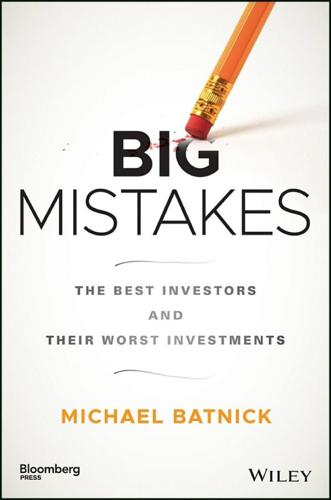
Big Mistakes: The Best Investors and Their Worst Investments
by
Michael Batnick
Published 21 May 2018
Shortly after the merger, Bogle was feeling pretty smart about their shrewd business decision. In a recent interview, he said, “The first five years you would have described Bogle as a genius. And at the end of the first 10 years, roughly, you would have said: the worst merger in history, including AOL and Time Warner. It all fell apart. Their management skills were zero. They ruined the fund they started, Ivest. They started two more and ruined both. And they ruined Wellington Fund.”10 Like so many other funds, Wellington got seduced and ultimately chewed up and spit out by the go‐go years of the 1960s: The term “go‐go” came to designate a method of operating in the stock market – a method that was, to be sure, free, fast, and lively, and certainly in some cases attended by joy, merriment and hubbub.
…
Index 13D registration, 90 101 Years on Wall Street (Brown), 50 Abbot Labs, 91 ABX Index, 134 Ackman, Bill, 3, 85, 88 CNN interview, 92 confidence, 88–89 persistence, 89 Adams, Evelyn, 131 Airbnb, 151 Alcoa, trading, 157 Alfond, Harold, 81 Amazon, 139–140 earnings, 7 Animal spirits, 126 “Anomalies: The Endowment Effect, Loss Aversion, and Status Quo Bias” (Kahneman/Knetsch/Thaler), 75 AOL/Time Warner, merger, 49 Apple earnings, certainty (example), 120 shareholder wealth, 109 Arthur Lipper, tracking, 70 Art of Contrary Thinking, The, (Neill), 67 Assets under management (AUM), reduction, 61 Automatic, Sacca investment, 149 Bacon, Louis, 103 Balanced fund, transformation, 50 Bank of England, currency defense, 103 Bank of Taiwan, investments, 40 Baruch, Bernard, 7 Batnick, Michael, 155 Behavior gap, 99 Bell, Alexander Graham, 29 Benchmarks, 77 Benjamin Graham Joint Account, 7 Berkowitz, David, 88 Berkshire Hathaway Buffett control, 76 drawdowns, 143 market cap, 79 recovery, 114 shares, decline, 142 stock, Buffett purchase, 76 value loss, 57 Bernstein, Peter, 121, 164 Bernstein, William, 37 Betting on Zero (Silvan), 94 Betty Crocker, comparison, 91 Black Monday, 102 Black‐Scholes option pricing model, 39–40 Blood money, 91 Blue Chip Stamps, 141–142 Bogle, Jack, 45, 159 firing (Wellington Management), 51 impact, 47 performance, problems, 51 Boston Security Analysis Society, Samuelson remarks, 51 Brokerage house, offer, 20 Brokers, long‐term relationship, 61 Brooks, John, 68 Brown, John Dennis, 50 Brown, Josh, 162–163 Bucket shops closure, 18 usage, 16 Buffalo Evening News (purchase), 142 Buffett, Warren, 4, 10, 73, 140 annual forecasts, 77 circle of competence, 80 comparison, 100 gross returns, 76 investment philosophy, 76–77 limited partnership, closure, 111 Oracle of Omaha, 76, 78 Pearson, contrast, 114 Bull market, margin for error, 67 Cabot, Walter, 50 Capital, usage, 17 Carr, Fred, 69 Cayne, James, 40 Charlie Munger: The Complete Investor (Griffin), 81 Charmin, comparison, 91 Chartered Financial Analyst (CFA) exam, 158–159 Chasing the Last Laugh (Zacks), 27 Chesapeake & Atlantic, 20–21 Chicago, Burlington and Quincy Railroad, 16 Chicago Herald (problems), 30 Church and Dwight, value, 91 Churchill, Winston, 91 Circle of competence (Buffett), 80 Cisco, gains, 57 Citron Research, 113–114 Clemens, Samuel.
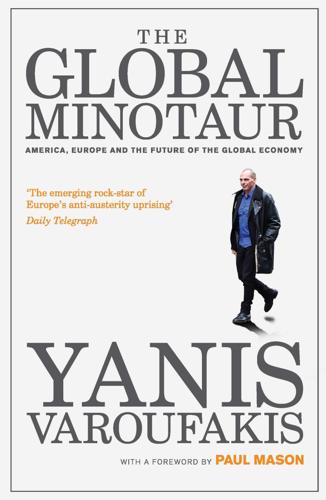
The Global Minotaur
by
Yanis Varoufakis
and
Paul Mason
Published 4 Jul 2015
The valuations were nothing more than bubbles waiting to burst. And burst they did, just before the Crash of 2008. In 2007, DaimlerChrysler broke up and Daimler sold Chrysler for a sad $500 million (taking a ‘haircut’ of $35.5 billion on the price it had paid in 1998, lost interest not included). It was a similar story with AOL-Time Warner: by 2007, its Wall Street capitalization had been revised down from $350 billion to $29 billion, and the break-up left both companies reeling. On the other side of the Atlantic, in the other Anglo-Celtic economy that the Europeans had so much admired before 2008, a similar game was unfolding in the City of London.
…
ABN-Amro, takeover by RBS, 119–20 ACE (aeronautic–computer–electronics) complex, 83 Acheson, Dean, 68 Adenauer, Konrad, 74 Afghanistan, proposed US invasion, 106–7 Africa: colonization, 79; investment in, 214, 218, 252, 253 agriculture, 26, 31 AIG (American Insurance Group), 150, 153, 159 Akins, James, 97 Allied Control Council, 70 America see US (United States) American Civil War, 40 Anglo-Celtic model, 12–13, 23, 117, 199 Anglo-Celtic societies, 20, 128–9 Anglo Irish Bank, 158 Angola, effect of China on, 214–15 AOL-Time Warner, 117 apartheid, in the US, 84 aporia, 1, 3–4, 25, 33, 146 Argentina: Crash of 2008, 163; currency unions, 61, 65; effect of China on, 215, 218; financial crisis, 190; trade with Asia, 215 asabiyyah (solidarity), 33–4 Asia: investment in, 191, 215; investors from, 175; reaction to the Crash of 2008, 13; surplus output, 184; US-controlled, 78 see also East Asia; South East Asia; specific countries ATMs (automated telling machines): virtual, 8, 9; Volcker on, 122 Australia: effect of China on, 214; house prices, 128, 129, 129; Reserve Bank, 160 balance, global, 22 Bank of America, 153, 157, 158 Bank of Canada, 148, 155 Bank of Denmark, 157 Bank of England: and Barings Bank, 40; and the Crash of 2008, 151, 155, 156, 158; and Northern Rock, 148; rates, 148, 159 Bank of Japan, 148, 187, 189 Bank of Sweden, 157 bankruptocracy, 164–8, 169, 191, 230, 236, 237, 250 banks: bonuses, 8; and the EFSF, 175; main principle of, 130; nationalization, 153, 154, 155, 158; Roosevelt’s regulations, 10; runs on, 148; zombie, 190–1 see also specific banks Barclays Bank, 151, 152 Barings Bank, 40 bauxite, prices, 96 Bear Stearns, 147, 151 Belgium, 75, 79, 120, 154, 196 Berlin crisis, 71 Berlin Wall, demolition, 201 Bernanke, Ben, 147, 148, 164, 230, 231, 233, 234 Big Bang, 138 bio-fuels, 163 biological weapons, 27 Black Monday, 2, 10 Blake, William, 29 BNP-Paribas, 147–8 boom to bust cycle, 35 Bradford and Bingley, 154 Brazil: Crash of 2008, 163; effect of China on, 215, 217, 218, 253; trade with Asia, 215 Bretton Woods conference, 58–61, 62, 64, 254–5 Bretton Woods system, 60, 62, 63, 67, 78, 92–3; end, 94, 95–6 Britain: Crash of 2008, 2, 159; crisis of 1847, 40; devaluing of the pound, 93; economy under Thatcher, 136–7; Global Plan, 69; gold request, 94; Gold Standard, 44; Icelandic bank nationalization, 155; labour costs, 105; Plaza Accord, 188; stance on Cyprus, 79; stance on India, 79; unemployment rate, 160 British Academy, 4, 5, 6 Buffet, Warren, 8 bureaucracies, rise of, 27 Bush, George W., 149, 156, 157 Byrnes, James, 68 capital, and the human will, 18–19 capitalism: dynamic system, 139–40; free market, 68; generation of crises, 34; global, 58, 72, 114, 115, 133; Greenspan and, 11–12; Marxism, 17–18; static system, 139; supposed cure for poverty, 41–2; surplus recycling mechanisms, 64–5 capitalists, origin of, 31 car production, 70, 103, 116, 157–8 carry trade, 189–90 Carter, Jimmy, 99, 100 CDOs (collateralized debt obligations), 141–2, 147–8, 149, 150, 153; for crops, 163; eurozone, 205; explanation, 6–9; France, 203; function, 130–2; Greece, 206 see also EFSF; Geithner–Summers Plan CDSs (credit default swaps), 149, 150, 153, 154, 176, 177 CEOs (chief executive officers), 46, 48, 49 Chamber of Commerce, British, 152 cheapness, ideology of, 124 Chiang Kai-shek, 76 Chicago Commodities Exchange, 120 Chicago Futures Exchange, 163 China: aggregate demand, 245; Crash of 2008, 156, 162; currency, 194, 213, 214, 217, 218, 252; economic development, 106–7; effects of the Crash of 2008, 3; financial support for the US, 216; global capital, 116; Global Plan, 76; growth, 92; rise and impact, 212–18, 219–20 Chrysler, 117, 159 CIA (Central Intelligence Agency), 69 Citigroup, 149, 156, 158 City of London: Anglo-Celtic model, 12; Crash of 2008, 148, 152; debt in relation to GDP, 4–5; financialization, 118–19; under Thatcher, 138; wealth of merchants, 28 civilization, 27, 29–30, 128 Clinton, Hillary, 212, 215–16 Cold War, 71, 80, 81, 86 collateralized debt obligations see CDOs commodification: resistance to, 53–4; rise of, 30, 33, 54; of seeds, 175 commodities: global, 27–8; human nature not, 53; labour as, 45, 49, 54; money as, 45, 49; prices, 96, 98, 102, 125; trading, 31, 175 common market, European, 195 communism, collapse of, 22, 107–8 complexity, and economic models, 139–40 Condorcet, Nicholas de Caritat, marquis de, 29, 32 Congress (US): bail-outs, 77, 153–4, 155; import tariff bill, 45 Connally, John, 94–5 council houses, selling off, 137, 138 Crash of 1907, 40 Crash of 1929, 38–43, 44, 181 Crash of 2008, 146–68; aftermath, 158–60; chronicle, 2007, 147–9; chronicle, 2008, 149, 151–8; credit default swaps, 150; effects, 2–3; epilogue, 164–8; explanations, 4–19; in Italy, 237; review, 160–4; in Spain, 237; warnings, 144–5 credit crunch, 149, 151 credit default swaps (CDSs), 149, 150, 153, 154, 176, 177 credit facilities, 127–8 credit rating agencies, 6–7, 8, 9, 20, 130 crises: as laboratories of the future, 28; nature of, 141; pre-1929, 40; pre-2008, 2; proneness to, 30; redemptive, 33–5, 35 currency unions, 60–1, 61–2, 65, 251 Cyprus, Britain’s role in, 69, 79 Daimler-Benz, 117 DaimlerChrysler, 117 Darling, Alistair, 159 Darwinian process, 167 Das Kapital (Marx), 49 de Gaulle, Charles, 76, 93 Debenhams, takeover of, 119 debt: and GDP, 4–5; unsecured, 128; US government, 92; US households, 161–2 see also CDOs; leverage debt–deflation cycle, 63 deficits: in the EU, 196; US budget, 22–3, 25, 112, 136, 182–3, 215–16; US trade, 22–3, 25, 111, 182–3, 196, 227 Deng Xiao Ping, 92, 212 Depressions: US 1873–8, 40; US Great Depression, 55, 58, 59, 80 deregulations, 138, 143, 170 derivatives, 120, 131–2, 174, 178 Deutschmark, 74, 96, 195, 197 Dexia, 154 distribution, and production, 30, 31, 54, 64 dollar: devaluing, 188; flooding markets, 92–3; pegging, 190; reliance on, 57, 60, 102; value of, 96, 204; zone, 62, 78, 89, 164 dotcom bubble, 2, 5 Draghi, Mario, 239 East Asia, 79, 143, 144, 194 see also Asia; specific countries East Germany, 201, 202 see also Germany Eastern Europe, 108, 198, 203 ECB (European Central Bank): aftermath of Crash of 2008, 158; bank bail-outs, 203, 204; Crash of 2008, 148, 149, 155, 156, 157; European banking crisis, 208, 209–10; Greek crisis, 207; LTRO, 238; Maastricht Treaty, 199–200; toxic theory, 15 economic models, 139–42 Economic Recovery Advisory Board (ERAB), 180, 181 Economic Report of the President (1999), 116 ECSC (European Coal and Steel Community), 74, 75–6 Edison, Thomas, 38–9 Efficient Market Hypothesis (EMH), 15 EFSF (European Financial Stability Facility), 174, 175–7, 207, 208–9 EIB (European Investment Bank), 210 Eisenhower, Dwight D., 82 Elizabeth II, Queen, 4, 5 ERAB (Economic Recovery Advisory Board), 180, 181 ERM (European Exchange Rate Mechanism), 197 EU (European Union): economies within, 196; EFSF, 174; European Financial Stability Mechanism, 174; financial support for the US, 216; origins, 73, 74, 75; SPV, 174 euro see eurozone eurobonds, toxic, 175–7 Europa myth, 201 Europe: aftermath of Crash of 2008, 162; bank bail-outs, 203–5; Crash of 2008, 2–3, 12–13, 183; end of Bretton Woods system, 95; eurozone problems, 165; Geithner–Summers Plan, 174–7; oil price rises, 98; unemployment, 164 see also specific countries European Central Bank see ECB European Coal and Steel Community (ECSC), 74, 75–6 European Commission, 157, 203, 204 European Common Market, 195 European Exchange Rate Mechanism (ERM), 197 European Financial Stability Facility (EFSF), 174, 207, 208–9 European Financial Stability Mechanism, 174, 175–7 European Investment Bank (EIB), 210 European Recovery Progam see Marshall Plan European Union see EU eurozone, 61, 62, 156, 164; crisis, 165, 174, 204, 208–9, 209–11; European banks’ exposure to, 203; formation of, 198, 202; France and, 198; Germany and, 198–201; and Greek crisis, 207 exchange rate system, Bretton Woods, 60, 63, 67 falsifiability, empirical test of, 221 Fannie Mae, 152, 166 Fed, the (Federal Reserve): aftermath of Crash of 2008, 159; Crash of 2008, 148, 149, 151, 153, 155, 156, 157; creation, 40; current problems, 164; Geithner–Summers Plan, 171–2, 173, 230; Greenspan and, 3, 10; interest rate policy, 99; sub-prime crisis, 147, 149; and toxic theory, 15 feudalism, 30, 31, 64 Fiat, 159 finance: as a pillar of industry, 31; role of, 35–8 Financial Crisis Inquiry Commission, 166 financialization, 30, 190, 222 First World War, Gold Standard suspension, 44 food: markets, 215; prices, 163 Ford, Henry, 39 formalist economic model, 139–40 Forrestal, James, 68 Fortis, 153 franc, value against dollar, 96 France: aid for banks, 157; colonialism criticized, 79; EU membership, 196; and the euro, 198; gold request, 94; Plaza Accord, 188; reindustrialization of Germany, 74; support for Dexia, 154 Freddie Mac, 152, 166 free market fundamentalism, 181, 182 French Revolution, 29 G7 group, 151 G20 group, 159, 163–4 Galbraith, John Kenneth, 73 GATT (General Agreement on Tariffs and Trade), 78 GDP (Gross Domestic Product): Britain, 4–5, 88, 158; eurozone, 199, 204; France, 88; Germany, 88, 88; Japan, 88, 88; US, 4, 72, 73, 87, 88, 88, 161; world, 88 Geithner–Summers Plan, 159, 169–83; in Europe, 174–7; results, 178–81; in the US, 169–74, 170, 230 Geithner, Timothy, 170, 173, 230 General Motors (GM), 131–2, 157–8, 160 General Theory (Keynes), 37 geopolitical power, 106–8 Germany: aftermath of the Second World War, 68, 73–4; competition with US, 98, 103; current importance, 251; and Europe, 195–8; and the eurozone, 198–201, 211; global capital, 115–16; Global Plan, 69, 70; Greek crisis, 206; house prices, 129; Marshall Plan, 73; reunification, 201–3; support for Hypo Real Estate, 155; trade surplus, 251; trade surpluses, 158 Giscard d’Estaing, Valery, 93 Glass–Steagall Act (1933), 10, 180 global balance, 22 global imbalances, 251–2 Global Plan: appraisal, 85–9; architects, 68; end of, 100–1, 182; geopolitical ideology, 79–82; Germany, 75; Marshall Plan, 74; origins, 67–71; real GDP per capita, 87; unravelling of, 90–4; US domestic policies, 82–5 global surplus recycing mechanism see GSRM global warming, 163 globalization, 12, 28, 125 GM (General Motors), 131–2, 157–8, 160 gold: prices, 96; rushes, 40; US reserves, 92–3 Gold Exchange Standard, collapse, 43–5 Goodwin, Richard, 34 Great Depression, 55, 58, 59, 80 Greece: currency, 205; debt crisis, 206–8 greed, Crash of 2008, 9–12 Greek Civil War, 71, 72, 79 Greenspan, Alan, 3, 10–11 Greenwald, Robert, 125–6 Gross Domestic Product see GDP GSRM (global surplus recycling mechanism), 62, 66, 85, 90, 109–10, 222, 223, 224, 248, 252–6 HBOS, 153, 156 Heath, Edward, 94 hedge funds, 147, 204; LTCM, 2, 13; toxic theory, 15 hedging, 120–1 history: consent as driving force, 29; Marx on, 178; as undemocratic, 28 Ho Chi Minh, 92 Holland, 79, 120, 155, 196, 204 home ownership, 12, 127–8; reposessions, 161 Homeownership Preservation Foundation, 161 Hoover, Herbert, 42–3, 44–5, 230 House Committee on Un-American Activities, 73 house prices, 12, 128–9, 129, 138; falling, 151, 152 human nature, 10, 11–12 humanity, in the workforce, 50–2, 54 Hypo Real Estate, 155 Ibn Khaldun, 33 IBRD (International Bank for Reconstruction and Development) see World Bank Iceland, 154, 155, 156, 203 ICU (International Currency Union) proposal, 60–1, 66, 90, 251 IMF (International Monetary Fund): burst bubbles, 190; cost of the credit crunch, 151; Crash of 2008, 155–6, 156, 159; demise of social services, 163; on economic growth, 159; European banking crisis, 208; G20 support for, 163–4; Greek crisis, 207; origins, 59; South East Asia, 192, 193; Third World debt crisis, 108; as a transnational institution, 253, 254 income: distribution, 64; national, 42; US national, 43 India: Britain’s stance criticized, 79; Crash of 2008, 163; suicides of farmers, 163 Indochina, and colonization, 79 Indonesia, 79, 191 industrialization: Britain, 5; Germany, 74–5; Japan, 89, 185–6; roots of, 27–8; South East Asia, 86 infinite regress, 47 interest rates: CDOs, 7; post-Global Plan, 99; prophecy paradox, 48; rises in, 107 International Bank for Reconstruction and Development (IBRD) see World Bank International Currency Union (ICU) proposal, 60–1, 66, 90, 253 International Labour Organisation, 159 International Monetary Fund see IMF Iran, Shah of, 97 Ireland: bankruptcy, 154, 156; EFSF, 175; nationalization of Anglo Irish Bank, 158 Irwin, John, 97 Japan: aftermath of the Second World War, 68–9; competition with the US, 98, 103; in decline, 186–91; end of Bretton Woods system, 95; financial support for the US, 216; global capital, 115–16; Global Plan, 69, 70, 76–8, 85–6; house prices, 129; labour costs, 105; new Marshall Plan, 77; Plaza Accord, 188; post-war, 185–91; post-war growth, 185–6; relations with the US, 187–8, 189; South East Asia, 91, 191–2; trade surpluses, 158 joblessness see unemployment Johnson, Lyndon B.: Great Society programmes, 83, 84, 92; Vietnam War, 92 JPMorgan Chase, 151, 153 keiretsu system, Japan, 186, 187, 188, 189, 191 Kennan, George, 68, 71 Kennedy, John F., New Frontier social programmes, 83, 84 Keynes, John Maynard: Bretton Woods conference, 59, 60, 62, 109; General Theory, 37; ICU proposal, 60, 66, 90, 109, 254, 255; influence on New Dealers, 81; on investment decisions, 48; on liquidity, 160–1; trade imbalances, 62–6 Keynsianism, 157 Kim Il Sung, 77 Kissinger, Henry, 94, 98, 106 Kohl, Helmut, 201 Korea, 91, 191, 192 Korean War, 77, 86 labour: as a commodity, 28; costs, 104–5, 104, 105, 106, 137; hired, 31, 45, 46, 53, 64; scarcity of, 34–5; value of, 50–2 labour markets, 12, 202 Labour Party (British), 69 labourers, 32 land: as a commodity, 28; enclosure, 64 Landesbanken, 203 Latin America: effect of China on, 215, 218; European banks’ exposure to, 203; financial crisis, 190 see also specific countries lead, prices, 96 Lebensraum, 67 Left-Right divide, 167 Lehman Brothers, 150, 152–3 leverage, 121–2 leveraging, 37 Liberal Democratic Party (Japan), 187 liberation movements, 79, 107 LIBOR (London Interbank Offered Rate), 148 liquidity traps, 157, 190 Lloyds TSB, 153, 156 loans: and CDOs, 7–8, 129–31; defaults on, 37 London School of Economics, 4, 66 Long-Term Capital Management (LTCM) hedge fund collapse, 13 LTCM (Long-Term Capital Management) hedge fund collapse, 2, 13 Luxembourg, support for Dexia, 154 Maastricht Treaty, 199–200, 202 MacArthur, Douglas, 70–1, 76, 77 machines, and humans, 50–2 Malaysia, 91, 191 Mao, Chairman, 76, 86, 91 Maresca, John, 106–7 Marjolin, Robert, 73 Marshall, George, 72 Marshall Plan, 71–4 Marx, Karl: and capitalism, 17–18, 19, 34; Das Kapital, 49; on history, 178 Marxism, 181, 182 Matrix, The (film), 50–2 MBIA, 149, 150 McCarthy, Senator Joseph, 73 mercantilism, in Germany, 251 merchant class, 27–8 Merkel, Angela, 158, 206 Merrill Lynch, 149, 153, 157 Merton, Robert, 13 Mexico: effect of China on, 214; peso crisis, 190 Middle East, oil, 69 MIE (military-industrial establishment), 82–3 migration, Crash of 2008, 3 military-industrial complex mechanism, 65, 81, 182 Ministry for International Trade and Industry (Japan), 78 Ministry of Finance (Japan), 187 Minotaur legend, 24–5, 25 Minsky, Hyman, 37 money markets, 45–6, 53, 153 moneylenders, 31, 32 mortgage backed securities (MBS) 232, 233, 234 NAFTA (North American Free Trade Agreement), 214 National Bureau of Economic Research (US), 157 National Economic Council (US), 3 national income see GDP National Security Council (US), 94 National Security Study Memorandum 200 (US), 106 nationalization: Anglo Irish Bank, 158; Bradford and Bingley, 154; Fortis, 153; Geithner–Summers Plan, 179; General Motors, 160; Icelandic banks, 154, 155; Northern Rock, 151 NATO (North Atlantic Treaty Organization), 76, 253 negative engineering, 110 negative equity 234 neoliberalism, 139, 142; and greed, 10 New Century Financial, 147 New Deal: beginnings, 45; Bretton Woods conference, 57–9; China, 76; Global Plan, 67–71, 68; Japan, 77; President Kennedy, 84; support for the Deutschmark, 74; transfer union, 65 New Dealers: corporate power, 81; criticism of European colonizers, 79 ‘new economy’, 5–6 New York stock exchange, 40, 158 Nietzsche, Friedrich, 19 Nixon, Richard, 94, 95–6 Nobel Prize for Economics, 13 North American Free Trade Agreement (NAFTA), 214 North Atlantic Treaty Organization (NATO), 76 North Korea see Korea Northern Rock, 148, 151 Obama administration, 164, 178 Obama, Barack, 158, 159, 169, 180, 230, 231 OECD (Organisation for Economic Co-operation and Development), 73 OEEC (Organisation for European Economic Co-operation), 73, 74 oil: global consumption, 160; imports, 102–3; prices, 96, 97–9 OPEC (Organization of the Petroleum Exporting Countries), 96, 97 paradox of success, 249 parallax challenge, 20–1 Paulson, Henry, 152, 154, 170 Paulson Plan, 154, 173 Penn Bank, 40 Pentagon, the, 73 Plaza Accord (1985), 188, 192, 213 Pompidou, Georges, 94, 95–6 pound sterling, devaluing, 93 poverty: capitalism as a supposed cure for, 41–2; in China, 162; reduction in the US, 84; reports on global, 125 predatory governance, 181 prey–predator dynamic, 33–5 prices, flexible, 40–1 private money, 147, 177; Geithner–Summers Plan, 178; toxic, 132–3, 136, 179 privatization, of surpluses, 29 probability, estimating, 13–14 production: cars, 70, 103, 116, 157–8; coal, 73, 75; costs, 96, 104; cuts in, 41; in Japan, 185–6; processes, 30, 31, 64; steel, 70, 75 production–distribution cycle, 54 property see real estate prophecy paradox, 46, 47, 53 psychology, mass, 14 public debt crisis, 205 quantitative easing, 164, 231–6 railway bubbles, 40 Rational Expectations Hypothesis (REH), 15–16 RBS (Royal Bank of Scotland), 6, 151, 156; takeover of ABN-Amro, 119–20 Reagan, Ronald, 10, 99, 133–5, 182–3 Real Business Cycle Theory (RBCT), 15, 16–17 real estate, bubbles, 8–9, 188, 190, 192–3 reason, deferring to expectation, 47 recession predictions, 152 recessions, US, 40, 157 recycling mechanisms, 200 regulation, of banking system, 10, 122 relabelling, 14 religion, organized, 27 renminbi (RMB), 213, 214, 217, 218, 253 rentiers, 165, 187, 188 representative agents, 140 Reserve Bank of Australia, 148 reserve currency status, 101–2 risk: capitalists and, 31; riskless, 5, 6–9, 14 Roach, Stephen, 145 Robbins, Lionel, 66 Roosevelt, Franklin D., 165; attitude towards Britain, 69; and bank regulation, 10; New Deal, 45, 58–9 Roosevelt, Theodore (‘Teddy’), 180 Royal Bank of Scotland (RBS), 6, 151, 156; takeover of ABN-Amro, 119–20 Rudd, Kevin, 212 Russia, financial crisis, 190 Saudi Arabia, oil prices, 98 Scandinavia, Gold Standard, 44 Scholes, Myron, 13 Schopenhauer, Arthur, 19 Schuman, Robert, 75 Schumpter, Joseph, 34 Second World War, 45, 55–6; aftermath, 87–8; effect on the US, 57–8 seeds, commodification of, 163 shares, in privatized companies, 137, 138 silver, prices, 96 simulated markets, 170 simulated prices, 170 Singapore, 91 single currencies, ICU, 60–1 slave trade, 28 SMEs (small and medium-sized enterprises), 186 social welfare, 12 solidarity (asabiyyah), 33–4 South East Asia, 91; financial crisis, 190, 191–5, 213; industrialization, 86, 87 South Korea see Korea sovereign debt crisis, 205 Soviet Union: Africa, 79; disintegration, 201; Marshall Plan, 72–3; Marxism, 181, 182; relations with the US, 71 SPV (Special Purpose Vehicle), 174 see also EFSF stagflation, 97 stagnation, 37 Stalin, Joseph, 72–3 steel production, in Germany, 70 Strauss-Kahn, Dominique, 60, 254, 255 Summers, Larry, 230 strikes, 40 sub-prime mortgages, 2, 5, 6, 130–1, 147, 149, 151, 166 success, paradox of, 33–5, 53 Suez Canal trauma, 69 Suharto, President of Indonesia, 97 Summers, Larry, 3, 132, 170, 173, 180 see also Geithner–Summers Plan supply and demand, 11 surpluses: under capitalism, 31–2; currency unions, 61; under feudalism, 30; generation in the EU, 196; manufacturing, 30; origin of, 26–7; privatization of, 29; recycling mechanisms, 64–5, 109–10 Sweden, Crash of 2008, 155 Sweezy, Paul, 73 Switzerland: Crash of 2008, 155; UBS, 148–9, 151 systemic failure, Crash of 2008, 17–19 Taiwan, 191, 192 Tea Party (US), 162, 230, 231, 281 technology, and globalization, 28 Thailand, 91 Thatcher, Margaret, 117–18, 136–7 Third World: Crash of 2008, 162; debt crisis, 108, 219; interest rate rises, 108; mineral wealth, 106; production of goods for Walmart, 125 tiger economies, 87 see also South East Asia Tillman Act (1907), 180 time, and economic models, 139–40 Time Warner, 117 tin, prices, 96 toxic theory, 13–17, 115, 133–9, 139–42 trade: balance of, 61, 62, 64–5; deficits (US), 111, 243; global, 27, 90; surpluses, 158 trades unions, 124, 137, 202 transfer unions, New Deal, 65 Treasury Bills (US), 7 Treaty of Rome, 237 Treaty of Versailles, 237 Treaty of Westphalia, 237 trickle-down, 115, 135 trickle-up, 135 Truman Doctrine, 71, 71–2, 77 Truman, Harry, 73 tsunami, effects of, 194 UBS, 148–9, 151 Ukraine, and the Crash of 2008, 156 UN Security Council, 253 unemployment: Britain, 160; Global Plan, 96–7; rate of, 14; US, 152, 158, 164 United States see US Unocal, 106 US economy, twin deficits, 22–3, 25 US government, and South East Asia, 192 US Mortgage Bankers Association, 161 US Supreme Court, 180 US Treasury, 153–4, 156, 157, 159; aftermath of the Crash of 2008, 160; Geithner–Summers Plan, 171–2, 173; bonds, 227 US Treasury Bills, 109 US (United States): aftermath of the Crash of 2008, 161–2; assets owned by foreign state institutions, 216; attitude towards oil price rises, 97–8; China, 213–14; corporate bond purchases, 228; as a creditor nation, 57; domestic policies during the Global Plan, 82–5; economy at present, 184; economy praised, 113–14; effects of the Crash of 2008, 2, 183; foreign-owned assets, 225; Greek Civil War, 71; labour costs, 105; Plaza Accord, 188; profit rates, 106; proposed invasion of Afghanistan, 106–7; role in the ECSC, 75; South East Asia, 192 value, costing, 50–1 VAT, reduced, 156 Venezuela, oil prices, 97 Vietnamese War, 86, 91–2 vital spaces, 192, 195, 196 Volcker, Paul: 2009 address to Wall Street, 122; demand for dollars, 102; and gold convertibility, 94; interest rate rises, 99; replaced by Greenspan, 10; warning of the Crash of 2008, 144–5; on the world economy, 22, 100–1, 139 Volcker Rule, 180–1 Wachowski, Larry and Andy, 50 wage share, 34–5 wages: British workers, 137; Japanese workers, 185; productivity, 104; prophecy paradox, 48; US workers, 124, 161 Wal-Mart: The High Cost of Low Price (documentary, Greenwald), 125–6 Wall Street: Anglo-Celtic model, 12; Crash of 2008, 11–12, 152; current importance, 251; Geithner–Summers Plan, 178; global profits, 23; misplaced confidence in, 41; private money, 136; profiting from sub-prime mortgages, 131; takeovers and mergers, 115–17, 115, 118–19; toxic theory, 15 Wallace, Harry, 72–3 Walmart, 115, 123–7, 126; current importance, 251 War of the Currents, 39 Washington Mutual, 153 weapons of mass destruction, 27 West Germany: labour costs, 105; Plaza Accord, 188 Westinghouse, George, 39 White, Harry Dexter, 59, 70, 109 Wikileaks, 212 wool, as a global commodity, 28 working class: in Britain, 136; development of, 28 working conditions, at Walmart, 124–5 World Bank, 253; origins, 59; recession prediction, 149; and South East Asia, 192 World Trade Organization, 78, 215 written word, 27 yen, value against dollar, 96, 188, 193–4 Yom Kippur War, 96 zombie banks, 190–1
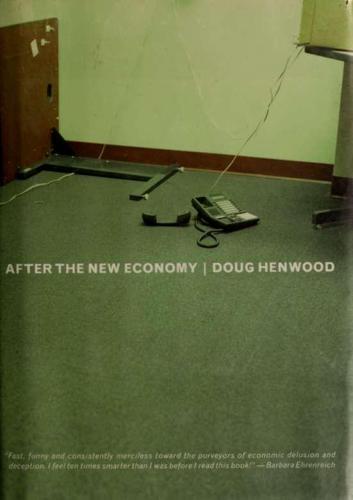
After the New Economy: The Binge . . . And the Hangover That Won't Go Away
by
Doug Henwood
Published 9 May 2005
Amidst a vast speedup of 230 Conclusion the social factory's assembly line, it evoked fantasies of abundance. And amidst aggressive attempts to privatize information, tighten up intellectual property restrictions, and put a meter on almost everything but the air, it stoked hopes for global Hnkages."Information wants to be free," the saying goes, but not as long as AOL Time Warner has its say. But why did The System's pubhcists need the Utopian story? If all challenges to capitaHsm were dead, why did we hear so much about democratization and the overturning of hierarchy? Evidently the message has appeal, even in apparently conservative times. Fine. If a Uttle hierarchy-overturning economic democratization is such a good thing, then why not more?
…
"Debtor Nation: Borrowing Levels Reach a Record, Sparking Debate," Wall Street Journal, ]u1y 5, p. CI. Aaron, David, 160 accounting. New Era, 17—22 Allen, Woody, 75 Aim, Richard, 114 Amazon.com, 30—31 Americanization of global finance, 217-225 Americans with Disabilities Act, 101 analysts, stock, 194-200 anriglobalization movement, 160,178,180, 229 AOL Time Warner, 229 Asian financial crisis (1997), 222, 225 Atwater, Wilbur, 107 AT Kearney, 153 Avalon, Frankie, 198 Badgett,M.V. Lee, 100 Balboa, Rocky, 198 Balibar, Etienne, 172-173, 239 bankruptcy, not in economists' models, 193 Barlow, Maude, 162 Bartiromo, Maria, 189-190 Baudrillard,Jean, 26 Becker, Gary, 94, 97 BeUo,Walden, 185 benefits, targeting of, 141-142 Berle,Adolph,212,213 bibhometrics "globahzarion," 145—146 "New Economy," 4 biotechnology, pubUc subsidy, 6 Biotic Baking Brigade, 239 birth weight, 81 Blodget, Henry, 195 Boesky, Ivan, 214 Bono, 177 book value, 232 border cultures, 172 Brady bonds, 221 brands, 17,18-19 Brand DNA, 18 Bretton Woods, 219 brokers productivity of, 64-66 salaries, 202 Brown & Co., 187 Buchanan, Pat, 151,173, 239 Burbach, Roger, 175 business, trust in, 32 Business Week cheerleading 1960s, 7-8 1990s, 32 New Economy poll, 31—32 California electricity crisis, 34,200 Silicon Valley income distribution, 105 Index California Public Employees Retirement System, 214 capital, measuring, 57 capitalism collective (Berle),213 as international, 167 periodizing, 175-176 capital account liberalization, 218 capital flight, 220 capital gains, 89,203 Cappelli, Peter, 76 caring professions, discrimination and, 96 Carrying Capacity Network, 162 Casarini, Luca, 160 Casey Bill, 232 Castells, Manuel, 26,147 Catholic social teaching, 140 Cavanagh,John, 162 cellular phone industry, 198 Center on Budget and Policy Priorities, 89-90 central banks.
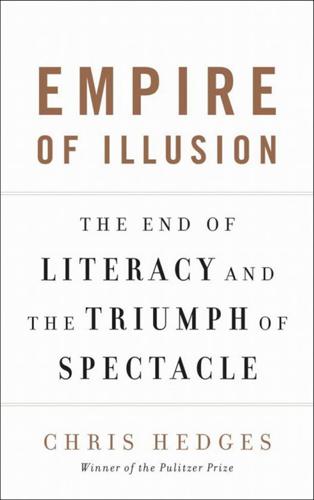
Empire of Illusion: The End of Literacy and the Triumph of Spectacle
by
Chris Hedges
Published 12 Jul 2009
They saturate the airwaves, the Internet, newspapers, and magazines with advertisements promoting their brands as the friendly face of the corporation. They have huge legal teams, tens of thousands of employees, and scores of elected officials who ward off public intrusions into their affairs or lawsuits. They hold a near monopoly on all electronic and printed sources of information. A few media giants, such as AOL Time Warner, General Electric, Viacom, Disney, and Rupert Murdoch’s NewsGroup, control nearly everything we read, see, and hear. “Private capital tends to become concentrated in [a] few hands, partly because of competition among the capitalists, and partly because technological development and the increasing division of labor encourage the formation of larger units of production at the expense of the smaller ones,” Albert Einstein wrote in 1949 in the Monthly Review in explaining why he was a socialist:The result of these developments is an oligarchy of private capital the enormous power of which cannot be effectively checked even by a democratically organized political society.
…
Index Abbott, Jennifer Abdul, Paula Abu Ghraib Achbar, Mark Adorno, Theodor Adult Industry Medical Healthcare Foundation Adult Pay Per View Adult Video News (AVN) Awards Adult Video News (AVN) expo Adult Video News (magazine) Aerospace Industries Association (AIA) Afghanistan AIG Amber (Survivor contestant) America by Design (Noble) American Fascists: The Christian Right and the War on America (Hedges) American Idol (television show) American Medical Association American Psychiatric Association American Psychological Association (APA) The American Scholar (magazine) America’s Next Top Model (television show) Amusing Ourselves to Death (Postman) Anadarko Petroleum Andersen, Hans Christian Anderson, Pamela Anderson, Ray Andover Andrejevic, Mark Anne, Lisa Annual Positive Psychology Forum Antitrust laws AOL Time Warner Appreciative Inquiry Arendt, Hannah Army War College, U.S. Arnold, Matthew AT&T Broadband Auden, W. H. Augustine, Saint Austro-Hungarian Empire Authentic Happiness: Using the New Positive Psychology to Realize Your Potential for Lasting Fulfillment (Seligman) Authorization for Use of Military Force (congressional resolution) Bacevich, Andrew Bakan, Joel Balkans Balzac, Honoré Banks bailing out collapse of faltering and Glass-Steagall Act insolvent leaders of and looting of financial system nationalizing and poor and Stewart Banks, Russell Barry (porn producer) Batista (wrestler) Bear Stearns Bearer, Paul Bellah, Robert N.
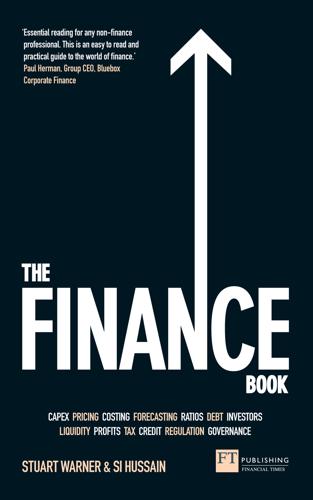
The Finance Book: Understand the Numbers Even if You're Not a Finance Professional
by
Stuart Warner
and
Si Hussain
Published 20 Apr 2017
For example, the Time Warner/AOL deal in 2001 resulted in goodwill of £128 billion, i.e. this was the premium (i.e. excess) paid by AOL to buy the Time Warner business. Two years on, £60 billion of the goodwill ‘asset’ was written off when the overoptimistic earnings forecasts originally used to justify the premium payment failed to materialise. At the time the acquisition was dubbed ‘the biggest mistake in corporate history’ by an executive closely associated with the deal. The goodwill written-off resulted in a significant fall in the share price of AOL Time Warner, destroying value for shareholders. Cynics often argue that goodwill simply serves as a number on the balance sheet to reflect the extravagance of the buyer!
…
In July 2005, News Corporation acquired MySpace (at the time the largest social networking site in the world) for USD $580 million. However, they sold MySpace six years later in June 2011 for USD $35 million. MySpace lost users to Facebook and Twitter, which developed alternative user experiences. See also Chapter 10 Goodwill and other intangibles for an example of the premium paid by AOL for Time Warner in 2001. In deciding upon a valuation premium, acquirers will account for potential synergistic benefits. Examples of synergies are: Marketing – opportunities to cross-sell and build a bigger brand. Operations – economies of scale, purchasing power and elimination of duplicate costs. Financial – access to cheaper finance (see Chapter 30 Debt finance), lower cost of capital (see Chapter 35 Investment appraisal) and tax benefits (see Chapter 8 Business tax).
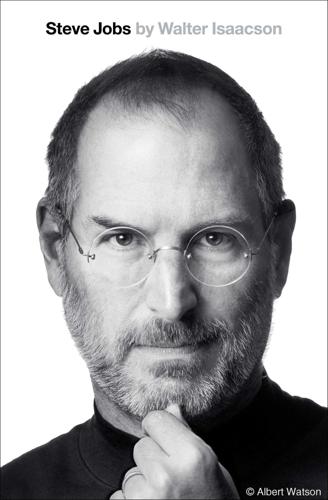
Steve Jobs
by
Walter Isaacson
Published 23 Oct 2011
Partly as a result, legal sales of CDs were down 9% in 2002. The executives at the music companies were desperately scrambling, with the elegance of second-graders playing soccer, to agree on a common standard for copy-protecting digital music. Paul Vidich of Warner Music and his corporate colleague Bill Raduchel of AOL Time Warner were working with Sony in that effort, and they hoped to get Apple to be part of their consortium. So a group of them flew to Cupertino in January 2002 to see Jobs. It was not an easy meeting. Vidich had a cold and was losing his voice, so his deputy, Kevin Gage, began the presentation. Jobs, sitting at the head of the conference table, fidgeted and looked annoyed.
…
This is a difficult person to work with if you are a big company. . . . It is a nightmare.” Howard Stringer, then head of Sony North America, added about Jobs: “Trying to get together would frankly be a waste of time.” Instead Sony joined with Universal to create a subscription service called Pressplay. Meanwhile, AOL Time Warner, Bertelsmann, and EMI teamed up with RealNetworks to create MusicNet. Neither would license its songs to the rival service, so each offered only about half the music available. Both were subscription services that allowed customers to stream songs but not keep them, so you lost access to them if your subscription lapsed.
…
We’d get second-rate A&R people, just like the music companies ended up with second-rate tech people. I’m one of the few people who understands how producing technology requires intuition and creativity, and how producing something artistic takes real discipline. Jobs had a long relationship with Barry Schuler, the CEO of the AOL unit of Time Warner, and began to pick his brain about how to get the music labels into the proposed iTunes Store. “Piracy is flipping everyone’s circuit breakers,” Schuler told him. “You should use the argument that because you have an integrated end-to-end service, from iPods to the store, you can best protect how the music is used.”

How Boards Work: And How They Can Work Better in a Chaotic World
by
Dambisa Moyo
Published 3 May 2021
Worse still, some acquisitions destroy value and leave the merged company severely weakened. One of the most famed examples of a failed merger was the $165 billion combination of AOL and Time Warner in 2000. Two years later, AOL Time Warner reported a loss of $99 billion—including a $46 billion write-down of the value of AOL. This was attributed, at least in part, to a clash of corporate cultures between old media (Time Warner) and new media (AOL), which impeded the ability of management to successfully integrate the two companies. More recent mergers have run into similar problems. In 2011, the US technology company Hewlett-Packard (HP) acquired UK software company Autonomy for just under $12 billion.
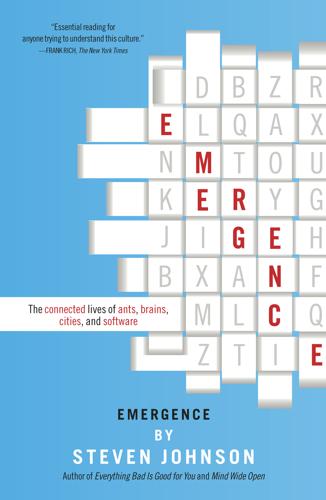
Emergence
by
Steven Johnson
* * * Most attempts to speculate on the state of the Web five years out focus on the endlessly scrutinized dream of “convergence”: the holy trinity of video, audio, and text at long last ushered into your living room via the same delivery mechanism, at speeds sufficient to convey the latest Lucas epic or Eminem release at the quality we’ve come to expect from CDs and DVDs. Once we hit that threshold, the critics like to tell us, the traditional media universe will no longer obey its previous laws of gravity, and a new order will emerge. What that new order will look like is a matter of great dispute. Some see a “one nation under AOL Time Warner” scenario; others envision a Hobbesian melee where everyone who sells zeros and ones is suddenly in the entertainment business. While the analysts disagree on the specifics of life after the revolution, there’s a general consensus that the rise of convergence will finally trigger that last storming of the network media barricades.
…
Could the same dispositions that gave the camp or the hamlet a planetary distribution likewise account for such a many-faceted cultural complex as the city?” Mumford, 1961, 90. A community of: These bottom-up solutions are not entirely unopposed. You can make the argument that the real battle of the next ten years on the Web is the battle between hierarchical forces (AOL Time Warner, the Chinese government) and the decentralized forces described in this book. As De Landa observes, “Although antimarket institutions had an early presence in the computer meshwork, today they are set to invade the Internet with unprecedented force. It is possible that the meshworks that have already accumulated within the Internet will prove resilient enough to survive the attack and continue to flourish.

Everything Is Obvious: *Once You Know the Answer
by
Duncan J. Watts
Published 28 Mar 2011
“A Note on Paradoxes in Economics.” Kyklos 57 (1):3–20. Aral, Sinan, Lev Muchnik, and Arun Sundararajan. 2009. “Distinguishing Influence-Based Contagion from Homophily-Driven Diffusion in Dynamic Networks.” Proceedings of the National Academy of Sciences 106 (51):21544–21549. Arango, Tim. 2010. “How the AOL-Time Warner Merger Went So Wrong.” New York Times, Jan. 10. Arbesman, Sam, and Steven H. Strogatz. 2008. “A Monte Carlo Approach to Joe DiMaggio and Streaks in Baseball.” In http://arxiv.org/abs/0807.5082 [2008]. Arceneaux, Kevin, and David Nickerson. 2009. “Who Is Mobilized to Vote? A Re-Analysis of 11 Field Experiments.”
…
See Knee, Greenwald, and Seave (2009) for a discussion of the fallibility of media moguls; and McDonald and Robinson (2009), and Sorkin (2009) for inside accounts of investment banking leaders whose actions precipitated the recent financial crisis. See also recent news stories recounting the failed AOL–Time Warner merger (Arango 2010), and the rampant, ultimately doomed growth of Citigroup (Brooker 2010). 23. Clearly not all attempts at corporate or even government planning end badly. Looking back over the past few centuries, in fact, overall conditions of living have improved dramatically for a large fraction of the world’s populations—evidence that even the largest and most unwieldy political institutions do sometimes get things right.
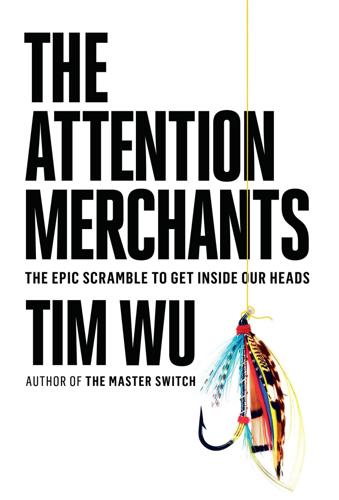
The Attention Merchants: The Epic Scramble to Get Inside Our Heads
by
Tim Wu
Published 14 May 2016
* * * *1 Before this, personal computers had come in the now unrecognizable form of hobbyist kits, assembled and programmed by guys like Steve Wozniak of Apple. For more, see The Master Switch, 274–75. *2 Example: +++, ATDT (416) 225-9492. *3 The movie also proved an opportunity for the first meetings between AOL and Time Warner executives: Steve Case and Jerry Levin met at a White House screening of the film. See The Master Switch, chapter 19. *4 The “floppy” disk was a magnetic storage medium used in the 1980s and early 1990s, originally the size of a dinner napkin, that was inserted into a “disk drive” that resembled a toaster.
…
Nonetheless, BuzzFeed was still growing, and as the decade reached its midpoint, was pegged at $850 million in value; then, over the summer of 2015, the cable giant Comcast bought a stake that valued the company at $1.5 billion. Comcast’s investment in BuzzFeed was at last a consummation of the union between the old and the new media such as Microsoft and AOL–Time Warner had once contemplated, though now involving far less money than in those headier days. For comparison’s sake, though, it is worth remarking that The Washington Post, with its forty-seven Pulitzer Prizes, was purchased by Amazon for $250 million in 2013—old media valuations clearly weren’t what they used to be, either.
…
People to See. Places to Go,” Popular Science 235, no. 2 (1989) : 7; CompuServe, “He Was a Sales Force of One. Until He Got CompuServe. Now He’s a Sales Force to Be Reckoned With,” Popular Science 243, no. 3 (1993) : 17. 2. Alec Klein, Stealing Time: Steve Case, Jerry Levin, and the Collapse of AOL Time Warner (New York: Simon & Schuster, 2004), 10. 3. Robert D. Shapiro, “This Is Not Your Father’s Prodigy,” Wired, June 1, 1993, http://www.wired.com/1993/06/prodigy/. 4. Ibid. 5. Kara Swisher, Aol.com: How Steve Case Beat Bill Gates, Nailed the Netheads, and Made Millions in the War for the Web (New York: Times Books, 1998), 89. 6.
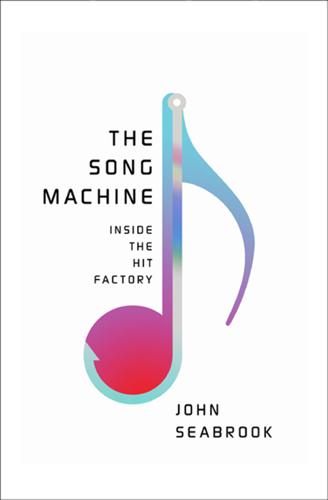
The Song Machine: Inside the Hit Factory
by
John Seabrook
Published 4 Oct 2015
AS THE RECORD INDUSTRY entered the twenty-first century, five global music groups controlled more than 70 percent of the market. The Universal Music Group, owned by Vivendi Universal, was the dominant player among the majors; it was run by Doug Morris. Then came the Warner Music Group, a division of AOL Time Warner, headed by Roger Ames. Warner had been the leading company in the record industry from the early ’70s to the mid-’90s, but by the end of 2002, with a 16 percent share of the domestic market, Warner—“Warner’s” is what you said if you were in the business, as if it were Jack Warner’s corner record store—had fallen well behind Universal, which had a 29 percent share.
…
Aaliyah, 60, 106 ABBA, 29, 90, 126, 186 hits of, 37–38 influence of, 37–38, 75 meticulous craft of, 37, 38 Abbey Road studios, 6 ABC TV, 103 Abdul, Paula, 126, 130, 131 AC/DC, 59, 307 Ace of Base, 35–39, 41–46, 63, 64, 81, 98, 138, 209, 303 Advertigo, 289, 290 Aguilera, Christina, 51, 85, 232, 255 Åhlund, Klas, 38 Aiken, Clay, 145 “Ain’t No Nigga,” 181 “Ain’t No Stopping Us Now,” 171 Airships International, 47–48 Air Supply, 42 AJ, see McLean, AJ AJ and Howie, D, 52 Aldon Music, 68, 69, 70 “Alexander’s Ragtime Band,” 112 Alford, Mary, 49 All I Ever Wanted, 145 “All I Need,” 254 “All Out of Love,” 42 “All That I Need,” 173 “All That Matters (The Beautiful Life),” 276 “All That She Wants,” 39–40, 41–42, 44, 45 All the Rave (Menn), 118 Alpha Entertainment, 165 “Already Gone,” 145, 202 Alsou, 173 Alternative Nation, 96 Alwood, Lester, 112 Amatiello, John, 64 “American Girl,” 266 video of, 64, 263 American Greed (TV show), 100 American Idol (TV show), 42, 105, 124–32, 179, 182 auditions for, 127–28, 130 Big Band Week on, 131 careers launched by, 145–46 Hollywood Week on, 128–29, 130–31 humiliation of contestants on, 128, 130 judges on, 124, 126, 127–28, 130–31, 204 ratings of, 128, 131 ’60s week on, 131 winners on, 130–32, 137, 138, 141 American Idol: The Untold Story (Rushfield), 128 American Music Awards, 228 American Top 40, 79 America’s Got Talent (TV show), 146 Ames, Roger, 115, 133 Ammo, 275, 276 Anaheim, Calif., 154–55, 158–59, 162–65 Anderson, Chris, 15 Andersson, Anni-Frid, 38 Andersson, Benny, 37, 38 Andrea True Connection, 40 Andrews Sisters, 112 Anka, Paul, 172 “Another Mother,” 35 Anthony, Michelle, 118 Anthony, Polly, 86 AOL, 133 AOL Time Warner, 115 Apartheid, 58 Appetite for Self-Destruction (Knopper), 101 Apple, 133–34, 286, 294, 298–99 Apple, Fiona, 254 Apple Music, 298 Arbitron, 79 Areola, 83–84 Areola Munich, 101 Arista Records, 41, 45, 59–60, 126, 137 Arkansas, University of, Music Cognition Lab at, 303–4 Army, US, 150 arpeggiator software, 227, 231 ARP Odyssey synthesizers, 30 arrangers, 6, 10 Arsenio Hall Show (TV show), 50 artists, 29 A-list, 6 black, 46, 68, 90 discovering and developing of, 42 earnings of, 13, 15–16, 25 female, 42, 59 “manufactures,” 121 power of writers and producers vs., 67–68 R&B, 60 rap, 33, 34, 60 rock, 138 small but loyal followings of, 15 as vocal personalities vs. singers, 7 artists and repertoire (A&R), 39, 42, 55, 58, 63–64, 81, 86–89, 105, 119 see also specific record companies ASCAP, 105, 227 ASCAP Expo, 211 A Side Productions, 123 “As Long as You Love Me,” 82 Asphalt, 248 Astley, Rick, 73 Atlanta, Ga., 46, 180, 187, 188, 196–98 Atlantic Records, 14, 53, 116 A&R department of, 270 “At Last,” 130 Australia, 72–73, 124, 258 Autobahn, 30 “Autobahn,” 30 Auto-Tune, 223, 237, 273 Avicii, 287, 297 Azalea, Iggy, xiii, 6 Azra, 55 Babyface, 46 “. . .

The Greed Merchants: How the Investment Banks Exploited the System
by
Philip Augar
Published 20 Apr 2005
Finance knew what was best for the economy and accordingly by paying heed to financial markets we would increase growth and prosperity.’31 And so on Millennium Eve, with the Dow up 25 per cent for the year, its ninth straight annual increase, and the NASDAQ up a towering 86 per cent for the year, it seemed good to be alive, good to be an investor and great to be an investment banker, a Master of the Universe. This time, no kidding. The Smoking Gun To begin with, the new millennium went according to plan. In January 2000 news broke of the $166 billion merger between AOL, the iconoclastic internet company, and Time Warner, the ‘old media’ blue chip. Time Warner owned stalwarts of American society such as CNN and the HBO, Time, Fortune and Sports Illustrated magazines, and the Warner Brothers studios. AOL was less than fifteen years old yet already it had 22 million subscribers. The combination excited the pundits, who thought it would create ‘a globally powerful company that combines old media power and content with new media speed’.32 The merger seemed to confirm the convergence of the new and old economies and fired up enthusiasm for internet stocks still further.
…
The old economy indices, the S&P 500 and the Dow Jones, had already run out of steam in 1999 and by the end of 2001 a full scale bear market had developed. Fortunes were lost and retirement plans hastily revised. In March 2002, barely two years after the market peak, losses totalled $4 trillion. Almost 30 per cent had been wiped off the value of the stock market holdings of 100 million American investors. Events at AOL-Time Warner summed up the extraordinary change in mood. Barely twelve months after the acclaimed epoch-defining merger, the company announced incredible losses of $54 billion for the first quarter of 2002, having been forced to reassess and write down the value of its over-hyped assets.34 The lifeblood of the investment banks dried up as the bear market took hold.
…
Shareholders of the buying firms saw their wealth reduced by $240 billion, representing 12 per cent of the purchase price. The wealth destruction was concentrated amongst the biggest equity-financed deals; the bigger the deal, the worse the results.30 Often there was a sharp deterioration in acquirer performance for several years after the deal is done.31 The merger of AOL and Time Warner in 2000 is a case in point. As we saw in Chapter 1, the deal was intended to create a world-class modern media company but instead led to the largest losses in corporate history. Bankers such as the legendary dealmaker Bruce Wasserstein are dismissive of the value-destroying arguments: ‘The problem with many academic studies is that they make questionable assumptions to squeeze untidy data points into a pristine statistical model.’32 But the weight of evidence from the late-twentieth-century merger wave seems to show that the handsome profits made by the selling shareholders were usually offset by subsequent losses for the acquirers.
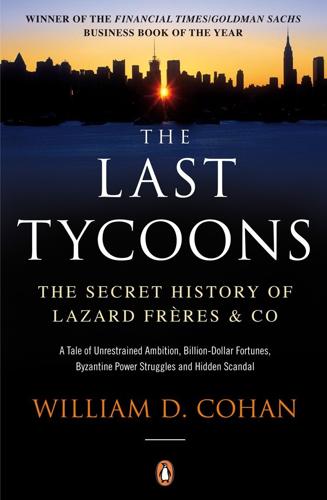
The Last Tycoons: The Secret History of Lazard Frères & Co.
by
William D. Cohan
Published 25 Dec 2015
The assignment was full of irony, of course, for not only had Bruce, when he was at Wasserstein Perella, been the architect, representing Time Inc., of the controversial 1989 deal creating the highly leveraged Tim Warner, but Bruce had also trumpeted his involvement in the landmark AOL acquisition of Time Warner in 2000 despite having had no role in the deal. When it suited Bruce and improved Wasserstein Perella's rankings in the M&A league tables--for instance, on the eve of the sale of his firm to the Germans--he claimed credit for the largest U.S. merger of all time. When it no longer suited him--for instance, when the deal proved to be an embarrassing disaster--Bruce ran, metaphorically, like the wind. Indeed, many blame both the original Time-Warner merger and the ill-fated AOL-Time Warner merger for creating the situation the dissident shareholders--and now Bruce and Lazard--were fighting to improve.
…
To raised eyebrows, Bruce blamed Time Warner management for creating a "corporate inferno" that immolated at least $40 billion in shareholder value through a combination of, among other things, "bloated overhead" (evidenced by the company's new corporate headquarters at Columbus Circle and its fleet of corporate aircraft) and a "history of ineffectual deal execution" (for instance, losing the acquisition of AT&T Broadband to Comcast and selling Warner Music to a private-equity consortium for far less than it later proved to be worth) that allowed competitors to "take advantage of TWX." "The Lazard Report" did betray Bruce's ongoing sensitivity about his role--or lack thereof--in the disastrous AOL-Time Warner merger when he directed the Lazard team to footnote the utterly irrelevant fact that Wasserstein Perella was not the only Wall Street firm to claim credit for the AOL-Time Warner merger without actually working on the deal. At the St. Regis, Bruce spoke first and articulated the Lazard solution. "Time has not been friendly to Time Warner over the last three years," he said. "The time to implement change is urgent."
…
If that proved to be true, at the midpoint--around $25 a share--Time Warner's stock would have increased nearly 40 percent, and Lazard's total fee would be in the vicinity of $55 million, right up there with the largest single M&A fee ever paid ($60 million to Citigroup for its advice in the AOL-Time Warner deal). "If Dick Parsons indeed has the secret super-spicy sauce to deliver and generate value, we all say, 'Hallelujah' and 'God Bless,'" Bruce said in conclusion, attempting humor. The Lazard brethren in attendance were positively giddy after the presentation. "What do you think of the new Lazard?"

Smart Mobs: The Next Social Revolution
by
Howard Rheingold
Published 24 Dec 2011
Coaxial cable owners that offer high-speed Internet access already prevent their users from running servers or hosting Web pages and are preventing content that competes with the cable owner’s own content from running on their parts of the Internet. The AT&TMediaOne merger created a huge cable infrastructure that AT&T controlled. AOL-Time-Warner created a huge cable infrastructure that AOL controlled, and now they’re trying to put them both together into a single cable infrastructure for a large part of the Internet. As cable providers consolidate ownership, they are increasingly asserting their right to decide how people can use the network.
…
What if smart mobs could empower entire populations to engage in peer-to-peer journalism? Imagine the impact of the Rodney King video multiplied by the people power of Napster. What if people beamed WearComp video to the Web, offering continuous views of breaking events that hitherto have been available only from Newscorp, AOL-Time-Warner, and Disney? Would it be possible to turn the table on the surveillance society and counter the media monopolies? What would be the effect on public opinion if thousands of WearComp-equipped citizens webcast all they saw and heard? Wild as it sounds, mobile squads of citizen telejournalists have already surfaced.
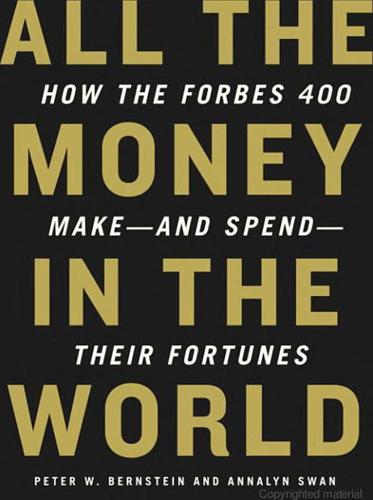
All the Money in the World
by
Peter W. Bernstein
Published 17 Dec 2008
Perhaps the most dramatic example in recent years of what happens when you have good instincts—and when you don’t—came with the crash of the dot-com economy in 2001, which highlighted the gulf between those who timed their cashing out well and those who didn’t. One of the most vocal losers during the crash was Ted Turner. Turner’s fortune was wrapped up in Time Warner, which had merged with Turner Broadcasting System in 1996. Following the subsequent merger of Time Warner and America Online (AOL) in 2000, AOL Time Warner stock fell 81 percent, wiping billions off Turner’s net worth—from $9.1 billion in 2000 to $2.2 billion in 2002. “I’m the stupidest person23 in the world not to have sold earlier,” Turner said in 2003, shortly after reducing his stake in the company by selling 60 million shares. Archimedes gave the world new insights into science, mathematics, and engineering.
…
In 2006 he announced: Merissa Marr, “Geffen’s Goodbye,” Wall Street Journal, Dec. 8, 2006. 20. “He is bored”: Fabrikant and Waxman, “A Mogul Ponders.” 21. Unlike the old Hollywood movie moguls: John Motavalli, Bamboozled at the Revolution: How Big Media Lost Billions in the Battle for the Internet (New York: Viking, 2002). Motavalli cites a 1998 interview with Bob Pittman of AOL Time Warner in which Pittman explained the “phenomenal success of cable in this way: ‘The three networks looked at the cable business and chose not to start a cable network because they didn’t want to ding their earnings to build a new business. They said, “If it ever gets big, then we’ll come in.” But by the time they got in, Ted Turner had news, ESPN had sports, MTV had music, Nickelodeon had kids and there was no opportunity’” (p. 15). 22.
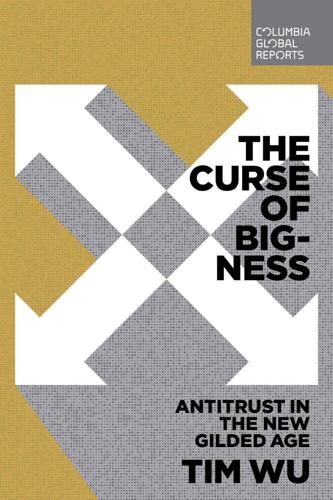
The Curse of Bigness: Antitrust in the New Gilded Age
by
Tim Wu
Published 14 Jun 2018
In reality, a large corporation is made up of sub-units, whether functional or regional, or independent operations that have been previously acquired. It is not “impossible” to administer a breakup as is sometimes claimed. Many breakups are akin to the spinoffs or dissolutions that are not uncommon in business practice as it stands, such as AOL-Time-Warner’s decision to break itself up into multiple units in the early 2000s. While the purpose is and should be public benefit, in some cases, like Standard Oil, the breakup may actually be healthy for the firm itself, but thanks to ego, otherwise known as agency problems, something it would not do itself.
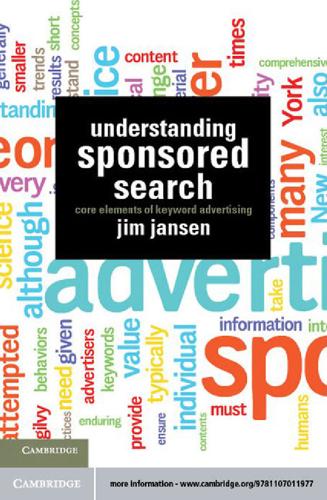
Understanding Sponsored Search: Core Elements of Keyword Advertising
by
Jim Jansen
Published 25 Jul 2011
To see the entire SERP, a searcher may have to scroll on the browser to the bottom portion of the SERP. Potpourri: Why do search engines list the advertisements in a separate listing? One of the major reasons was a complaint to the Federal Trade Commission (FTC) filed by Commercial Alert in July 2001 against AltaVista, AOL Time Warner, Direct Hit Technologies, iWon, LookSmart, Microsoft, and Lycos [27]. The complaint alleged that the confusion caused in consumers who saw mixed paid and unpaid results in a combined listing constituted fraud in advertising by the search engines. After that, by convention, the sponsored results are listed separately, or at least labeled as sponsored if they are integrated with organic results.
…
Index 3 Cs, 131, 140–141 4 Ps, 130–131 7 Ps, 131, 140–141 8 Life Forces, 125 80–20 rule, 51, 136 A/B testing, 164–165 above the fold, 3, 21, 61 accretion, 159–160 achieve, 6, 25, 111, 124, 196 Action, Location, Price and Quality (ALPQ) terms, 69 ad copy, ix, 24, 61, 138, 140, 183–184, 207 ad rank, 74, 77–78, 178 advertising agency, 61, 122 advertising blockage, 120 AdWords, 14–15, 18, 180–181, 185 aesthetic sensations, 125 affiliation, 124 affordances, 2, 37, 130 aggress, 124 AIDA model, 94 allocation mechanism, 178 AltaVista, 13, 21, 38, 44 American Marketing Association, 139, 152 analysis of variances, 165 Anomalous States of Knowledge, 43 AOL Time Warner, 21 Asimov, Isaac, ix, 47, 96 attention, 5, 28, 55, 61, 68, 72, 116, 121–122, 124–126, 133–134, 153, 203, 205 Aucnet, 179 Auction theory, 180, 182, 210 autonomy, 125 Back of napkin calculations, 195 Baidu, 179 Bailey, P., 116 BAM framework, 140 band wagon effect, 114 Banister, Scott, 11 banner ads, 10–11, 19 Battelle, John, 31 A Beautiful Mind, 197 behavior, 33–38, 44–45, 47–49, 54, 63, 66–67, 70–72, 74, 80–82, 85–87, 94, 99, 101, 115, 151, 155–161, 168, 170, 189, 196, 210–213, 220, 222, 224 behaviorism, 156–157, 170–171, 210, 213 behaviors, x, xi, 34–36, 38, 42–43, 45, 49, 55, 62, 71, 74–75, 86–88, 94, 99, 114–115, 152, 156–159, 161–163, 167, 171, 210–212, 221–222, 226 below the fold, 21, 43 Bernbach, Bill, 61 Bhatia, Sabeer, 134 bid, xxi, 4–5, 12, 14, 19–20, 39, 119–120, 141, 170, 178–182, 184–200, 203, 209 Bierbaum, E.
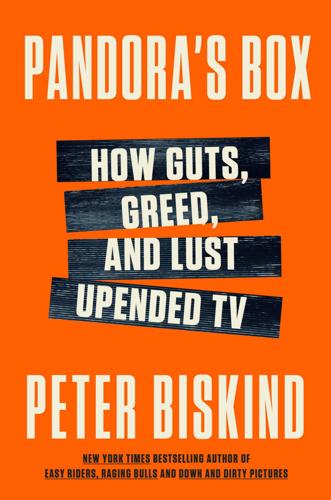
Pandora's Box: How Guts, Guile, and Greed Upended TV
by
Peter Biskind
Published 6 Nov 2023
They feared that the big MSO’s like Comcast and Cox that distributed and marketed HBO, as well as the affiliates, would have, in Whitehead’s words, “punished us for essentially going around them to create a business that was focused directly on consumers. And that would’ve cost us billions of dollars.”74 He continues “The stock would have cratered, and Jeff did not want to make himself [yet again] bait for a hostile takeover.” Bewkes may have also been gun-shy of internet flash-in-the-pans like AOL, after the fiasco of the Time Warner–AOL merger. He liked to say that AOL was worth almost three-quarters of a billion dollars one minute, and the next minute, nothing. Like almost every other executive, Bewkes walked the walk dictated by conservative economist Milton Friedman, who convinced corporate America that its sole purpose was to deliver profits to shareholders measured by the value of its stock every quarter.
…
Oh, and by the way: Roger Cormier, “15 Incorruptible Facts About The Shield,” Mental Floss, March 12, 2017, https://www.mentalfloss.com/article/74534/15-incorruptible-facts-about-shield. Chapter 1: Seeding the Wasteland 1. “It was like a blueprint”: Kevin Spacey, in discussion with the author, September 20, 2013. 2. “If I had finished Harvard Business School”: Nina Munk, Fools Rush In: Steve Case, Jerry Levin, and the Unmaking of AOL Time Warner (New York: Harper Business, 2004), chap. 1, iBooks. 3. Of course, “money-grubbers”: Ibid., 315. 4. “Suddenly, the whole meeting began”: Ibid., chap. 1, iBooks. 5. “There were guys at HBO”: Michael Fuchs, in discussion with the author, December 13, 2011. 6. “I knew nothing”: Michael Fuchs, in discussion with the author, December 13, 2011. 7.
…
“Before anyone could have a glass”: Felix Gillette and John Koblin, It’s Not TV: The Spectacular Rise, Revolution, and Future of HBO (New York: Viking, 2022), 111. 45. “I start giving Ross my spiel”: Michael Fuchs, in discussion with the author, November 29, 2011. 46. “They were pissing all over us”: Nina Munk, Fools Rush In: Steve Case, Jerry Levin, and the Unmaking of AOL Time Warner (New York: Harper Business, 2004), chap. 2, iBooks. 47. “Nick had really lost his way”: Michael Fuchs, in discussion with the author, November 29, 2011. 48. “I felt that I was the attack dog Jew”: Ibid. 49. “[Jerry] called the board members”: Ibid. 50. “He was an arrogant and vindictive bully”: Sallie Hofmeister and Chuck Philips, “Fuchs’ Fall Is as Dramatic as His Rise Was Meteoric,” Los Angeles Times, November 17, 1995, https://www.latimes.com/archives/la-xpm-1995-11-17-mn-4093-story.html. 51.
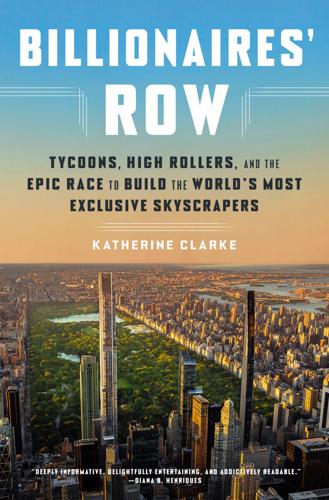
Billionaires' Row: Tycoons, High Rollers, and the Epic Race to Build the World's Most Exclusive Skyscrapers
by
Katherine Clarke
Published 13 Jun 2023
The project comprised a Mandarin Oriental hotel, offices, a jazz club, a luxury shopping mall, a Whole Foods Market, restaurants by Thomas Keller and Jean-Georges Vongerichten, and high-end condominiums spread across a pair of twin 750-foot towers that The New York Times described as exclamation points on the West Side skyline. Though there had been speculation during the time of its construction about whether buyers would want to live in twin high-rises so soon after 9/11, the project, known as the AOL Time Warner Center, was succeeding in drawing ultra-wealthy condo buyers from around the world. And then there was 15 Central Park West, a new limestone tower near the corner of Central Park and next door to the Trump International Hotel. Developed by the Zeckendorf brothers, William and Arthur, scions of an iconic New York real estate family, the building, on the corner of 61st Street and Central Park West, was the pinnacle of luxury real estate in the city at the time, with apartments trading at never-before-seen prices to celebrities and financiers.
…
See also Central Park Tower Afkhami, Mohammed, 119 The Age of Innocence (Wharton), 15 AIG and 111 West 57th Street, 215, 273, 274 “air rights,” 59–60, 62–65, 148, 194–95 Alatau, 40–41 Alexander, Oren, 232–35, 238–39, 242 Alexander, Shlomy, 233 Alexander, Tal, 232–35, 238–39, 242–43, 327 Alexander’s (department store chain), 126–27 al-Hokair, Fawaz, 118, 326 Alibaba, 340 AllState Limo, 322 al-Qubaisi, Khadem arrest and conviction of, in Abu Dubai, 255, 257 basic facts about, 50–51, 186 One57 financing and, 51–52, 54, 256 Walker Tower unit purchased by, 184–86, 257 al-Thani, Hamad bin Jassim bin Jaber, 85, 228, 288 Altucher, James, 316 Aluko, Kolawole “Kola,” 247–49, 253 Alwyn Court, 62 AmBase Corporation Apollo and, 280 Baupost loan and, 274–78 Carteret Savings Bank and, 178–79 lawsuit against Stern and Maloney, 223–25, 249, 275, 278–80, 332, 349, 350 Saudi billionaires and, 187 Walker Tower project and, 221 AOL Time Warner Center basic facts about, 31 Chinese billionaires and, 102 Low unit seized by government, 254 marketing of units at, 94 Russian billionaires and, 90, 205 Apfel, Iris, 334 Apollo AmBase and, 280 basic facts about, 68 Bianco lawsuit against, 279, 280 111 West 57th Street and, 215, 273, 274, 275, 277, 295, 330 Spruce and, 277 Apple cube, 4 Arabo, Angela, 119 Arabo, Jacob (né Yakov), 34–36, 119, 346 Architectural Record, 174 Armstrong, Brian, 336 art Griffin and, 240 Macklowes’ investments in, 7, 8–9, 228, 286, 341–43 market for, and condominium market, 238 NFT pieces, 335–36, 343 sale of David and Peggy Rockefeller’s, 343 for 220 Central Park South, 200 The Art of the Deal (Trump), 24 Art Students League, 31, 194–96 Asia, supertalls in, 48–49 “as-of-right buildings,” 145 Assouline (publishing company), 110–11 The Atlantic, 213 Atlantic 57 LLC, 181 Auden Mckenzie, 326 Automobile Row, 27–28, 133 Avdolyan, Albert, 181, 182 B Bailey, Adam Leitman, 288 Banco Santander, 54 Bankman-Fried, Sam, 336 Bank of America, 54 Bank of China, 202, 203 Bank of Manhattan Trust Building on Wall Street, xxix, xxx Bank of the Ozarks, 203 Bannister, Matthew, 111–15 Banque Havilland Saudi Arabia, 249 Barnett, Gary.
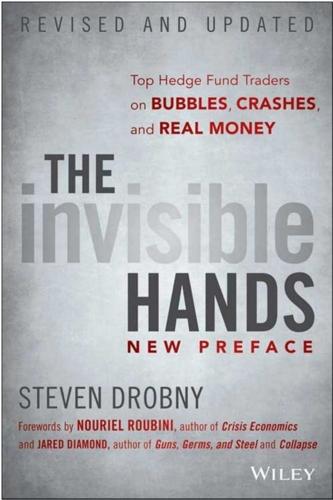
The Invisible Hands: Top Hedge Fund Traders on Bubbles, Crashes, and Real Money
by
Steven Drobny
Published 18 Mar 2010
The lesson learned from that is never short a market that’s skyrocketing because, even if you think it’s doing something completely and utterly irrational, financial flows can keep it behaving irrationally for some time for no other reason than just pure momentum. Risk management is often learned the hard way, and this was one of those occasions. I finally stopped out of my short and gave up when the AOL-Time Warner deal happened. The fact that emerging tech companies like AOL could merge with an established old world company like Time Warner made me reconsider my bearish view. I thought, wow, maybe the NASDAQ can go to 7,000 or 10,000 if transactions like this become a new trend. Of course, that deal turned out to be close to the top of the market. (See Figure 8.6.) Figure 8.6 NASDAQ Index, 1995-2003 SOURCE: Bloomberg.
…
Index Absolute return, generation Accounting leverage, economic leverage (contrast) Active management, passive management (combination) Active managers, search process Active risk allocation, importance Active risk management, dedication Adaptability call Agricultural commodities, prices Agricultural futures (1977-2009) AIG, bailout Alchemy of Finance, The (Soros) Allocators, future adaptability Alpha beta, contrast central bank source extraction, zero-sum game generation policy change, impact providing, policy error (usage) risk-adjusted measure Alpha-seeking macro fund Alternative energy source, supply (increase) Annual cash demands, short-term constraints Annual cash flows, importance AOL-Time Warner deal Armageddon scenario, extrapolation Asia crisis (1997) repeat Asia crisis (1998-1999) Asia currencies, bullishness Asian equities impact perspective Asia performance Asset-backed securities index (ABX), problem Asset/liability matching Assets allocation, function collapse deflation, renewal expected return generation purchase (Buffett) Asymmetric bet example structure Back tests Backwardation Bacow, Larry Bailouts, usage Balance sheets availability strength Baltic dry shipping rate (1998-2009) Bank capital ratios, Basel II framework (usage) Bank of International Settlements (BIS), turnover data Banks balance sheets, problems implosion leverage ratios Bayesian methods Bear market Bear Stearns bailout government bond leverage change perspective (Bernanke) Beauty contest, concept Benchmark Beneficiaries, payments (impact) Bernanke, Ben actions Bear Stearns perspective debt deflation perspective success/error Beta alpha, contrast correlation portfolio Beta-plus domination Big Oil Black box applications, naivete Black swan Bolton, Anthony Bond option positions, leverage Bond repurchase agreement (repo) Bonds attractiveness Bond Trader perspective collapse fixed interest markets, rout (1994) perspective (Drobny Global Conference) portfolio purchase, leverage (usage) traders vigilantes Bond Trader, The capital allocation determination central banks, alpha source diversification firm-level risk management fixed income trading hedge fund/prop desk, contrast inputs, usage interview liquidity, measurement process market change focus positioning, importance money managers, meeting options, usage performance positions, scaling sizing determination time horizon traders control hiring trades consideration miss worst-case scenario trading ideas wealth maximization Brazil, Russia, India, and China (BRIC) Break-even inflation Brent crude British Telecom, pension fund (Commodity Trader hiring) Bubbles.
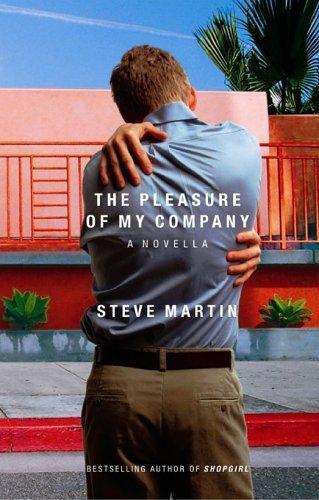
The Pleasure of My Company
by
Steve Martin
Published 1 Oct 2003
ACKNOWLEDGMENTS I would like to thank my diligent and inspiring editor, Leigh Haber, as well as my conscripted friends who were forced to read various drafts and held in a cellar until they offered in-depth commentary: Sarah Paley, Carol Muske-Dukes, Deborah Solomon, Sherle and John, Victoria Dailey, Susan Wheeler, April and Eric and Mary Karr. I would also like to thank Ricky Jay, who in minutes assembled a short treatise for my enlightenment on magic squares from his own amazing library. And Duke. eBook Info Title: The Pleasure of My Company Creator: Steve Martin Publisher: AOL Time Warner Identifier: 1-4013-9879-0 Format: Mobipocket Reader 4.3 build 363 Language: en-us Table of Contents eBook Info The Pleasure of My Company
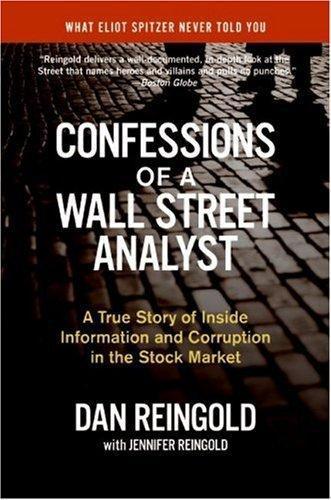
Confessions of a Wall Street Analyst: A True Story of Inside Information and Corruption in the Stock Market
by
Daniel Reingold
and
Jennifer Reingold
Published 1 Jan 2006
Because Global was perhaps the premier “new-economy” company in the telecom sector and had been seen as purely an international play, its decision to acquire Frontier was a shocker. Frontier was an old-economy real telecom company, not a virtual one. This meant a major strategy change for Global Crossing. The deal, which preceded the AOL–Time Warner merger by almost a year, was the first case in which an upstart new-age company with few customers but major growth expectations used its high stock valuation to buy a traditional company. Global Crossing was offering a very rich price for Frontier of $62 per share, 41.3 percent above Frontier’s current price of $43.88.
…
earnings of evolving role of Fair Disclosure rule and Grubman model of highest-paid incentivized bonuses and inherent conflicts faced by inside information and intimidation of investigations of investment bank interaction with investment bank severance from IPO boom and as keys to massive deals new NASD standards for perks of pliability of pressures on reform proposals for restricted periods and role of ruined reputations of social contacts and See also I.I. rankings; research reports Anchor Bar (Buffalo) Andersen. See Arthur Andersen Andreessen, Mark Animal Farm (Orwell) Annunziata, Bob Anschutz, Phil Nacchio’s dismissal by stock sales of Anschutz Corporation antitrust telecom mergers and AOL AOL–Time Warner merger arbitrageurs (arbs) arb spread Armour, Tim Armstrong, C. Michael (Mike) AT&T action plan of AT&T restructuring and AT&T tracker and background/personality of Comcast bid and current situation of Global Telecom CEO Conference and Arthur Andersen Asian telecom privatization AT&T antitrust breakup of Baby Bells as threat to cellular coverage and Comcast bid and financial problems of Grubman’s downgrade of Grubman’s upgrade of Grubman–Weill relationship and leadership change at local startups and price wars and Reingold’s downgrade of Reingold’s upgrade of restructuring of SBC purchase of tracking stock and AT&T Broadband AT&T Labs At&T Long Distance AT&T Wireless IPO underwriters Avoid rating Baby Bells cellular coverage and competition and Grubman’s view of local startups and as long distance service mergers and Reingold’s view of strengthened position of See also specific companies Baker, Richard bandwidth banking.
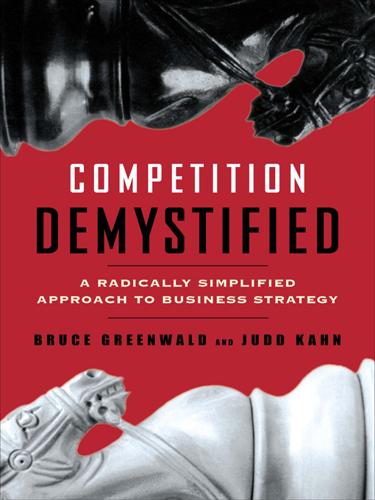
Competition Demystified
by
Bruce C. Greenwald
Published 31 Aug 2016
If bargaining can produce most of the gains of direct combination, the premium paid must be minimal to be fully warranted. When the acquisition is paid for in stock rather than cash, the calculations may need to be adjusted. In the AOL–Time Warner merger referred to earlier, AOL clearly overpaid, based on the size of potential cost savings compared with the premium over market price. But AOL used its own stock, which by almost any valuation measure was grossly inflated, for the purchase. Buying Time Warner with a debased currency made the deal a profitable one for AOL shareholders, although it took a while for that fact to become apparent. While it is generally better to be on the selling rather than the buying side in M&A transactions, when the acquirer pays with its own stock, using a currency whose future value it knows much more about than anyone else, then even the target must exercise care.
…
The applications programs are more frequently sold directly to users. Some of these applications programs are produced by the operating system software companies; some come from specialized providers like Adobe and Intuit. Finally, PC owners today almost invariably connect their machines to the Internet through network service providers, like AOL, Earthlink, MSN, Time Warner, or the regional telephone companies that allow them to communicate with other users. Yahoo, Google, and other Internet sites are also in the network segment, broadly conceived. FIGURE 4.2 Map of the personal computer industry (first version) An initial industry map almost invariably represents a compromise between the virtues of simplicity and tractability, on the one hand, and the requirements of comprehensiveness, on the other.
…
If company executives and the bankers promoting merger and acquisition deals were forced to justify the proposed combinations using this test, it is likely many transactions would never see the light of day. (Admittedly, one should never underestimate the power of a compelling projection based on unwarranted hopes, a professional-looking spreadsheet, and an elegant PowerPoint presentation.) AOL’s acquisition of Time Warner, for which it paid a premium of roughly $50 billion, was justified by $600 million of anticipated annual cost savings. The cumulative value of these savings, appropriately discounted, was certainly less than $10 billion. AT&T bought cable properties where little or no cost savings were expected.
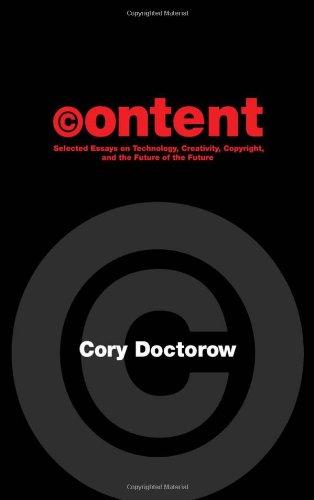
Content: Selected Essays on Technology, Creativity, Copyright, and the Future of the Future
by
Cory Doctorow
Published 15 Sep 2008
Patrick and I have a long relationship, starting when I was 18 years old and he kicked in toward a scholarship fund to send me to a writers' workshop, continuing to a fateful lunch in New York in the mid-Nineties when I showed him a bunch of Project Gutenberg texts on my Palm Pilot and inspired him to start licensing Tor's titles for PDAs [PEANUTPRESS SCREENGRAB], to the turn-of-the-millennium when he bought and then published my first novel (he's bought three more since — I really like Patrick!). Right as bookwarez newsgroups were taking off, I was shocked silly by legal action by one of my colleagues against AOL/Time-Warner for carrying the alt.binaries.ebooks newsgroup. This writer alleged that AOL should have a duty to remove this newsgroup, since it carried so many infringing files, and that its failure to do so made it a contributory infringer, and so liable for the incredibly stiff penalties afforded by our newly minted copyright laws like the No Electronic Theft Act and the loathsome Digital Millennium Copyright Act or DMCA.
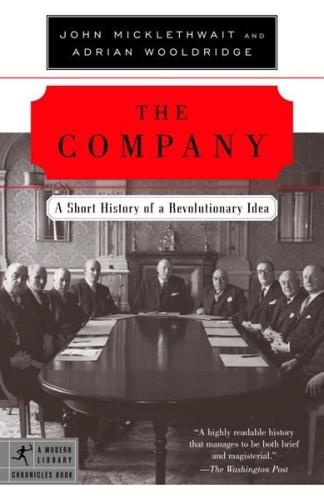
Company: A Short History of a Revolutionary Idea
by
John Micklethwait
and
Adrian Wooldridge
Published 4 Mar 2003
Meanwhile, its boss, Bernard Ebbers, had apparently treated the company as a piggy bank, borrowing hundreds of millions of dollars when it suited him. WorldCom’s stock, which peaked at $64.50 in 1999, stopped trading at 83 cents, costing investors about $175 billion—nearly three times what was lost in the implosion of Enron. A stream of other scandals followed: Xerox and AOL Time Warner had to revise their accounts. The former boss of Tyco, who had taken home $300 million in just three years, was charged with evading $1 million in sales tax on paintings. The boss of ImClone was accused of insider trading; the founder of Adelphia was charged with defrauding investors. (Nobody was particularly surprised when a survey showed that 82 percent of chief executives admitted to cheating at golf.)34 Meanwhile, investors fumed when they discovered that Wall Street analysts had been misleading them with Orwellian doublespeak: to the cognoscenti, a “buy” recommendation meant “hold” and “hold” meant “run like hell.”

Gambling Man
by
Lionel Barber
Published 3 Oct 2024
By nature secretive and prone to last-minute changes in schedule, he’d just returned on a chartered flight from Davos, the annual gathering of the world’s business elite in the Swiss Alps. All the talk was about the deal of the new century: the $165bn merger between America Online (AOL) and Time Warner, the film, music and publishing colossus. AOL was barely nine years old but its frothy share price made it worth twice as much as Time Warner’s with less than half the cash flow. In the dot-com economy, where conventional valuations were turned on their head, internet companies like AOL were supposed to vaporize mainstream media, leaving Masa and a handful of far-sighted investors on top of the world.
…
/Softbank (2005), 174–7; Goldman Sachs exits, 171; managing of SoftBank’s stake in, 306, 307, 308, 309, 322; Masa’s deal (1999), 142–4, 147, 236, 262, 278; Masa’s investment in, 4, 144, 147, 169–71, 174–7, 262, 278, 296, 306–7, 314; Masa’s long-term faith in, 170–71, 176, 315; psychological impact on Masa, 147, 278; SoftBank as overly dependent on, 177, 321, 322; Taobao launched (May 2003), 169–71 Alta Vista, 101 Altman, Sam, 327, 330, 335 Amazon, 101, 132, 307, 312, 329 Ambani, Anil, 182 America Online (AOL), 2, 102 Anderson, James, 253 Anderson Mori & Tomotsune (law firm), 311, 314 Andreessen Horowitz, 282, 283 Ansett Airlines, 113 Apax (private equity firm), 241 Apple Computer, 35, 48, 56, 89, 178, 190, 307, 312; Apple II, 72, 73; and ARM chips, 244, 245, 247, 330; Foxconn manufactures iPhone, 268, 286; iPad, 192; iPhone, 4, 190–91, 192–3, 227–8, 268, 286; Jobs’ return to, 102–3, 190; Think Different advertising campaign (1997), 189; and Vision Fund, 266, 289 Aramco oil company, 260, 264 Argentina, 295 Ariburnu, Dalinc, 259 Arimori, Takashi, Net Bubble (2000), 163 ARM Holdings, 242, 244–55, 259, 265–6, 323, 329–31 Arora, Nikesh, 232, 233–5, 236–43, 259, 287, 288–9 artificial intelligence (AI): AGI (artificial generative intelligence), 328–32; and ARM Holdings, 265, 323, 329–31; ‘first wave’ of AI-related companies, 328–9; Masa’s current plans, 327–31, 334–5; Masa’s embrace of/optimism about, 203, 210, 211, 265, 319, 323, 327–35; Masa’s new chip-making venture, 329–30, 334–5; next generation of computer graphics chips, 304–5, 308, 323, 329–31, 334–5; and Nvidia, 304–5, 305*, 323, 330–31; and surveillance/security, 265–6; today’s dark debates about, 331, 332 Asahi Shimbun newspaper, 56, 64, 149–50 Asahi Weekly magazine, 56, 149 ASCII (Japanese computer magazine), 65 Asian Cup football tournament, 175 AstraZeneca, 248, 249 AT&T, 75, 165, 192, 224, 225–6, 227 BAE Systems, 249 Baillie Gifford, 253 Bain Capital, 288 Baker III, James A., 70 Bartz, Carol, 232, 233 baseball, 188, 196–7 Al-Bassam, Nizar, 259–60, 262, 263–4, 269 Bear Stearns, 193–4 Beijing, 142–3, 175–6, 226, 324 Bell Laboratories, 74, 75 Benchmark Capital (VC company), 283, 301 Berkeley, University of California, 27, 36–9, 40–43, 55–6, 101, 102 Berkshire Hathaway, 273–4, 296–7 Bezos, Jeff, 307 Bhanji, Nabeel, 296, 301 Bit Valley Association, 1, 3 BlackRock, 290 Blackstone, 167, 268, 288 Blair, Tony, 294 Blavatnik, Len, 239–40 Blodget, Henry, 132 Bonfield, Sir Peter, 156–7 Boston Dynamics, 275 Braun, Markus, 305–6 Brightstar, 227–8 Brin, Sergey, 232–3, 235 British Telecom (BT), 156–7, 172, 235 BSkyB, 112, 116, 117 Buffett, Warren, 84–5, 273–4, 296–7 Businessland, 83 Buzzfeed, 237–8 Cadbury, 248 California, 27–8, 33–4, 101–2, 108–9, 133, 174–5; academic-entrepreneur model on university campuses, 27–8, 37, 101–2; Berkeley, University of California, 27, 36–9, 40–43, 55–6, 101, 102; Fairmont Hotel, San Jose, 140, 148; Masa’s education in, 30–34, 35, 36–9, 40–47 see also Oakland, California; Silicon Valley, California Cameron, David, 250, 251, 294 Canon, 43 Carlson, Chuck, 41, 45 Casio, 43 Cayman Islands, 308 Centricus, 259–60 Cerberus, 185 Chambers, John, 162 Chambers, Stuart, 245–7, 249–50, 252 ChatGPT, 327, 328 Cheng Wei, 273 China: (B2C) consumer market in, 169–71, 174–7; ByteDance, 284, 321, 328; China Mobile, 225, 235; Communist party, 5–6, 144, 175, 314, 321–2; confrontation with Trump, 320; Deng Xiaoping’s reforms, 144; Didi Chuxing ride-hailing app, 273, 284, 321, 328; geopolitical impact of Xi Jinping, 314, 321–2, 324; and the internet, 4, 142–4, 145–6, 147, 158, 168–71, 174–7, 284, 328; iPhone manufactured in, 286; Japanese invasion of (1937), 11; Masa as largest foreign investor, 4–5; Masa as minor celebrity in, 142–3; Masa’s first visit to (1995), 144–5; relations with Japan, 175–6; SoftBank’s venture capital fund in, 142–3; stimulus programme (2009), 201; and Taiwan, 17; Tencent, 307; Tsinghua University in Beijing, 102*; UTStarcom, 145–6, 158; World Trade Organization entry, 147 Chudnofsky, Jason, 95 Cisco Japan, 89–90, 103, 162 Cisco Systems, 89–90, 137, 139, 143, 162 Claridge’s hotel, 261 Claure, Marcelo, 227–31, 240, 242, 287–8, 289, 316–17, 318, 323–4 Clearwire, 231 CNET, 164 Colao, Vittorio, 180 Collins, Tim, 171–4 Columbia Pictures, 80, 101, 119–20 Comcast, 240 Compuserve, 102 computer technology: AI-driven computer graphics chips, 304–5, 308, 323, 329–31, 334–5; Altair 8800 microprocessor, 33; ARM chip, 244–5, 247–8, 253, 265–6, 308, 323, 329–30; chips as scarce and most crucial resource, 331; Comdex (trade fair in Las Vegas), 72, 89, 93, 94–6, 97, 124, 189, 267–8; electronic speech translators, 37, 39–45, 48, 114, 171*; Fujita’s advice to Masa, 26; innovation in 1970s California, 27–8, 33–4, 37, 101–2; Intel 4004 chip, 35; Intel 8080 microprocessor, 33; ‘internet of things’, 244, 245, 246, 253, 254–5; invention of integrated circuit, 27; Masa at Berkeley, 36–9; memory board manufacturers, 108–11; Microsoft-Novell rivalry, 76–7; Mozer’s talking calculator, 37; networking hardware/software, 77, 89–90, 143; Novell’s ‘netware’, 76–7; personal computer revolution, 49, 51, 53–4, 74–5; Unix operating system, 75 see also artificial intelligence (AI); internet; mobile internet; software technology; telecoms Computer Weekly, 78 Confucian thought, 119, 146, 147 Costner, Kevin, 129–30 Cotsakos, Christos, 134 Coupang, 236, 319 Covid-19 pandemic, 298–302, 303, 306, 312, 314, 315, 320, 326*, 328 credit rating agencies, 184–5, 229, 306 Credit Suisse, 306, 319 Cringely, Robert X., Accidental Empires, 163 Dai-Ichi Kangyo Bank, 55, 61, 63, 98 Daoist thought, 146 DataNet (magazine publishing company), 69 Davos, World Economic Forum, 2, 147, 148, 167, 294 Deadwood, South Dakota, 129–30 Democratic Party of Japan, 220 Deng, Wendi, 120–21 Deng Xiaoping, 144 Deutsche Bank, 124, 181–4, 185, 235, 237, 259, 283, 304 Doko, Toshio, 119 Dolotta, Ted, 74–8, 91, 103 Domaine de la Romanee-Conti (DRC) wine, 239, 246, 333 DoorDash, 283, 328 dot-com bubble (1998-2000), 132–6, 138–41, 147–8, 190; AOL-Time Warner merger (2000), 2; bursting of, 4, 145, 148–51, 156, 284, 328; eVentures fund, 121; Masa’s investments during, 133–6, 138–41, 143–4, 148, 284, 328; Masa’s reinvention after crash, 4–5, 156, 201; SoftBank’s stock peaks (February 2000), 3–4; Velfarre disco event (February 2000), 1–3, 148 Dream-Works, 236 Drucker, Peter, 52 E-Access, 160, 225 EachNet, 168, 169 EADS (aerospace company), 249 East, Warren, 245 eBay, 168–9, 174, 176 economy, global: China as ‘last frontier’, 144; Covid disruption, 314; financial crisis (2008), 83, 193–6, 201; hyper-globalization, 4, 5; impact of Russo-Ukraine war, 324; inflation in post-Covid period, 320, 324; and Japan’s economic miracle, 21, 48, 178; Masa and the digital revolution, 1–5, 49, 121, 137–8, 157, 211, 244; new cold war protectionism, 5; Plaza Accord (22 September 1985), 69–70, 80; second oil price shock (1979), 48–9; World Economic Forum (Davos), 2, 147, 148, 167, 294 see also dot-com bubble (1998-2000) Edison, Thomas, 158 Eisner, Michael, 107* Elliott Management (Hedge fund), 295–8, 299–301, 302, 308, 313 Ellison, Larry, 140, 189–90, 235 entrepreneurship: of Sheldon Adelson, 93–5; emerging Chinese class, 142–3; of Den Fujita, 24–6, 33; Japanese resistance to change, 48, 83–4; Masa’s early money-making ventures in USA, 33, 36–7, 39–47, 171*; Masa’s limitless attitude to risk, 5, 54–5, 57, 133–4, 140–41, 159–61, 210–11, 273, 309–13, 331; of Mitsunori, 18–19, 20, 21–4, 54–5; as not consistent with perfection, 6; Sasaki as Silicon Valley mentor, 35; start-up ecosystem in Silicon Valley, 101–7, 127; story of Steve Jobs, 190; ‘term sheet’ convention in Silicon Valley, 284–5; and US universities in 1970s, 27–8, 37, 101–2 see also venture capital (VC) Ericsson, 188 Esrey, William, 172–4 E-trade, 134–5, 138, 139, 162, 164 E-Trade Japan, 138, 164 Excite, 101, 105 EY (accountants), 305, 306 Ezersky, Peter, 91, 93 Facebook (Meta), 236, 259, 297, 303, 307, 329 Fairchild Semiconductor, 101–2 Al-Falih, Khalid, 264 Feld, Brad, 133 Fentress, Chad, 314 film industry, 107*, 119, 129–30, 235, 236; Columbia Pictures, 80, 101, 119–20 Filo, David, 101, 102, 103–4, 105 financial/business sector: Black Monday stock market crash (1987), 108; Buffett on leverage, 297; buy-backs, 296, 297, 298–9, 300–301, 302; call options, 312; collapse of Lehman Brothers (15 September 2008), 194, 196, 197, 235; ‘conglomerate discount’, 295, 296, 308; Covid-19 emergency measures by central banks, 301–2, 312, 316; Dai-Ichi Kangyo loan, 55, 61; financial instruments, 181, 184, 235, 282, 312; hyper-globalization, 4, 5; IRR metrics, 127–8, 308–9; Japanese banks, 61, 80–85, 92, 95–6, 97–9, 136–7, 138–9, 300, 334; Japan’s ‘Little Bang’ (1993), 97–8; Japan’s ultra-low-to-negative interest rate policy, 98–9, 100; Jasdaq over-the-counter market, 76, 85, 90, 131; leveraged buy-outs, 127–8, 184–5, 191, 196, 240, 247, 274, 275, 300; “Man’s pride” (trust) in Japan, 87, 170–71, 195–6, 273; Masa’s use of opaque corporate structures, 123, 125–6, 127–9, 130, 296; Nasdaq stock market, New York, 2, 4, 138, 148, 149; old-school culture in Japan, 64, 82, 89–90, 119, 158, 195–6; preferred equity, 282; private equity, 5, 92, 134–5, 167, 171–4, 180, 185, 241, 288; related-party-transactions/off-balance-sheet dealings, 122–3, 125–6, 127–9, 130, 138, 139; securitization, 181, 185, 187, 193–4, 306; Tokyo Stock Exchange (TSE), 64, 76, 85, 90, 128, 131; Wall Street banks, 91, 92, 159, 193–4, 205, 248; ‘whole company securitization’, 185 see also dot-com bubble (1998-2000); venture capital (VC) Fink, Larry, 290, 291 Fisher, Ron, 103, 108–9, 129, 140–41, 219, 276; and Arora, 234, 235–6; at Interactive Systems, 75, 77–8; joins Softbank, 87, 99–100; leaves SoftBank, 317–18; loyalty to Masa, 133–4, 325; on Masa-Jobs relationship, 193; on Masa’s 30-Year Vision speech, 211–12; and Northstar, 309, 311; and sales of SoftBank assets, 158, 162 Flowers, J.
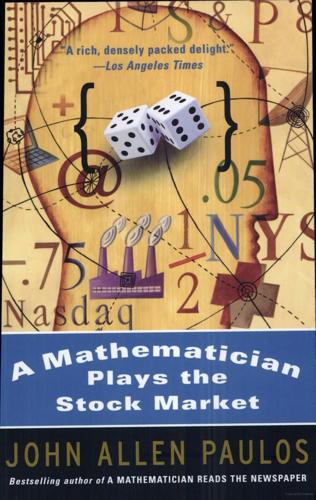
A Mathematician Plays the Stock Market
by
John Allen Paulos
Published 1 Jan 2003
Usually a hardheaded fellow, I was nevertheless falling disastrously in love. Although my particular heartthrob was WCOM, almost all of what I will say about my experience is unfortunately applicable to many other stocks and many other investors. Wherever WCOM appears, you may wish to substitute the symbols for Lucent, Tyco, Intel, Yahoo, AOL-Time Warner, Global Crossing, Enron, Adelphia, or, perhaps, the generic symbols WOE or BANE. The time frame of the book—in the midst of a market collapse after a heady, nearly decade-long surge—may also appear rather more specific and constraining than it is. Almost all the points made herein are rather general or can be generalized with a little common sense.
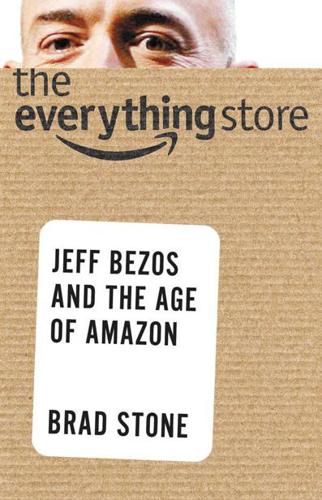
The Everything Store: Jeff Bezos and the Age of Amazon
by
Brad Stone
Published 14 Oct 2013
He had a well-honed instinct for big, mass-culture books and an intuitive feel for survival inside large corporations. When AOL acquired Time Warner in 2000, he directed the staff of Warner Books to wear I Heart AOL T-shirts and made a video of everyone standing around a piano singing “Unforgettable” (the company had just published Natalie Cole’s autobiography). He was thinking about e-books—and losing money on them—long before almost anyone else in the industry. Kirshbaum reentered a very different environment than the one he had left in 2005 when he departed AOL Time Warner to become an agent. Animosity toward Amazon had become a defining fact of life in the book business.
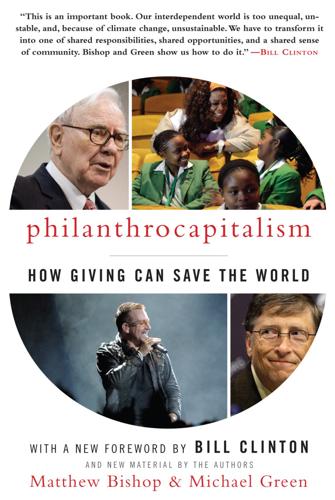
Philanthrocapitalism
by
Matthew Bishop
,
Michael Green
and
Bill Clinton
Published 29 Sep 2008
“Bill Gates told me once, ‘Thank you for drawing my attention to philanthropy,’ ” he says in one monologue; then, “Men should be banned from public office for a hundred years”; then, “You’d look ten years younger if you wore a hairpiece.” In his business career, this limited attention span might be blamed for some truly bad decisions, such as his enthusiasm for the 2000 merger of Time Warner (by then the owner of CNN) and AOL, which cost Time Warner billions of dollars. But, equally, it did not stop him from making some hugely successful bets, such as creating CNN, and later, becoming the largest private landowner and bison farmer in America. As his executives say, with a mixture of resignation and respect, “That’s just the way Ted is.”
…
Described as “a unique platform for the best minds of our generation,” the futuristic gathering throws together leading artists, scientists, politicians, business leaders, and other interesting thinkers in blue-sky discussions of topics ranging from “Inside the Brain of the Terrorist” to “The Body, Health, and Globalization.” Pledging $1 billion is one thing, handing over the money quite another. The disastrous performance of the combined AOL Time Warner, and the general troubles of the stock market following the bursting of the dot-com bubble, did serious damage to Turner’s fortune. For a while, it seemed that he would be unable to honor his pledges. “I’d lost eighty percent of my wealth; it didn’t look like I’d be able to afford it,” Turner says.

The Bill Gates Problem: Reckoning With the Myth of the Good Billionaire
by
Tim Schwab
Published 13 Nov 2023
face high-profile legal challenges: Charles Arthur, “Microsoft Loses EU Antitrust Fine Appeal,” Guardian, June 27, 2012, https://www.theguardian.com/technology/2012/jun/27/microsoft-loses-eu-antitrust-fine-appeal; Steve Lohr and David D. Kirkpatrick, “Microsoft and AOL Time Warner Settle Antitrust Suit,” New York Times, May 29, 2003, https://www.nytimes.com/2003/05/29/technology/microsoft-and-aol-time-warner-settle-antitrust-suit.html. plowed more than $20 billion: Katie Hafner, “Bill Gates and His Wife Give Away $3.3 Billion,” New York Times, February 6, 1999, https://www.nytimes.com/1999/02/06/us/bill-gates-and-his-wife-give-away-3.3-billion.html.
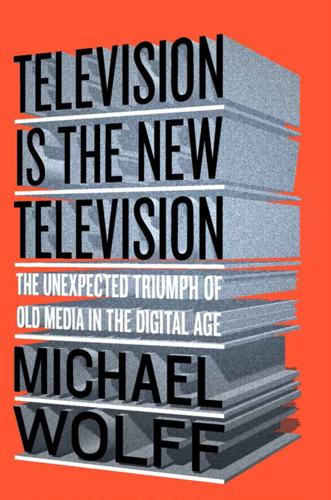
Television Is the New Television: The Unexpected Triumph of Old Media in the Digital Age
by
Michael Wolff
Published 22 Jun 2015
This new breed, less focused on advertising and more focused on fees, and all out of the nascent cable industry, came to control the media business: Jeff Bewkes, CEO of Time Warner; Chase Carey, COO of 21st Century Fox; Sumner Redstone, who built Viacom; Tom Freston, who came out of MTV to run Viacom; Bob Pittman, MTV’s founder, who spearheaded the rise of AOL and its merger with Time Warner, and who now runs Clear Channel; Philippe Dauman, the current CEO of Viacom; and Ted Turner, in many ways the originator of the cable programming model with CNN and the Turner Broadcasting properties. The singular and necessary accomplishment, beyond getting a critical mass of cable companies to carry your station (for a period this resulted in a lot of ownership trade-offs—we’ll carry you, if you give us an ownership stake), was to get a share of the subscription fees.
…
In other words, Moonves had reinvented broadcast television; a lagging business became a growth industry. Meanwhile, Time Warner, having spun off its own cable company—next to Comcast, the nation’s second largest—became itself an effective pure content play. (It had already jettisoned its music company; it would soon get rid of its troubled AOL division; and it would eventually spin off its magazines.) Time Warner’s essential business became its negotiation with cable operators for HBO, CNN, and the Turner channels. In a remarkable turnaround, Time Warner, which had, not long ago, nearly broken itself with a bet on a digital future, saw its cable fees rise so quickly that, in little more than half a decade following Icahn’s play for the company and his call to streamline it into a pure content play, its share price had doubled (a doubling even without cable, AOL, and publishing—all spun off to the shareholders).
…
A&E Networks, 61, 65, 117 ABC, 183 Abrahamsen, Kurt, 2 Advance Communications, 116, 117 advertising: adjacency strategy of, 59 ad-skipping devices, 49, 84, 96 and audience, 63, 72–73, 87, 198–99 billboards, 77, 115 brand, 23–24, 25, 26, 49–50, 67, 182–83 buying space vs. making ads, 48, 57, 63, 87–88 classified, 69, 115 and content, 59, 63, 84, 158 CPMs, 52, 65, 66, 71–72, 73 direct mail, 55–56, 69–70, 86 direct-response, 24, 25, 26, 85, 87 display, 69 dual markets for, 80–81, 85–88 falling prices of, 33, 50, 51, 52, 70–73, 74, 78, 167 global online industry, 75–76 government regulation of, 56 low tolerance for, 83–85 market predictions for, 79 and mass media, 123 measuring effectiveness of, 71–72, 79, 84–85, 87 media, 18, 21, 52 print, 25, 54, 69–71 programmatic buying/selling, 73, 76–80 as pyramid scheme, 57–58 remnant space for, 78 response rate, 55, 56–57, 72 as revenue source, 41, 43, 48 revolution in, 69–74 sales, 40–41, 56 and sports, 181–88 television, 24, 25, 40, 70, 79–80, 83–84, 99, 115, 119, 125, 129 too much space, 76 and YouTube, 153, 154–55 Advertising Week, New York, 21 Aereo, 112 aggregation, 18–19, 50–51, 59, 66, 190, 195–96 Ailes, Roger, 119 Alibaba, 19, 20 Allen, Mel, 182 Amazon, 42, 110, 112, 142, 161, 169 Andreessen, Marc, 2, 3, 4, 39, 60, 83, 97 AOL: and Huffington Post, 12, 58 and newspaper format, 18, 33, 189 and Time Warner, 11, 117, 126, 132, 159 Apple, 101–5 Apple TV, 109, 112, 113 Arledge, Roone, 183, 187 AT&T, 135, 136 audience: and advertising, 63, 72–73, 87, 198–99 auctions for, 77 behavior patterns of, 50 building, 47, 48, 50 and carriage, 125, 184–85 cost vs. profitability of, 54 demographics of, 73, 78 downmarket vs. upmarket, 192 drive-by, 54 eyeballs of, 57, 77–78 holding the attention of, 32, 50, 67, 71, 74 identifying, 47–49 illusory nature of, 64, 73–74 manipulation of, 50 mass, 35, 76, 195 measuring and monitoring, 48–50, 57, 77 migration of, 70 monetizing, 16, 40 and pay cable, 47–48 programming focused on, 128 and scarcity premium, 72 self-selected, 78 stand-alone unbranded entities, 78–79 as traffic, 18–19, 49–53, 73, 86, 196 value of, 48, 49 you don’t own it, 53, 54 Auletta, Ken, 95–100 Bartz, Carol, 19 Bewkes, Jeffrey, 121, 126 Blockbuster, 91 Blu-ray DVD players, 110–11 books, 115, 117, 124 broadband, 109, 135, 138–41 broadcast, 108, 112, 131, 168 BSkyB, 120 bundling-unbundling-rebundling, 171–78 BuzzFeed, 12, 18, 23, 57, 58–61, 62, 66, 67, 87, 102, 189, 193–94, 195–96, 199 cable companies: and broadband, 140–41 and bundling/unbundling, 174–78 bypassing fees of, 112 and costs, 99–100, 174 declining quality of, 168 deregulation of, 127 and digital access, 133 and government bureaucracy, 139 and Internet, 125, 129, 130, 135 mean and stingy deals from, 10 and “must-carry rule,” 131 pay cable model, 47–48, 113, 127 paying content providers, 125–26, 127, 130, 133 and sports, 184–85 streaming, 99–100 and television, see television upgrades, 134, 168 Cable Television Consumer Protection and Competition Act (1992), 96, 131 Cannes Lions Festival, France, 21 Carey, Chase, 126 Carlson, Nicholas, 21–22 carriage, 125, 126, 131–32, 184–85 CBS, 97, 118, 121, 129, 130, 131, 160, 185, 198 Chiat, Jay, 101–2 Clear Channel, 116, 126 click fraud, 26, 74 CNN, 22, 32, 35, 65, 95, 126, 130, 132 Coleman, Greg, 58 Comcast, 10, 116, 120, 130, 132–36, 138, 143–44, 175, 185 Comedy Central, 3, 5, 130 computers: cloud, 108 as entertainment devices, 106 and television, 105, 108, 110, 111 comScore, 63 Condé Nast, 116, 117 consolivision, 114, 115–21 Consumer Electronics Show (CES), 83 “cool,” meanings of, 41, 63 copyright infringement, 146–49 Coupland, Douglas, 107 Couric, Katie, 21 Cue, Eddy, 103 curation, 36 Cusack, John, 2 Dacron Republican-Democrat, The, 18, 167 Dauman, Philippe, 126 Deadline Hollywood, 25 Delphi, 118 Demand Media, 52 Denton, Nick, 193–94, 196, 197 Deutsch, Donny, 2 digital convergence, 107 digital media: and advertising, 18, 21, 24, 25, 52, 70, 76, 84–85, 87, 128, 130 audience for, 16–17, 49, 54, 74, 87 and bundling/unbundling, 174–78 bureaucracies of, 19, 24, 138, 199 changed business of, 194–200 circulations strategy of, 56–57 click fraud on, 26, 74 and content producers, 189–92 as distribution deal, 104, 194, 199 efficiency of, 195 forecasts for, 25–26 functionality of, 16, 17, 41, 166, 168 image-based, 157–58 inevitability of the new, 5, 10, 12, 14, 15 life expectancy of, 194 lowered value of, 52, 81, 190 as news outlet, 33, 58 and profitability, 15, 49, 66 promotion as chief function of, 56–58 as reinvention of media business, 42, 168, 194 revenue sources of, 43 and sports, 181–88 digital media (cont.) stalled market of, 58 technology view of, 3, 11, 17, 43, 152–53, 166 traffic sought by, 14, 52, 59, 86 transitory nature of, 23, 194 unregulated, 138 and user satisfaction, 18 as video, 97–98, 109, 139, 157–59, 169 vs. traditional, 1–5, 14, 40, 190–91 as wasteland, 190 Digital Millennium Copyright Act (DMCA), 148 direct marketing, 55–56, 69–70, 86 Discovery Channel, 117 Disney, 60, 61, 102, 116, 117, 154, 185 dongle streaming device, 110, 111 dot-com crash, 65, 66, 134, 148 DoubleClick, 72 DSL, 133–34, 135 DVDs, 91–92, 111, 190 DVorkin, Lewis, 66–67 DVR, 83, 110, 146 entertainment businesses, 115, 142, 146, 168, 189–90, 192 ESPN, 95, 117, 120, 126, 127, 171, 184–85 Ethernet, 109 Everson, Carolyn, 40–41 Facebook, 86, 195 advertising on, 40–41, 161 and BuzzFeed, 59, 60, 102 News Feed, 33, 36–37, 157 rise of, 26, 117, 130–31 social strategy of, 52–53 and television, 157–62 as utility, 41, 42, 43 video on, 44, 158–62 FCC, 141–44, 174, 175 fiber optics, 135 Final Cut Pro, 62 Food Network, 21–22 Forbes, 57–58, 65–67, 161 Fox Broadcasting Company, 97 Fox Interactive Media, 20 Fox Network, 118, 120, 183, 185 Fox News Channel, 32, 35, 119 Freston, Tom, 62, 117, 126 Galloway, Scott, 99 Gannett, 116 Gawker media, 33, 193–97 generation gap, 13, 26 Godard, Jean-Luc, 31 Google, 42, 43, 52, 112 AdSense, 59 and Android, 102, 110 and digital vs. old media, 4, 40, 195 and DoubleClick, 72 income sources of, 26 and search engine wars, 15–16, 53 and sports, 181, 186 and traffic gaming, 59 and Yahoo, 16, 20 and YouTube, 1, 96, 147–49, 151–55, 158, 160 Google Chromecast, 110 Google News, 33 Greenfield, Richard, 96 Grey, Brad, 2 Guardian, The, 13 Hastings, Reed, 92–93, 98, 142, 187 HBO, 64, 95, 98, 100, 114, 117, 125, 126, 127, 130, 132, 171, 176, 177 Hearst, 61, 116, 117 Herzog, Doug, 2 Hirschhorn, Jason, 95 Hoffner, Jordon, 2 Holt, Dennis, 48 House of Cards, 94 Huffington, Arianna, 11–12, 34, 58–59 Huffington Post, The, 12, 18, 34, 58, 66, 189 Hughes, Chris, 196–97 Hulu, 5, 161 Icahn, Carl, 130, 132 information: bare minimum level of, 52 branding, 52 as currency, 32 personalized, 157, 158 real value of, 123 sources of, 52 surgical selection of, 51 too much, 35–36 transient nature of, 37 wanting to be free, 123, 124, 167, 189–90 intellectual property, 146–49, 194 Internet: bundling, 177–78 and cable, 125, 129, 130, 135 free, 123, 124, 139–41 moralistic intensity of, 191–92 “net neutrality,” 138–44 and OTT, 113 publishing, 65–66 and television, 91, 108, 111, 112, 139 two-speed, 143 and video, 26, 145, 159 Internet protocol (IP), 92, 94, 109, 110–11, 134 Jarvis, Jeff, 11 Jobs, Steve, 101–4, 105 Johansson, Scarlet, 2 journalists, technology, 10–11, 13 Kvamme, Mark, 2, 3 Kyncl, Robert, 96 Lauer, Matt, 21 Lerer, Ken, 11, 12, 58 Levinsohn, Ross, 20 licensing formats, 119–20, 126 LL Cool J, 2 Loeb, Dan, 19–20 magazines, 21, 56, 86, 104, 116 attention demands of, 71 CPMs, 52, 65, 66, 71–72, 73 production and distribution costs, 71 revenue sources, 48, 54, 115, 124 space limitations of, 72 Maker Studios, 154 Mann, Michael, 2 Martin, Laura, 175 Mayer, Marissa, 20–21 McCain, John, 174 McConaughey, Matthew, 2 McFee, Abigail, 27 McLuhan, Marshall, 107 media: advertising in, 18, 21, 52 and Apple, 101–3 audience for, 16–17, 40, 72 bundling/unbundling, 171–78 and consumer behavior, 12 content costs of, 165–67, 189 crossover executives in, 17, 20 deal-making in, 93 digital, see digital media disrupted paradigm of, 83 as entertainment, 31, 85 generation gap in, 13 hierarchical business of, 11 income sources for, 16 licensing and distribution, 104 low- vs. high-end, 85–88, 165, 187 and marketing, 64 mass, 39, 123, 195 as narrative, 31, 67 news outlets, 12, 18, 31–37 new world market for, 85 no-cost, 43 ownership trade-offs, 126–27 pirated, 146–49, 172 quest for new medium, 12 removing salesmen from, 76 and scarcity premium, 72, 76 and sports, 181–88 streaming media devices, 109–10 as television, 118, 121 traditional, value of, 4, 71 transformation of, 12–14 user-supported content, 127–28, 147–49, 190 as zero-sum game, 4, 23–24 media brand, 51 media business, 115–16 media buyer, 48 Microsoft, 16 Microsoft Xbox, 110 Milken, Michael, 11 Milner, Yuri, 43, 160 mobiles, 74, 102–3 Moonves, Les, 9–10, 12, 97, 131–32, 135–36 Morris, Kevin, 1–4 movies, 115, 123, 124, 146 MSN, 18, 33 MTV, 126, 130 Murdoch, Elisabeth, 119 Murdoch, James, 61, 119–20 Murdoch, Rupert, 103–4, 116–21 music industry, 1, 101–3, 146–47, 172, 173–74 Myspace, 20, 95, 117, 118 Napster, 146, 147 Nathanson, Michael, 25–26 NBC, 130, 132, 143, 160, 185 Netflix, 91–94, 97, 98–100, 139–40, 142–44, 155, 161, 169, 176, 177, 190 “net neutrality,” 138–44 Netscape, 39, 97 New Republic, The, 196–97 news: anchormen [-women] of, 35 as branding device, 59 declining value of, 34, 37, 168 economic triage of, 33 and elections, 59, 60 lower-cost, 32, 33, 35 media outlets for, 31–37, 58, 65 monetizing, 64 network, 35 as public good, 32 as reality, 31 repetitive, 33, 36 as storytelling, 31, 32 ubiquity of, 34 unprofitability of, 34, 35 and Vice, 63–64 News Corp, 20, 116, 117, 118 newspapers: attention demands of, 71 classified ads, 69, 115 consolidation of, 116 digital replacement of, 24–25, 167 entertainment supplements, 34 income sources of, 69, 124 local retailers publicized in, 115 nineteenth-century, 123 personalized, 33, 36–37 production and distribution costs, 71 space limitations of, 72 Web similarity to, 18, 33, 189 New Yorker, 94–100 New York magazine, 47, 48, 53, 61 New York Times, The, 12–13, 27, 35, 63, 73, 78, 165, 166 Nickelodeon, 95, 130 Nintendo Wii, 110 Oliver, John, 141 OTT (over-the-top) content venues, 84, 94, 100, 108, 109, 111–14, 130, 161, 175, 176–77 Outbrain, 53, 197 Paley, William, 160 Paramount Pictures, 2 Peretti, Jonah, 53, 58–59 pirated media, 146–49, 172 Pittman, Bob, 126 platform function, 93, 158, 161 Politico, 189 portal wars, 15 POTS (plain old telephone service), 135 programmatic buying, 73 publishing: business of, 55, 56, 115 Internet, 65–66 print, 66, 172 radio, 115, 116, 124 Redstone, Sumner, 121, 126, 147 Reilly, Kevin, 2 ReplayTV, 83 Roberts, Brian, 10 Rodman, Dennis, 64 Rogers Communications, 65 Roku, 109, 113 Rubicon Project, 75 Rutledge, Tom, 113 Saffo, Paul, 96–97 Sandberg, Sheryl, Lean In, 41 Scripps Networks, 21–22 search engine optimization (SEO), 51–53, 73 search engine wars, 15–16, 51, 53 Sears, Jay, 75–76, 80 Semel, Terry, 17 Sequoia Capital, 2 Showtime, 98, 177 60 Minutes, 64 smart phones, 105–6, 110, 111 smart TVs, 111, 113 Smith, Ben, 23 Smith, Shane, 62, 63–65 Snyder, Gabriel, 197 social media, 56–57, 62, 73, 158 Sony PlayStation, 110 Sorrell, Martin, 61, 99 South Park, 64 Spacey, Kevin, 94 sports events, 85, 181–88 Starz, 92, 93 Stewart, Adam, 2 Stone, Matt, 2, 4, 5 storytelling, 16, 31–32, 152, 190, 191, 199 Super Bowl, 23, 85 Supreme Court, U.S., 112 Swisher, Kara, 11 tablets, 103–6, 111 TCV, 61, 63 telephone companies (telcos), 135, 140–41, 177 television: advertising on, 24, 25, 40, 70, 79–80, 83–84, 99–100, 115, 119, 125, 129 anti-television views, 39–40 attention demands of, 71 as box, 107–8, 111, 113–14 broadcast, 108, 112, 132, 168 and bundling/unbundling, 173–75 cable networks, 95–96, 99–100, 109, 119, 124–25, 131–32, 139, 172, 184 comparisons with, 39, 167, 191–92, 197–98 and computers, 105, 108, 110, 111 deadwood on, 19 digital’s perceived threat to, 23, 25–27, 42–43 as distribution channel, 28, 94 entertainment, 111, 114, 190 evolution of, 190, 197–99 expanding, 94–96, 99–100, 107, 111–12, 120, 124, 132 and Facebook, 157–62 and family values, 191 free, 123 geographical organization of, 92 golden age of, 172 government regulation of, 137–38, 175 HDMI port, 110 income sources of, 24, 25, 28, 85, 93, 96, 99–100, 115, 117 and Internet, 91, 108, 111, 112, 139 licensing deals, 93, 97, 112, 126 as model, 21, 28, 58, 59, 64–65, 99–100, 114, 118, 168, 198 and Netflix, 91, 93–94 networks, 47, 64, 80, 131 pay for, 113, 124–28 prime time, 79–81, 96 profitability of, 4, 24 programming schedule, 83, 114, 128 ratings wars, 183 reality, 111–12, 191 as reborn industry, 96, 132, 191–92, 199 share price multiple, 40 smart TVs, 111, 113 and sports, 181–88 steady, old-fashioned nature of, 9–10, 24, 27 and storytelling, 16, 190, 191, 199 syndication, 96, 176 undifferentiated inventory supply, 79 value of, 85, 121, 198–99 and video, 96–97, 98, 108–9, 141–42, 145–46, 152–55, 158, 165–69 Thompson, Scott, 19 Time Inc., 159 Time Warner, 11, 61, 64–65, 116, 117, 119–21, 126, 130, 132, 159 Time Warner Cable (TWC), 120, 130, 135–36, 143, 185 TiVo, 83, 110 traffic: aggregation methods, 18–19, 50–51, 59, 66, 190, 195–96 audience as, 18–19, 49–53 exchanges of, 53 pumping, 73 traffic arbitrage, 52, 66 traffic loop aggregators, 73 transcendence, 42 transformation: inevitability of, 10, 12–13 print to digital, 65–67 as shell game, 66 Tribune, 116 True/Slant, 66–67 Turner, Ted, 126, 127 Turner Broadcasting, 117, 126, 127, 130, 132 21st Century Fox, 61, 118–21, 126 Twitter, 26, 33 unbundling, 171–78 utilities, 41–42 Verizon FiOS, 97, 135, 177 Viacom, 3, 116, 117, 118, 121, 126, 129, 130, 131, 147–49, 152 Vice, 57–58, 61–65, 67 video: ads on, 63, 158, 167 amateur (cheap), 167 and BuzzFeed.

Move Fast and Break Things: How Facebook, Google, and Amazon Cornered Culture and Undermined Democracy
by
Jonathan Taplin
Published 17 Apr 2017
And then one day in the summer of 2002 they announced the service, called Movielink, in a joint venture with Warner Bros., Universal Studios, MGM, and Paramount Pictures. Soon after that, the major studios stopped licensing films to Intertainer, and the service was forced to close down. This broke my heart, and I refused to take it lying down. In September of 2002, Intertainer filed an antitrust suit against three major entertainment companies, AOL Time Warner, Vivendi Universal, and Sony as well as their wholly owned service Movielink in the United States District Court for the Central District of California, Western Division, accusing them of conspiracy to fix prices in the digital distribution of entertainment and restraint of trade. In March of 2006, the defendants reached an out-of-court settlement with Intertainer.
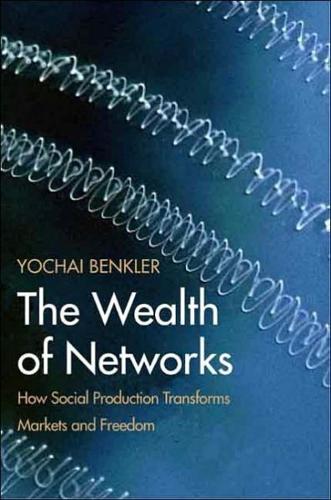
The Wealth of Networks: How Social Production Transforms Markets and Freedom
by
Yochai Benkler
Published 14 May 2006
The most prominent decision came out of Portland, Oregon, where the Federal Court of Appeals for the Ninth Circuit held that broadband was part information service and part telecommunications service, but not a cable service. The FCC, not the cable franchising authority, had power to regulate it. 161 At the same time, as part of the approval of the AOL-Time Warner merger, the Federal Trade Commission (FTC) required the new company to give at least three competitors open access to its broadband facilities, should AOL be offered cable broadband facilities over Time Warner. 707 The AOL-Time Warner merger requirements, along with the Ninth Circuit's finding that cable broadband included a telecommunications component, seemed to indicate that cable broadband transport would come to be treated as a common carrier.

Digital Disconnect: How Capitalism Is Turning the Internet Against Democracy
by
Robert W. McChesney
Published 5 Mar 2013
That experience is now chalked up as among the most insane flights of fancy in business history and an unmitigated disaster for the media giants, who acted as if they had only a matter of months until the Internet destroyed them. Some of the digital ventures they invested in were laughably implausible. The nadir came in January 2000 when the AOL–Time Warner merger was announced; AOL was the dominant partner in the deal even though it had just a smidgen of Time Warner’s assets, sales, or profits. What AOL had was a mother lode of world-class hype. It soon became clear that once the Internet shifted from dial-up to broadband, AOL had no business model and was next to worthless.141 How could Time Warner, the mightiest of the mighty media conglomerates, have missed something so elementary? Despite the hit to corporate balance sheets due to the Internet bubble, in 2000 commercial media markets remained lucrative, and the immediate future looked just fine, especially for the Hollywood-based conglomerates.
…
Pulse does not generate original news, and its founders concede that they don’t know much about journalism.86 Nor do any of the other mobile aggregators generate any original journalism,87 but some of their revenues will probably end up in the hands of other news media and may eventually contribute to paying actual journalists. The journalism company that has made the greatest impact online has been AOL, which was tenuously married to Time Warner for a decade until it went independent again in 2009. AOL purchased Patch around then, to be a “hyperlocal” digital news service, with branches in some 860 communities, supported by advertising. In other words, it would be like a digital newspaper but without the massive production expenses.
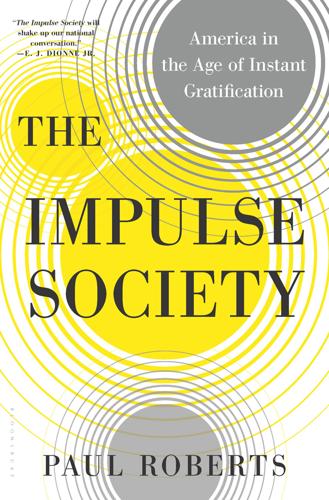
The Impulse Society: America in the Age of Instant Gratification
by
Paul Roberts
Published 1 Sep 2014
Lydia Depillis, “Congrats, CEOs! You’re Making 273 Times the Pay of the Average Worker,” Wonkblog, Washington Post, June 26, 2013, http://www.washingtonpost.com/blogs/wonkblog/wp/2013/06/26/congrats-ceos-youre-making-273-times-the-pay-of-the-average-worker/. 37. Ahmed Abuiliazeed and Al-Motaz Bellah Al-Agamawi, “AOL Time Warner Merger: Case Analysis, Strategic Management of Technology,” SlideShare, http://www.slideshare.net/magamawi/aol-time-warnercase-analysis. 38. A. Rappaport, et al., “Stock or Cash: The Trade-offs for Buyers and Sellers in Mergers and Acquisitions,” Harvard Business Review, Nov.-Dec. 1999, p. 147. http://www2.warwick.ac.uk/fac/soc/law/pg/offer/llm/iel/mas_sample__lecture.pdf 39.

This Is for Everyone: The Captivating Memoir From the Inventor of the World Wide Web
by
Tim Berners-Lee
Published 8 Sep 2025
Jim and I were later joined by Ora Lassila, a semantic web enthusiast who worked for Nokia in Boston. Unfortunately, as Microsoft continued to ‘embrace’ the web, its influence began to rival that of W3C. Internet Explorer won the first browser war in a rout – by 2000, it was approaching 90 per cent market share. (Netscape, meanwhile, sold itself to AOL, which subsequently merged with Time Warner, in what is now regarded as one of the most disastrous corporate mergers of all time.) Of course, the next phases were to ‘extend’ the web by forcing de facto Microsoft-friendly standards on users, then ‘innovate’ (or, in the DOJ’s terms, ‘extinguish’) by deprecating competing technologies.
…
Microsoft Exchange Server had pushed me to the brink of madness several times, so it was with great relief that we switched over to Mac OS X shortly after its arrival in 2001. In 1996, Apple had purchased the remains of NeXT, and soon Steve Jobs was reinstated as the CEO. As a long-time NeXT enthusiast, I could easily see the platform’s DNA in the new Macintosh operating system. I have used it ever since. Following AOL Time Warner’s massive $50 billion write-down in 2001 – the largest in the history of business up to that point – Netscape began to dwindle away. The web bubble popped, a great number of start-ups failed, and the retail dot-com speculators returned to their day jobs. But it was in this somewhat deflated environment that perhaps the fullest realization to date of the original idea for the web was born: Wikipedia.
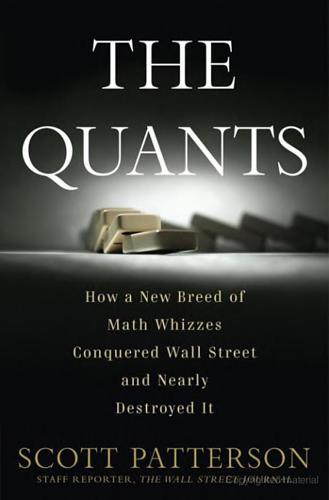
The Quants
by
Scott Patterson
Published 2 Feb 2010
Few traders would be as well versed at it as Weinstein, who began putting together one of the most successful and powerful credit derivatives trading outfits on Wall Street. By 2002, the economy was in a ditch. With formerly blue chip companies such as Enron and WorldCom unraveling, the worry was that anything could happen. Investors started feeling anxious about the largest media company in the world at the time, AOL Time Warner. Debt holders, especially, were panicking, while the stock was down less than 20 percent. One day Weinstein was strolling past AOL’s headquarters near Rockefeller Center. Thinking several steps into the future, much like a chess player plotting his strategy multiple moves in advance, he realized that while the stock had fallen about 20 percent, the collapse in its bond prices was far too severe, as if the company were on the verge of bankruptcy.
…
Such a catastrophe was unlikely for a company with so many long-standing, relatively profitable businesses, including the television networks CNN and HBO. Deciding that the company had a good chance of surviving the turmoil, he purchased AOL bonds while shorting the stock to hedge the position. The bet turned into a huge home run as the bond market, and AOL (now simply Time Warner), recovered. Gambling became a way of life for Weinstein’s crew. One of his first hires was Bing Wang, who went on to finish in thirty-fourth place in the World Series of Poker in 2005. Weinstein learned that several traders at Deutsche were members of MIT’s secretive blackjack team. He was soon joining them a few times a year to hit the blackjack tables in Las Vegas, deploying the skills he’d learned reading Thorp’s Beat the Dealer in college.
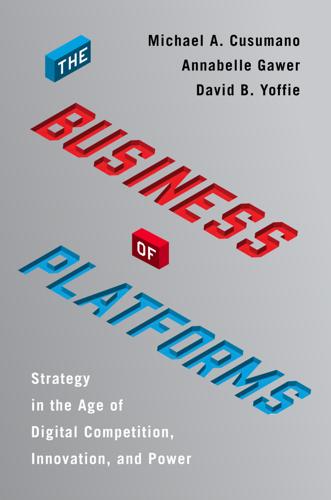
The Business of Platforms: Strategy in the Age of Digital Competition, Innovation, and Power
by
Michael A. Cusumano
,
Annabelle Gawer
and
David B. Yoffie
Published 6 May 2019
But before heading down this path, it is important to recognize that buying your way into the platform world is fraught with danger. The skills to manage a platform can be antithetical to managing an old command-and-control organization. Notable disasters have included News Corporation’s acquisition of MySpace and the AOL-Time-Warner merger. Yet under the right conditions, buying a platform may be the right answer. In businesses where new, emerging platforms are likely to capture a significant share (e.g., taxis and retail), incumbent firms cannot sit on the sidelines indefinitely. In general, the biggest risk in acquiring a platform has been not retaining key talent, integrating technology into legacy systems, and cultural rejection from the parent.

More Joel on Software
by
Joel Spolsky
Published 25 Jun 2008
Because the more people you added to that team, the more likely they would be to have one real grump who thought it was unprofessional and immature to write “Most things actually work!” on your web site. Not to mention the comment, “Winamp 3: Almost as new as Winamp 2!” That kind of stuff is what made us love Winamp. By the time AOL Time Warner Corporate Weenieheads got their hands on that thing, the funny stuff from the web site was gone. You can just see them, fuming and festering and snivelling like Salieri in the movie Amadeus, trying to beat down all signs of creativity that might scare one old lady in Minnesota, at the cost of wiping out anything that might have made people like the product.
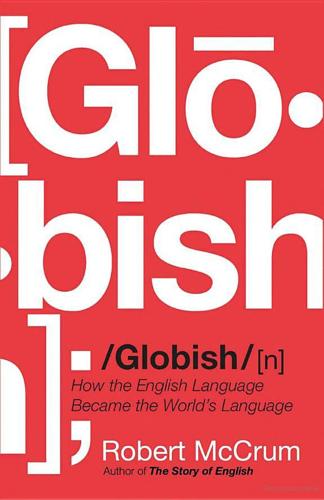
Globish: How the English Language Became the World's Language
by
Robert McCrum
Published 24 May 2010
So of course there will be the Discovery Channel and Kids’ Corner with its hours of Tom and Jerry, but there is another channel, Potpourri, broadcasting in Malayalam. In China, the state-run broadcaster CCTV and the provincial and municipal stations offer a total of about 2,100 channels and the availability of non-domestic television is limited. AOL Time Warner, News Corp and Phoenix TV (based in Hong Kong) are allowed to transmit via cable in Guangdong province. In Africa, there is the example of Ghana: the television transmits in English because that is the national language. Local radio, however broadcasts in local dialects (twee, eweh and gah) and some local television programmes are extremely idiosyncratic.
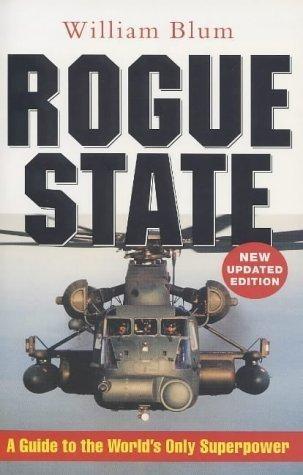
Rogue State: A Guide to the World's Only Superpower
by
William Blum
Published 31 Mar 2002
. • NBC is canceling an appearance by a nuclear activist because she has criticized General Electric, which owns the network. Another nuclear activist or author, or opponent of military spending, is unwelcome at CBS because it belongs to Westinghouse; while yet another finds doors closed at ABC because of having treated the Disney conglomerate with less than reverence; ditto at CNN, owned by the AOL-Time-Warner octopus; while the advertisers are increasingly influencing the content of the news stories. (As A. J. Liebling famously wrote: "If you want freedom of the press, you have to own one.") • During a new US invasion abroad, the media is being severely restricted as to what it can report to the American people about the war; reporters are required to submit their copy to the Pentagon censor, and are told where they can go, what they can film, who they can interview; those who don't toe the line are transferred by their employer under heavy Pentagon pressure. • The FBI is placing ads in Vietnamese-language and Russian-language newspapers in the US asking immigrants to report on suspected spies amongst their numbers. • A prison inmate's sacramental confession to a Catholic priest is surreptitiously being taped by prison officials.
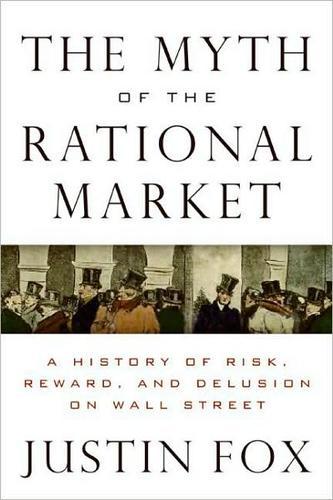
The Myth of the Rational Market: A History of Risk, Reward, and Delusion on Wall Street
by
Justin Fox
Published 29 May 2009
Agee, James, 220 agricultural markets, 39–40, 93, 145 Akerlof, George, 181, 187 Alchian, Armen, 93, 250 Alexander, Sidney, 72 Allais, Maurice, 77 Allen, Roy, 64 American Bankers Association, 318 American Economic Association, 42, 183, 288 American Finance Association (AFA), 104, 105–6, 198, 201–2, 247, 274, 284 American Mathematical Association, 216–17 American National Bank, 128, 140–41 American Statistical Association, 17 Analysts Journal, 118 Analytic Investment Management, 218 “Anomalous Evidence Regarding Market Efficiency” (Jensen), 205 AOL-Time Warner merger, 267 “Application of the Efficient Market Model to U.S. Treasury Bills” (Roll), 103 AQR Capital Management, 260 arbitrage and Buffett, 222 described, 116 and fund management, 225–26 and indexes, 230–31 limits of, 254–55, 280–81 and Merton, 148 and misinformation, 299–300 and “noise traders,” 252 and options, 220, 283 and the rational market hypothesis, 192 and S&P 500 mispricings, 249–50 and the tech bubble, 262 and value investing, 117 Aristotle, 30 Arrow, Kenneth, 77–78, 149–50, 181, 183, 198, 237, 302–4, 305, 344n. 9, 358n. 19, 322 Arthur, Brian, 303–5 Arthur D.
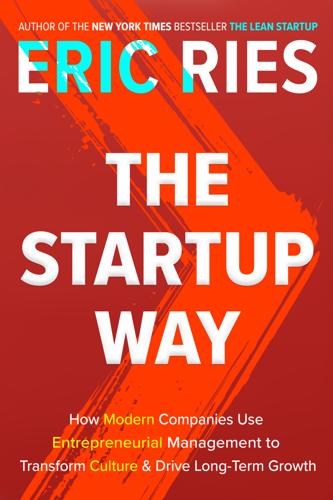
The Startup Way: Making Entrepreneurship a Fundamental Discipline of Every Enterprise
by
Eric Ries
Published 15 Mar 2017
Clark Professor of Business Administration at Harvard Business School “To succeed in the Third Wave, an era where technology will disrupt everything from education to healthcare, companies will need new tools and approaches. Eric Ries provides a road map for companies on how to use entrepreneurial principles to achieve transformational growth.” —Steve Case, former chairman of AOL Time Warner and author of the New York Times bestseller The Third Wave “The Startup Way creates a vision and blueprint for a new form of management that combines entrepreneurial and general management skills and practices. The inspirational examples across multiple, diverse organizations show that integrating the highly iterative, experimental mindset and skills of startups into established organizations is key to unlocking continuous innovation and sustainable growth….Provides clear and useful guidance for tackling the toughest challenges.
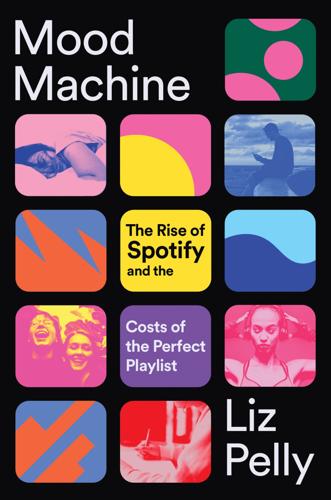
Mood Machine: The Rise of Spotify and the Costs of the Perfect Playlist
by
Liz Pelly
Published 7 Jan 2025
The file-sharing company went bankrupt, and Middelhoff was fired.3 While some industry factions were spending money on TV commercials broadcasting the virtues of buying CDs to put money in artists’ pockets, others were trying to figure out how they could launch all-you-can-eat subscription services that certain artists and managers, from the start, vehemently opposed. Two of the first streaming platforms both launched in 2001: PressPlay, a joint venture between Universal and Sony, and MusicNet, a creation of BMG, EMI, AOL Time Warner, and Real Networks. Both were categorical disasters, not just because of the reportedly clunky interfaces and complicated user terms, but because of the crumbs they were set to pay musicians. Some artists could quickly see that these efforts might be more about the majors capitalizing on consumer trends to boost label profits, rather than trying to figure out fair licensing deals for those who created the music.
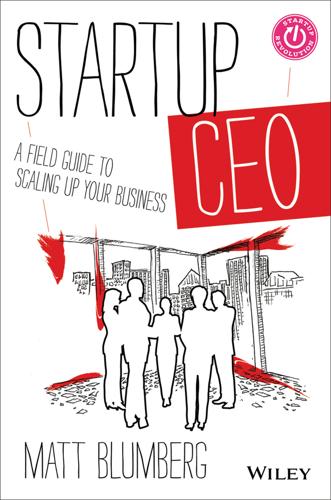
Startup CEO: A Field Guide to Scaling Up Your Business, + Website
by
Matt Blumberg
Published 13 Aug 2013
For very small companies, diversifying can be particularly tricky, but if you have a partial solution and adding some new technology or products give you a whole solution, it may make a lot of sense. Focusing As much success as we’ve had with some of our acquisitions, our experience at Return Path has proven that the road to hell is paved with failed diversification strategies. The AOL/Time Warner merger is probably the most famous example: “convergence” never materialized and both companies came close to failing. Even with that counterexample staring us in the face, we tried the convergence route at Return Path—and it almost brought down our company. When Return Path first made the transition from startup to scaling, the story we told was all about diversification and convergence.
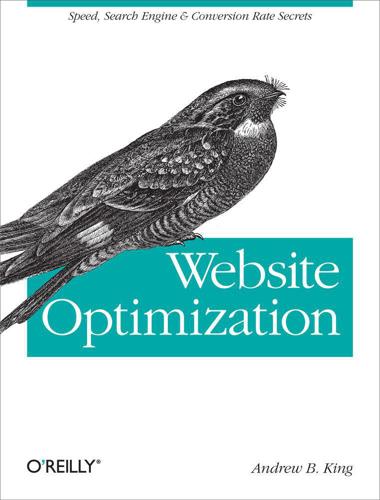
Website Optimization
by
Andrew B. King
Published 15 Mar 2008
User Interface Library), Relying on Ajax Libraries, Relying on Ajax Libraries, The Location Hash Technique YUI Compressor, Bundle Your Scripts, JavaScript Optimization and Packing Z ZLIB compression algorithm, Using HTTP Compression About the Author Andrew B. King is the President of Website Optimization, LLC, a Web Performance and Search Engine Marketing firm based in Ann Arbor, Michigan. Since 2002, team WSO has helped firms optimize the effectiveness of their websites to improve their ROI. Their clients include Bank of America, AOL, Time Warner, Net Zero, WhitePages.com, and Caravan Tours. For more information on website optimization and a book companion site go to: http://www.websiteoptimization.com. Andy is the author of Speed Up Your Site: Web Site Optimization, a highly regarded book on web site performance tuning and search engine optimization.

Machine, Platform, Crowd: Harnessing Our Digital Future
by
Andrew McAfee
and
Erik Brynjolfsson
Published 26 Jun 2017
target=apps..social. 167 less than 1% of worldwide smartphone sales: Gartner, “Gartner Says Worldwide Smartphone Sales Grew 3.9 Percent in First Quarter of 2016,” May 19, 2016, table 2, https://www.gartner.com/newsroom/id/3323017. 167 “Microsoft’s Nokia experiment is over”: Tom Warren, “Microsoft Lays Off Hundreds as It Guts Its Phone Business,” Verge, May 25, 2016, http://www.theverge.com/2016/5/25/11766344/microsoft-nokia-impairment-layoffs-may-2016. 168 more than 20,000 layoffs: ZDNet, “Worst Tech Mergers and Acquisitions: Nokia and Microsoft, AOL and Time Warner,” Between the Lines (blog), February 13, 2016, http://www.zdnet.com/article/worst-tech-mergers-and-acquisitions-nokia-and-microsoft-aol-and-time-warner. 168 almost $8 billion in write-downs: Nick Wingfield, “Cutting Jobs, Micro-soft Turns Page on Nokia Deal,” New York Times, July 8, 2015, https://www.nytimes.com/2015/07/09/technology/microsoft-layoffs.html. 168 the largest in Microsoft history: Gregg Keizer, “Microsoft Writes Off $7.6B, Admits Failure of Nokia Acquisition,” Computerworld, July 8, 2015, http://www.computerworld.com/article/2945371/smartphones/microsoft-writes-off-76b-admits-failure-of-nokia-acquisition.html. 168 By 2009, the BlackBerry operating system powered 20%: Statista, “Global Smartphone OS Market Share Held by RIM (BlackBerry) from 2007 to 2016, by Quarter,” accessed February 5, 2017, https://www.statista.com/statistics/263439/global-market-share-held-by-rim-smartphones. 168 By the end of 2016 the company had announced: Andrew Griffin, “BlackBerry Announces It Will Make No More New Phones,” Independent, September 28, 2016, http://www.independent.co.uk/life-style/gadgets-and-tech/news/blackberry-announces-it-will-make-no-more-new-phones-a7334911.html. 168 saw its market value drop below $4 billion: Google Finance, “BlackBerry Ltd (NASDAQ:BBRY),” accessed February 5, 2017, https://www.google.com/finance?
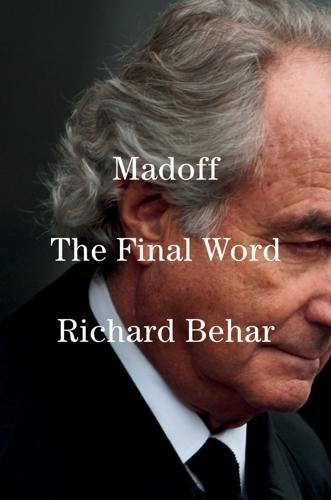
Madoff: The Final Word
by
Richard Behar
Published 9 Jul 2024
As was Annette’s Bongiorno’s practice, she asked Stanley and Konigsberg to return the original statements to her, and they did, before she sent the revised statements to them. One particularly sordid example comes from a December 2002 statement of Stanley’s suggesting that 23,400 shares of media conglomerate AOL–Time Warner were sold on his behalf eleven months earlier—on January 14, 2002. Sounds fine, except that his September 2002 statement still listed the 23,400 shares. “I took Paul’s word this was the arithmetic and paid the tax,” he told investigators, referring to Konigsberg. Asked if he didn’t recall receiving a statement in December 2002 “that contained a large amount of backdated trades,” Stanley’s lawyer felt it was a leading and argumentative question and wouldn’t let him answer it.
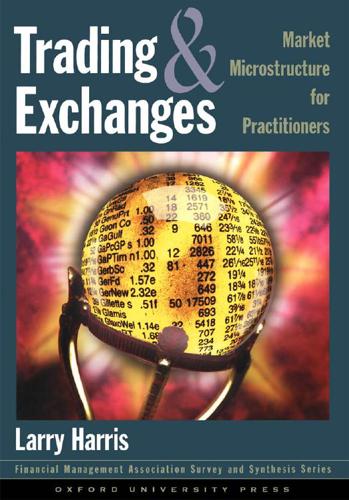
Trading and Exchanges: Market Microstructure for Practitioners
by
Larry Harris
Published 2 Jan 2003
When applied to market structure, these two slogans promote the two different competitions that take place in the trading industry. The first slogan promotes the competition of traders to find the best price, and the second promotes the competition among market centers to provide the best services. ◀ * * * * * * ▶ Where Is the Market for AOL? AOL Time Warner common stock trades in each of the following market centers: • The New York Stock Exchange, its primary listing market • All U.S. regional exchanges: Boston, Chicago, Cincinnati, Pacific, and Philadelphia • Most ECNs and alternative trading systems. The most important of these are Island, Instinet, REDIBook, Archipelago, Bloomberg Tradebook, BRUT, and POSIT
…
See Association for Investment Management and Research air pollution, 213 all-or-none order, 83 alternative trading systems (ATSs), 49 American depository receipts (ADRs), 40, 66 American Stock Exchange hand signals, 104 listed stocks, 48 Major Market Index, 485 specialists, 495 American-style option, 42 analytic risk. See model risk animateurs, 495 AOL Time Warner, 525, 536 application programming interface, 536 arbitrage, 347–79 conversion, 351, 354–56 crossed markets, 375 delivery, 350, 353 equilibrium spreads, 377–78 index, 563, 577, 580 opportunities, 373–75 pairs trading, 358–60 pure, 350–56 quantity characterization, 375–76 risks, 357, 360, 362–73 shipping, 350, 351–53 simple characterization, 349–50 speculative, 356–63 statistical, 360 terminology, 348–49 types of, 350–63 See also arbitrageurs arbitrage numerator, 348 arbitrage opportunity, 348 arbitrage spread, 349, 377–78 arbitrageurs, 185, 243 competition among, 377–78 and dealers and brokers, 376–77 definition of, 6, 194, 232, 347, 348, 404 fixed-income, 40 as liquidity porters, 404, 406, 534 and October 1987 crash, 563 statistical, 194, 360 trading style and strategies, 196, 226, 232–35 types of, 194 See also arbitrage Archer Daniel Midlands Company, 147 Archipelago Exchange, 35, 49, 97, 306, 543 Arizona Stock Exchange, 121, 543 Asian markets, 53, 57, 90, 253 ask price, 5, 69, 280, 295 ask size, 281 asset, 178, 180, 254 asset bubble, 254 asset exchanger, 6, 33, 181–82, 193, 214, 252 Association for Investment Management and Research (AIMR), 65, 66, 448 asymmetrically informed trader, 299, 310 asymmetric information, 7, 312, 314–15, 323, 326–27, 332, 531–32 AT&T, 11–14 ATM-fit currency, 182 at parity order, 117 ATSs.
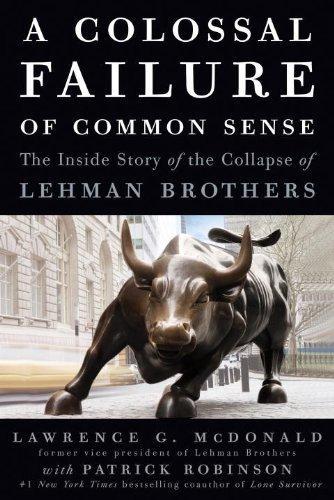
A Colossal Failure of Common Sense: The Inside Story of the Collapse of Lehman Brothers
by
Lawrence G. Mcdonald
and
Patrick Robinson
Published 21 Jul 2009
Our own online poll of global users wouldn’t give five bucks for ’em.” Before I hung up on him, I added, “And you know it. So you can stop bullshitting me.” We both sensed we had Morgan Stanley on the wrong foot. At this time, there were Internet mergers and acquisitions all over the marketplace, like AOL Time Warner. And pretty soon there was a rumor that Union Bank of Switzerland was trying to buy us. The story broke in a couple of publications, and when it did, we thought that would really unnerve Morgan Stanley, who probably foresaw it would be difficult to market any convertible bond without our stamp of approval.
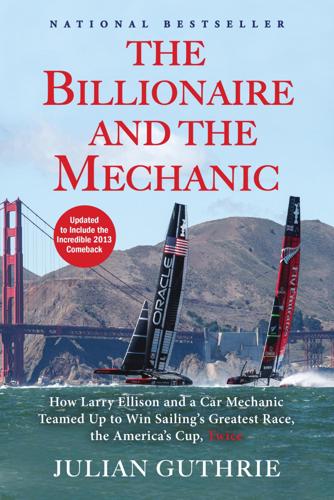
The Billionaire and the Mechanic: How Larry Ellison and a Car Mechanic Teamed Up to Win Sailing's Greatest Race, the Americas Cup, Twice
by
Julian Guthrie
Published 31 Mar 2014
The market could be wildly wrong for a few years but usually got it right over the long term. He recounted how in the early 1980s he talked to Michael Dell about the proliferation of PC companies that seemed to pop up out of nowhere and were gone a year later. More recently, in the dot-com heyday and shortly after the AOL–Time Warner merger, he got a call from Farzad Nazem, who used to work at Oracle and was now a top executive at Yahoo. Nazem told Larry, “Disney wants to merge with us. Why would we ever want to do something like that? What have they got?” Larry answered his old friend, “Gee, let me think. They have the most valuable film library in the world, the most valuable TV channels in world, and successful theme parks everywhere.
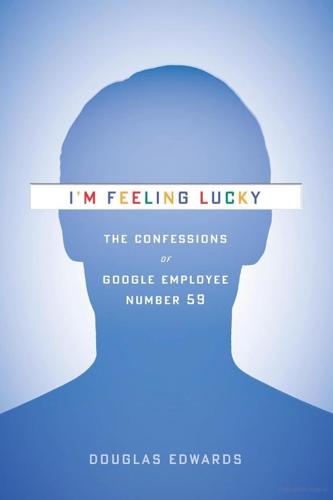
I'm Feeling Lucky: The Confessions of Google Employee Number 59
by
Douglas Edwards
Published 11 Jul 2011
[back] *** * Mark Sweeney, Revolutionmagazine.com, January 23, 2002, www.brandrepublic.com/news/ 135039. [back] *** * "Margins may tell Overture Story," TheStreet.com, February 19, 2002. [back] *** * AOL sounded like "Aloha," hence the nickname. [back] *** * For more on AOL's culture of negotiation, see Alec Klein, Stealing Time: Steve Case, Jerry Levin and the Collapse of AOL Time Warner (Simon and Schuster, 2003). [back] *** * http://www.webmasterworld.com/forum10003/3089.htm. [back] *** * Inktomi did have an extensive "paid inclusion" program that allowed websites to ensure they showed up in search results. [back] *** * http://www.hollywoodreporter.com/hr/search/article_display.jsp?

WTF?: What's the Future and Why It's Up to Us
by
Tim O'Reilly
Published 9 Oct 2017
AOL didn’t actually succeed in transforming itself from the dominant company of the dial-up networking era into the leader of the commercial Internet, but the expectation that it would be able to do so made it possible for it to buy Time Warner, a company many times its size in the real market of goods and services. The AOL Time Warner merger was a colossal disaster, and the value of the combined company was eventually written down from a peak of $226 billion to less than $20 billion. It is not inconceivable that the same could happen to a company like Uber, whose purchase of self-driving truck startup Otto was as much a signal to investors as it was an investment in the actual development of self-driving trucks and cars.
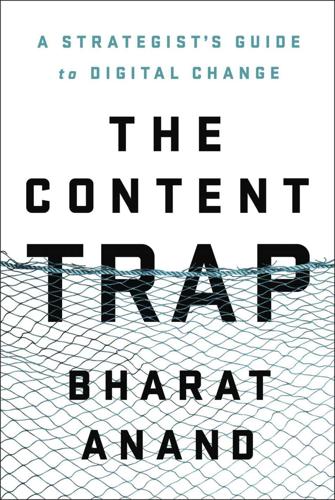
The Content Trap: A Strategist's Guide to Digital Change
by
Bharat Anand
Published 17 Oct 2016
THE PUZZLE OF VERTICAL INTEGRATION Vertical integration refers to the combination of content and distribution. The idea has long been a lightning rod in the entertainment industry. The recent rush was triggered by vertical combinations between TV studios and broadcast networks—20th Century Fox and Fox Broadcasting Corporation in 1986, ABC and Disney in 1996—and continued with megamergers since: AOL–Time Warner in 2000, Comcast–NBC Universal in 2009. Oddly, just as vertical mergers began finding favor with industry players and their bankers, criticism of them deepened. Why? Consider the canonical scenario: a distributor or a TV network buys a production studio. The conventional arguments for vertical integration go something like this: When a distributor buys upstream content, it can better control programming costs (if a cable operator bought ESPN, it could avoid continual renegotiations over subscriber charges).

Data and Goliath: The Hidden Battles to Collect Your Data and Control Your World
by
Bruce Schneier
Published 2 Mar 2015
Think again,” Toronto Star, http://www.commercialalert.org/issues/culture/search-engines/so-you-thought-search-engines-offer-up-neutral-results-think-again. search engines visually differentiated: Gary Ruskin (16 Jul 2001), Letter to Donald Clark, US Federal Trade Commission, re: Deceptive advertising complaint against AltaVista Co., AOL Time Warner Inc., Direct Hit Technologies, iWon Inc., LookSmart Ltd., Microsoft Corp. and Terra Lycos S.A., Commercial Alert, http://www.commercialalert.org/PDFs/SearchEngines.pdf. Heather Hippsley (27 Jun 2002), Letter to Gary Ruskin re: Complaint requesting investigation of various Internet search engine companies for paid placement and paid inclusion programs, US Federal Trade Commission, http://www.ftc.gov/sites/default/files/documents/closing_letters/commercial-alert-response-letter/commercialalertletter.pdf.
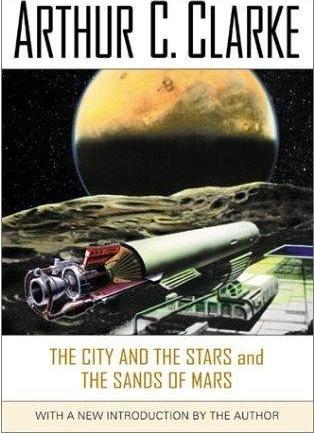
The City and the Stars / The Sands of Mars
by
Arthur C. Clarke
Published 23 Oct 2010
No part of this book may be reproduced in any form or by any electronic or mechanical means, including information storage and retrieval systems, without permission in writing from the publisher, except by a reviewer who may quote brief passages in a review. Aspect® name and logo are registered trademarks of Warner Books, Inc. For information address Warner Books, 1271 Avenue of the Americas, New York, NY 10020. An AOL Time Warner Company ISBN 0-7595-4575-8 A trade paperback edition of this book was published in 2001 by Warner Books. First eBook edition: September 2001 Visit our Web site at www.iPublish.com To the memory of Val Cleaver And Johnnie Maxwell, Who listened patiently through Many versions of this tale THE CITY AND THE STARS INTRODUCTION It is a matter of great satisfaction to me that The City and the Stars has been continuously in print ever since its first publication in 1956.
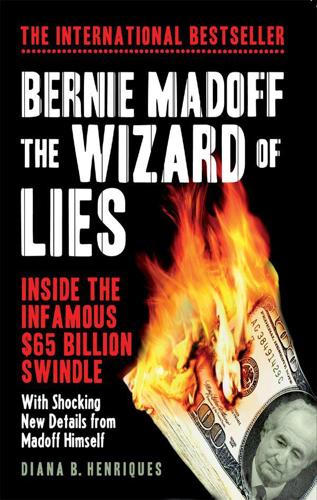
Bernie Madoff, the Wizard of Lies: Inside the Infamous $65 Billion Swindle
by
Diana B. Henriques
Published 1 Aug 2011
Far from resenting any implied suspicions, Madoff encouraged Tucker on this occasion to be sceptical, to verify the trading being conducted for the Fairfield Sentry fund. Tucker was shown an official-looking “purchase and sale blotter” showing a record of each trade for his funds. Then he was shown a journal that supposedly contained stock records for the Madoff firm. “Pick any two stocks,” Madoff said. Any two? Tucker first picked AOL Time Warner, which he knew was among the Sentry fund’s holdings. Meanwhile, either Frank or Bernie had activated the computer screen, explaining that it would provide a live feed to Madoff’s account at the DTCC. “They continued to move pages of the screen until they got to the AOL page,” Tucker recalled.

Dogfight: How Apple and Google Went to War and Started a Revolution
by
Fred Vogelstein
Published 12 Nov 2013
For two decades—the 1980s and 1990s—a procession of celebrated media executives marshaled the best technology they could assemble to position themselves for the new world they saw coming. They spent hundreds of billions of dollars buying one another to bulk up. But their timing was so off, their innovations were so bad, and their mergers were so disastrous—such as AOL’s purchase of Time Warner in 2001—that by 2005 convergence had become a discredited idea, and few dared to mention the word. Where did all these very smart and very wealthy people go wrong? They had the wrong devices in mind. The media and communications tycoons all predicted that the convergence would happen on the personal computer—that their equipment supplying television programming, such as set-top boxes, would ultimately control our personal computers too.
…
Just as that was happening, the company shelled out $7 billion to buy Turner Broadcasting, owners of CNN and a giant movie library. Long before that deal could pay off, the conglomerate agreed to sell itself to America Online in 2000, at the peak of the Internet bubble, for $164 billion in AOL stock. By 2009, when the company finally divested itself of AOL, owners of Time Warner shares in 2000 had seen the value of their holdings reduced to eighteen cents on the dollar. By the beginning of the twenty-first century, media/technology convergence had been so discredited that mentioning it at conferences could make executives wince visibly. All this flailing on both sides of the convergence equation actually made it seem less, not more, likely for it to happen cooperatively.
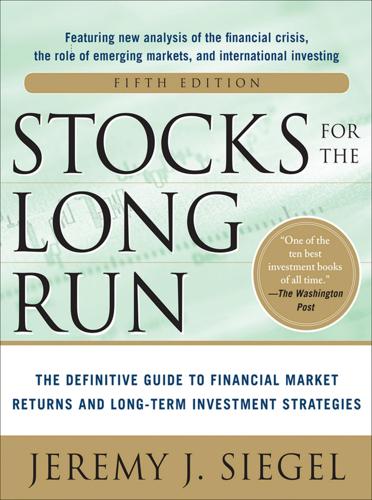
Stocks for the Long Run 5/E: the Definitive Guide to Financial Market Returns & Long-Term Investment Strategies
by
Jeremy Siegel
Published 7 Jan 2014
But that capital gain was never recorded in the S&P earnings data. In 2002, after the Internet bubble popped, Time Warner was forced to write down its investment in AOL by $99 billion, at that time the largest loss ever recorded by an American corporation. The combined profits and market value of AOL and Time Warner were not materially different after the tech bubble than before, but because the capital gain on AOL shares was never included as earnings, the aggregate earnings of the S&P 500 Index fell dramatically when AOL’s market price tumbled. Many other firms during that period also took large write-downs on acquired assets while the profits realized by the acquired firm upon purchase were never recorded.
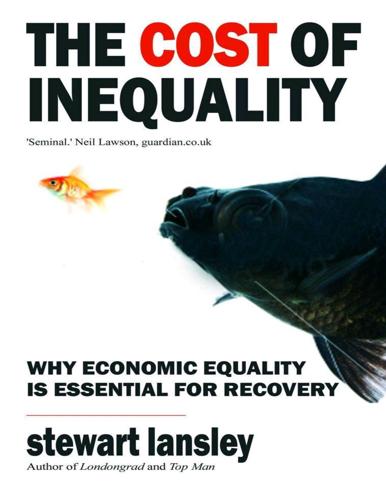
The Cost of Inequality: Why Economic Equality Is Essential for Recovery
by
Stewart Lansley
Published 19 Jan 2012
In 2005, despite earlier promises, it closed Terry’s factory at York— where it made the chocolate orange—with the loss of 316 jobs. Production was moved to cheaper facilities in Sweden, Belgium, Poland and Slovakia. Many deals have failed spectacularly, leading to both wealth transfer and destruction. The merger of AOL and Time Warner in 2001 led to some of the largest losses in corporate history. The Royal Bank of Scotland’s takeover of ABM Amro in 2007 was to have disastrous consequences for the bank, its staff, shareholders and customers and the British taxpayer. One study of the impact of recent mergers in the UK, US and continental Europe concluded that ‘shareholders of acquirers experience wealth losses on average or at best break even… The odds of positive and significant value creation for acquirer shareholders may even be less than 50 per cent, which is what you would get with the toss of a fair coin.’
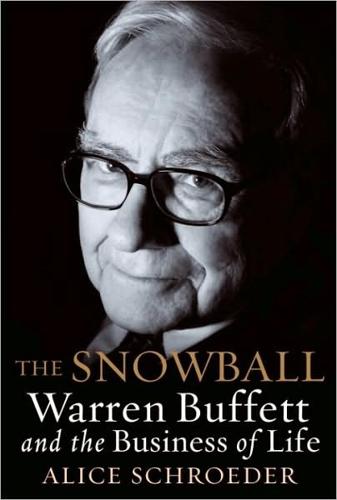
The Snowball: Warren Buffett and the Business of Life
by
Alice Schroeder
Published 1 Sep 2008
The audience settled into its chairs to hear Andy Grove, head of Intel, kick off the morning with “Internet Interrupted.” Then Diane Sawyer moderated a panel, asking Meg Whitman of eBay; Sir Howard Stringer, CEO of Sony; and AOL Time Warner’s Steve Case “Pulse of America: How Do You Find It?” Sun Valley frothed and bubbled like a junior high school cafeteria being filmed for a documentary, with reporters round-robining rumors that USA Networks, or AOL Time Warner, or Disney, or Charter Communications, or some combination of them, were going to hook up with AT&T Broadband.13 Many of those present wished the television tents would disappear.
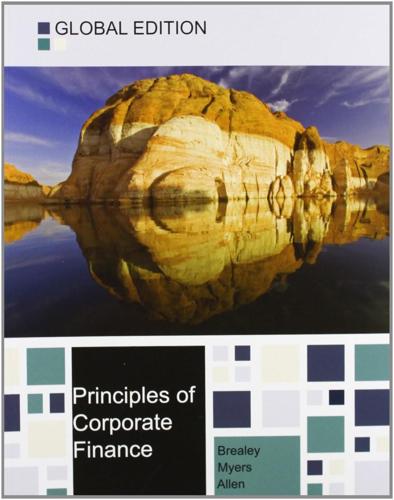
Principles of Corporate Finance
by
Richard A. Brealey
,
Stewart C. Myers
and
Franklin Allen
Published 15 Feb 2014
When a firm’s stock price is swept upward in a bubble, CEOs and financial managers are tempted to acquire another firm using the stock as currency. One extreme example where this arguably happened is AOL’s acquisition of Time Warner at the height of the dot.com bubble in 2000. AOL was a classic dot.com company. Its stock rose from $2.34 at the end of 1995 to $75.88 at the end of 1999. Time Warner’s stock price also increased during this period, but only from $18.94 to $72.31. AOL’s total market capitalization was a small fraction of Time Warner’s in 1995, but overtook Time Warner’s in 1998. By the end of 1999 AOL’s outstanding shares were worth $173 billion, compared with Time Warner’s $95 billion. AOL managed to complete the acquisition before the Internet bubble burst.
…
AOL managed to complete the acquisition before the Internet bubble burst. AOL-Time Warner’s stock then plummeted, but not by nearly as much as the stocks of dot.com companies that had not managed to find and acquire safer partners.36 ● ● ● ● ● SUMMARY The patron saint of the Bolsa (stock exchange) in Barcelona, Spain, is Nuestra Señora de la Esperanza—Our Lady of Hope. She is the perfect patroness, for we all hope for superior returns when we invest. But competition between investors will tend to produce an efficient market. In such a market, prices will rapidly impound any new information, and it will be difficult to make consistently superior returns.
…
With these distinctions in mind, we are about to consider motives for mergers, that is, reasons why two firms may be worth more together than apart. We proceed with some trepidation. The motives, though they often lead the way to real benefits, are sometimes just mirages that tempt unwary or overconfident managers into takeover disasters. This was the case for AOL, which spent a record-breaking $156 billion to acquire Time Warner. The aim was to create a company that could offer consumers a comprehensive package of media and information products. It didn’t work. Even more embarrassing was the acquisition by Hewlett Packard of Autonomy, a British software company. The purchase was made in October 2011 for $11.1 billion.
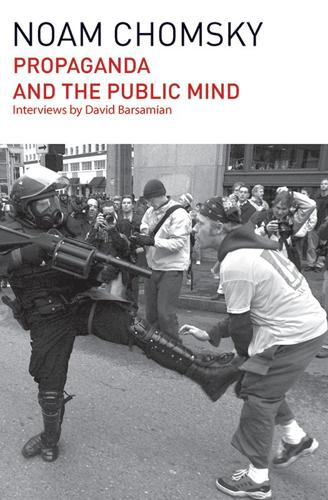
Propaganda and the Public Mind
by
Noam Chomsky
and
David Barsamian
Published 31 Mar 2015
Norman Solomon, a media critic, pointed out in a column that in the early 1990s, while the system was still under government control, the Internet was commonly referred to as an “information superhighway.”16 In the late 1990s, after it was handed over as a gift to private corporations in some manner that nobody knows, it’s become e-commerce, not an information superhighway. The megamergers like AOL and Time Warner offer technical possibilities to ensure that getting on the Internet will draw you into what they want you to see, not what you want to see. That’s very dangerous. The Internet is a tremendous tool for information, understanding, organizing, and communication. There is no doubt at all that the business world, which has been given this public gift, intends to turn it into something else.

The People's Platform: Taking Back Power and Culture in the Digital Age
by
Astra Taylor
Published 4 Mar 2014
Technology companies, cable providers, and Hollywood are happy to agree, insisting that the means smaller governments employ to maintain their cultural distinctiveness—production subsidies, broadcast quotas, spending rules, selective taxes and levies, and national ownership—are no longer needed because “spectrum scarcity,” long the leading justification for investment in public media and protectionist cultural policies, does not exist online.13 On the Internet the “dial is infinite,” to quote Jacob Glick, Google Canada’s policy counsel.14 Yet the infinite dial means that countries at a disadvantage in terms of population and GDP will find themselves using Web sites promoted by a handful of big Silicon Valley players and swamped by ready-made American culture.15 What technology boosters ignore is the fact that the steady erosion of regulation and checks on corporate power was a major factor in the development of the “old model” they so vociferously decry. For example, it was the 1996 Telecommunications Act (the “coup de grace of media deregulation”) that reduced the number of telephone service providers, unleashed a torrent of mergers and acquisitions that culminated in the ill-fated marriage of AOL and Time Warner, and opened the way for Clear Channel’s dramatic takeover of commercial radio. Without intervention, we will find our options similarly diminished in the digital realm. There is no such thing as a public Internet: everything flows through private pipes. However, using the Internet for the consumption of culture or to search for information is nearly as essential to participating in modern life as having electricity or plumbing in your home (try going to school or applying for a job without it).
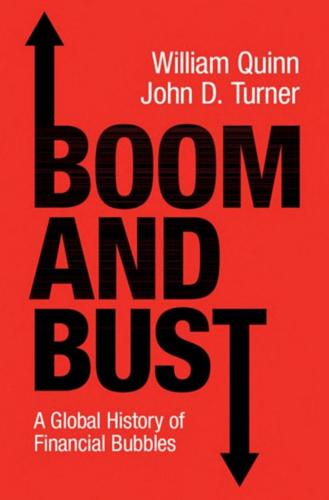
Boom and Bust: A Global History of Financial Bubbles
by
William Quinn
and
John D. Turner
Published 5 Aug 2020
For internet stocks, the picture is even more remarkable: the sector experienced returns of 1,000 per cent in the 2 years preceding February 2000, and had lost all of these gains by the end of 2000.35 Some of the failures were spectacular. Webvan, an online grocery delivery service, saw its market capitalisation fall from $3.1 billion to zero in 18 months. VerticalNet, which provided business-to-business portals, lost $7.8 billion in value during March and April 2000.36 The merger between AOL and Time Warner fared so badly that the Time Warner CEO, having overseen a $99 billion loss, called it ‘the biggest mistake in corporate history’.37 There were, however, some long-term successes. The most notable of these was Amazon, which fell from $106 at the peak of the bubble to $6 by September 2001, but later recovered, eventually reaching over $2,000 per share in September 2018.
…
Financial Times, ‘US Stock Markets take wholesale battering as inflation worries rise’, 15 April 2000. 33. Norris, ‘Another technology victim’, New York Times, 29 April 2000. 34. Ofek and Richardson, ‘DotCom mania’, 1116. 35. Ofek and Richardson, ‘DotCom mania’, 1113. 36. Market capitalisation data obtained from Bloomberg. 37. Barnett and Andrews, ‘AOL merger was “the biggest mistake in corporate history”, believes Time Warner chief Jeff Bewkes’, Daily Telegraph, 28 September 2010. 38. Bloomberg. 39. Deutsche Börse Group, ‘Nemax 50’. 40. Source: Bloomberg. Notes: Each index includes only companies for which technology is the primary source of revenue, as categorised by the ICB Industry Classification Benchmark.
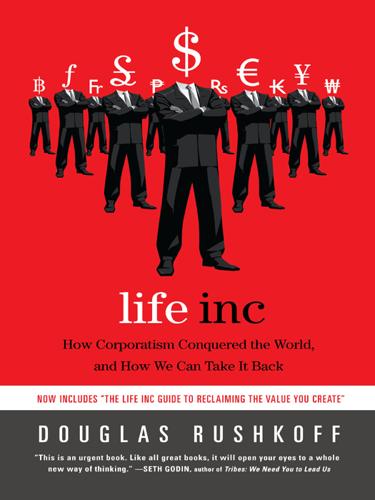
Life Inc.: How the World Became a Corporation and How to Take It Back
by
Douglas Rushkoff
Published 1 Jun 2009
Instead, they continue to depict the economy as a natural ecology, whose occasionally brutal results are no worse than those of cruel nature herself. That which doesn’t kill us makes us stronger, anyway. Journalists write this way only until the supposedly free and unfettered market comes after the periodical they happen to work for. When AOL bought Time Warner along with its portfolio of magazines, including Time, People, and Sports Illustrated, writers and editors at those publications complained that their periodicals were being turned into assets. Editorial budgets went down, writers were instructed to become more advertiser-friendly, and the integrity earned by the magazines through years of hard work was being spent all at once on lowbrow television specials and cross-promotions.
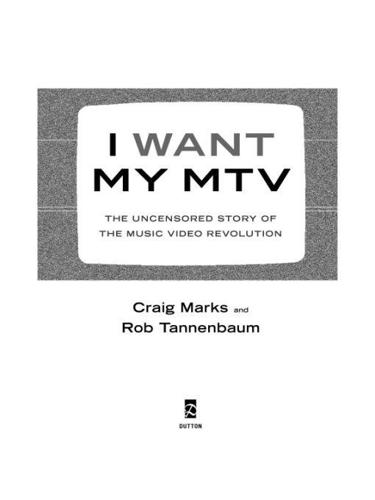
I Want My MTV: The Uncensored Story of the Music Video Revolution
by
Craig Marks
and
Rob Tannenbaum
Published 19 Sep 2011
RANDY PHILLIPS is the CEO of the live entertainment company AEG Live. He has managed acts including Rod Stewart, Lionel Richie, and Guns N’ Roses. BOB PITTMAN is one of the founders of MTV. He led the network from its inception until his departure in 1987. Pittman was the first CEO of MTV Networks. He has served as president of America Online and as COO of AOL Time Warner. He is cofounder of the Pilot Group, a private investment firm, and is currently chairman of media and entertainment platforms for Clear Channel Communications. DALE PON is an advertising executive and one of the creators of the “I Want My MTV” ad campaign. KEVIN POWELL got into a wicked fight with Julie during season one of The Real World.

The Hype Machine: How Social Media Disrupts Our Elections, Our Economy, and Our Health--And How We Must Adapt
by
Sinan Aral
Published 14 Sep 2020
AT&T was barred from preventing competitors from making and selling handsets in 1968; Microsoft was prevented from locking consumers into Explorer, its on-ramp to the Internet, in 2001; and when local telephone carriers were deregulated in the 1980s and 1990s, they were required to make their networks interoperable so consumers could make calls from one network to another. Even the chat wars of the late 1990s ended with a similar intervention. When the FCC approved the merger of AOL and Time Warner in 2002, it forced AOL to make AIM interoperable with Yahoo!, MSN Messenger, and others. As a result, AOL’s market share in instant messaging fell from 65 percent before the merger, to 59 percent one year later, to just over 50 percent three years after that. In 2018, AIM ceded the entire chat market to new entrants like Apple, Facebook, Snapchat, and Google.
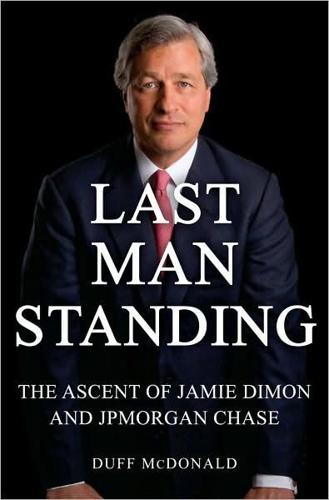
Last Man Standing: The Ascent of Jamie Dimon and JPMorgan Chase
by
Duff McDonald
Published 5 Oct 2009
And if that had been the case, why shouldn’t the title have come along with the job? Richard Bookstaber, author of A Demon of Our Own Design, considers the move one for the history books. “If somebody were to list the most costly single business decisions in the history of time, one would be the purchase of AOL by Time Warner,” he says. “That destroyed more value than anything else. Another thing was Sandy firing Jamie. I can’t envision that Citi would be in the problem it was in right now if Jamie had stayed there. That probably cost $200 to $300 billion. It’s pretty amazing.” • • • What lessons Jamie Dimon took from Sandy Weill is a question that has preoccupied a lot of market commentators since Dimon’s exit from Citigroup.
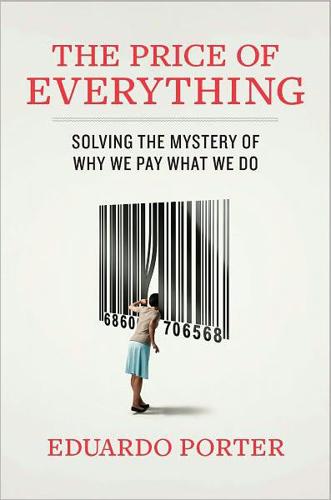
The Price of Everything: And the Hidden Logic of Value
by
Eduardo Porter
Published 4 Jan 2011
The NASDAQ index, heavy with technology stocks, quadrupled between 1996 and March of 2000. Drunk on information technology’s promise, people poured retirement savings into companies like Pets.com, which achieved fame, though never profit, on the strength of a cute ad with a sock puppet. In 2000, AOL could use its pricey stock to take over media goliath Time Warner, which had more than five times its revenue. By October of 2002 the NASDAQ was back where it had been in 1996. In 2010, Time Warner quietly spun off AOL for a tiny fraction of its price a decade before. The dot-com crash was preceded by the Asian financial crisis, with subsidiary bubblettes from Russia to Brazil, when a surge of money into promising “emerging markets” abruptly went into reverse.
…
The relationship between the price of orange juice and the weather is drawn from Richard Roll, “Orange Juice and Weather,” American Economic Review, Vol. 75, No. 5, 1984. Data on the rise and fall of home prices is from the Standard & Poor’s Case-Shiller Home Prices Index (www.standardandpoors.com/indices/sp-case-shiller-home-price-indices/en/us/?indexId=spusa-cashpidff—p-us, accessed 07/19/2010). 229-233 When Prices Go Off the Rails: Data on AOL’s purchase of Time Warner draws from Saul Hansell, “America Online to Buy Time Warner for $165 Billion,” New York Times, January 11, 2000. The discussion of the seventeenth century’s financial bubbles and the United Kingdom’s Bubble Act draws from Kevin Lansing, “Asset Price Bubbles,” Federal Reserve Bank of San Francisco, Economic Letter, Number 2007-32, October 26, 2007; and Peter M.
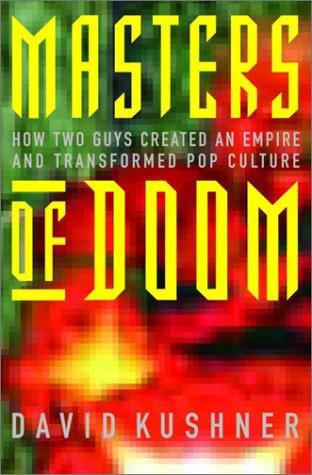
Masters of Doom: How Two Guys Created an Empire and Transformed Pop Culture
by
David Kushner
Published 2 Jan 2003
The DWANGO idea wasn’t breakthrough–id had thought of it themselves but just hadn’t gotten around to programming it; since Quake was going to be playable over the Internet, they had figured they would hold off on creating the multiplayer online feature. Anyway, Jay concurred, he certainly didn’t want some bozos doing the job, not when they had companies like AOL and Time Warner calling. “Well,” Romero said, “maybe I’ll take five minutes and see what this disk does.” Back home in Texas, Romero popped the disk in his hard drive and dialed up the Houston number. After his modem whooshed, he saw a message on screen from Kee: “Come on, let’s try a game.” Next thing he knew, there they were–Kee in Houston, Romero in Dallas–playing a spontaneous pickup game of Doom II deathmatch.
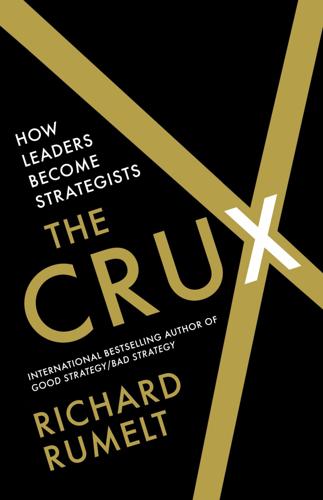
The Crux
by
Richard Rumelt
Published 27 Apr 2022
For this reason, many of the mergers based on the hope for “economies of scale” fail. After the deal, it often turns out that the hoped-for gains were illusory, as the roles, skills, pay scales, and tasks in the merger partners were too dissimilar for effective combination. Obvious examples of this were the disastrous Daimler & Chrysler, Alcatel & Lucent, and the AOL & Time-Warner mergers. Issues of scale play a role in advertising and research and development, as these activities are more sensitive to the expenditures of competitors. This is a very complex set of issues that must be carefully analyzed. In general, one attacks a larger competitor through an initial focus on part of the business from which they will probably retreat.
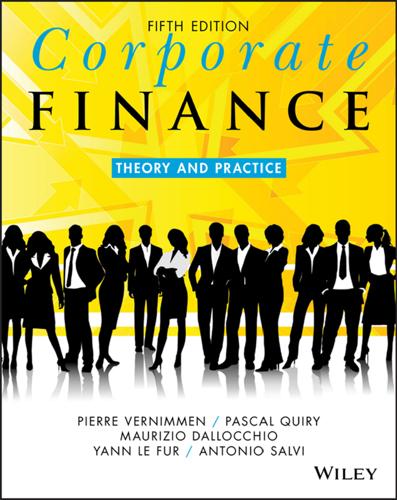
Corporate Finance: Theory and Practice
by
Pierre Vernimmen
,
Pascal Quiry
,
Maurizio Dallocchio
,
Yann le Fur
and
Antonio Salvi
Published 16 Oct 2017
Shleifer and Vishny (2003) explain this phenomenon by saying that, in a given market at a given time, there are overvalued and undervalued companies. In this instance, the former bids to acquire the latter. The bid depresses the acquirer’s valuation but also keeps this overvalued firm from falling too far or too fast when investors realise that the company is overvalued. AOL’s acquisition of Time Warner was a case in point. The merger wave ends when there are no more undervalued firms left, because they have all been bought up (end of the 1980s) or because there are no more overvalued firms (2001, 2003). In more concrete terms, it seems to us that there are three main principles that explain the cyclical nature of mergers: when the economic situation is depressed or very bad, companies focus on their operating activities, seeking to cope with problems and to restructure.
…
They demonstrate that value is created for the target’s shareholders because of the control premium paid. For the buyer’s shareholders, the results are more mixed, even if they tend to show a recent improvement compared with the end of the 1990s, when it was widely assumed that two-thirds of mergers were failing. Excluding some resounding failures (acquisition of Chrysler by Daimler1 or the AOL/Time Warner merger), which heavily bias the results, M&A deals would appear value-creative because of some largely successful deals such as Santander/Abbey National, Air France/KLM, NBC/Universal. Quality and speediness of the integration process are the key factors for successful M&A deals. Section 44.2 Choosing a negotiating strategy A negotiating strategy aims at achieving a price objective set in accordance with the financial value derived from our valuation work presented in Chapter 31.
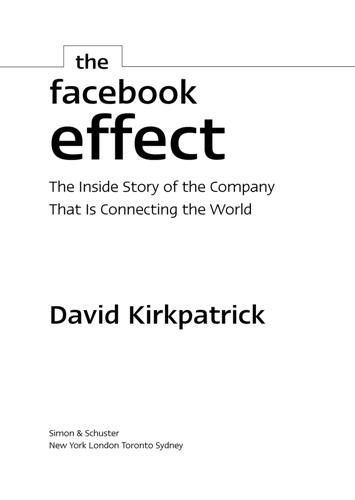
The Facebook Effect
by
David Kirkpatrick
Published 19 Nov 2010
Rumors of Yahoo’s billion-dollar bid were circulating. At Time Warner, discussions about Facebook briefly turned serious. AOL CEO Jonathan Miller wanted to buy it. He saw community as the core of AOL, manifested in its chat rooms, forums, and AIM. Facebook would fit in perfectly, he thought. But AOL was just a division of Time Warner. Miller couldn’t proceed without the concurrence of the parent company’s leaders, who had turned down previous proposals he’d made for acquisitions. Miller also knew Zuckerberg would not want to take Time Warner’s stock, much derided at the time for performing so poorly. Any deal would have to be for cash.
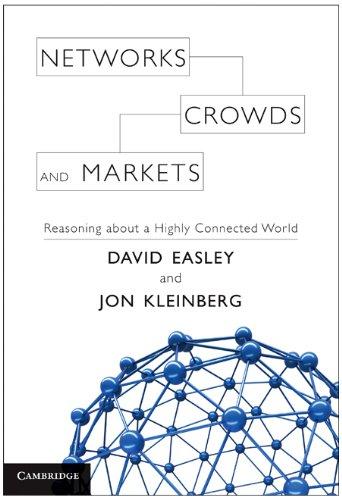
Networks, Crowds, and Markets: Reasoning About a Highly Connected World
by
David Easley
and
Jon Kleinberg
Published 15 Nov 2010
Falster and Mark Westoby. Plant height and evolutionary games. Trends in Ecology and Evolution, 18(7):337–343, July 2003. [156] Eugene F. Fama. The behavior of stock market prices. Journal of Business, 38:34–105, 1965. [157] Gerald R. Faulhaber. Network effects and merger analysis: Instant messaging and the AOL Time Warner case. Telecommunication Policy, 26:311–333, June/July 2002. [158] Timothy J. Feddersen and Wolfgang Pesendorfer. The swing voter’s curse. American Economic Review, 86(3):408–424, June 1996. BIBLIOGRAPHY 811 [159] Timothy J. Feddersen and Wolfgang Pesendorfer. Convicting the innocent: The inferiority of unanimous jury verdicts under strategic voting.

Consumed: How Markets Corrupt Children, Infantilize Adults, and Swallow Citizens Whole
by
Benjamin R. Barber
Published 1 Jan 2007
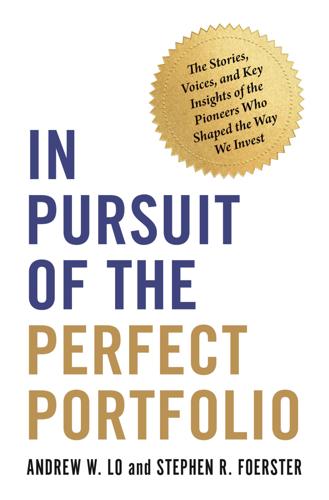
In Pursuit of the Perfect Portfolio: The Stories, Voices, and Key Insights of the Pioneers Who Shaped the Way We Invest
by
Andrew W. Lo
and
Stephen R. Foerster
Published 16 Aug 2021
I had given them a little more power in the merger than I should have. Mr. Morgan said, ‘Do whatever you want with it,’ and I can say I’m a bad negotiator.”37 “The first five years you would have described Bogle as a genius. And at the end of the first 10 years, roughly, you would have said: the worst merger in history, including AOL and Time Warner. It all fell apart. Their management skills were zero. They ruined the fund they started, Ivest. They started two more and ruined both. And they ruined Wellington Fund. The company started to shrink radically, and they who had done the damage decided to fire me. I told the board the best thing for us to do is to unscramble the omelet of all those years ago and give them back their counseling business.
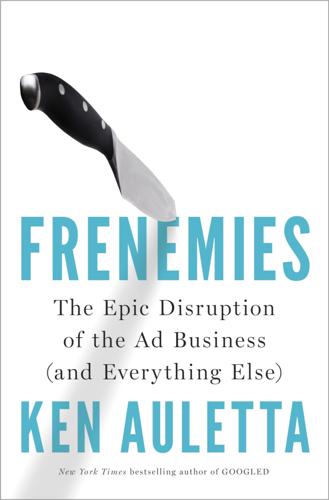
Frenemies: The Epic Disruption of the Ad Business
by
Ken Auletta
Published 4 Jun 2018

Boom: Bubbles and the End of Stagnation
by
Byrne Hobart
and
Tobias Huber
Published 29 Oct 2024
There were plenty of observers who thought the Netscape IPO in 1995 represented not the start of a half-decade boom in the technology industry but an obvious peak that couldn’t possibly be surpassed. The stock, originally priced at $14 per share, was doubled at the last minute to $28 and reached $75 on the first day of trading. Few could have imagined that within the next five years AOL would buy Time Warner, which gives you a sense of just how difficult it is to differentiate a single overhyped news event from the underhyped trend of which it’s a part. If you think you’ve identified a bubble, what should you do? One possibility is to participate in purely financial terms. It’s not hard to find examples of people who have profited from doing this.

Valley of Genius: The Uncensored History of Silicon Valley (As Told by the Hackers, Founders, and Freaks Who Made It Boom)
by
Adam Fisher
Published 9 Jul 2018
It was all the companies in Silicon Valley giving each other the same dollar and having it go around the room. And so once the tap turned off for one company, and you multiply that across the whole ecosystem, the disaster was almost preordained. Jeff Skoll: In January 2000 was the merger between AOL and Time Warner. So I remember Pierre and I sitting in the little conference room when we hear that news, and Pierre—who is superwise—said, “It’s probably going to be the crash of the internet.” And I was like, “Why?” And he said, “Well, this is the first time you are having Yankee dollars buying Confederate assets, right?
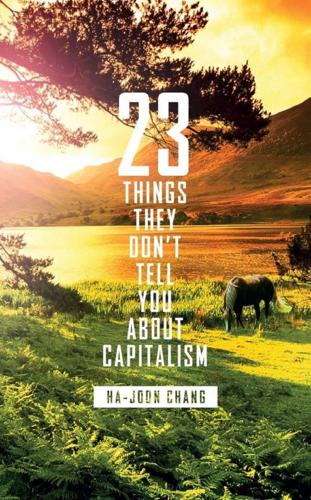
23 Things They Don't Tell You About Capitalism
by
Ha-Joon Chang
Published 1 Jan 2010
Sometimes being too close to the situation can actually make it more, rather than less, difficult to see the situation objectively. This is why there are so many business decisions that the decision-makers themselves believe to be works of genius that others view with scepticism, if not downright contempt. For example, in 2000, AOL, the internet company, acquired Time Warner media group. Despite the deep scepticism of many outsiders, Steve Case, AOL’s then chairman, called it a ‘historic merger’ that would transform ‘the landscape of media and the internet’. Subsequently the merger turned out to be a spectacular failure, prompting Jerry Levin, the Time Warner chief at the time of the merger, to admit in January 2010 that it was ‘the worst deal of the century’.
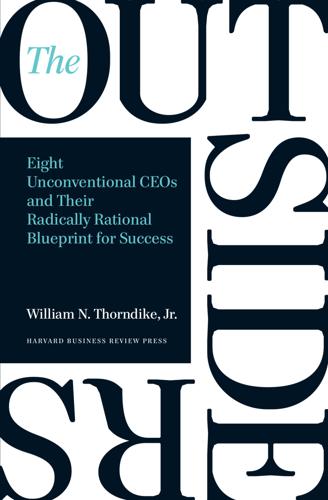
The Outsiders: Eight Unconventional CEOs and Their Radically Rational Blueprint for Success
by
William Thorndike
Published 14 Sep 2012

Nothing but Net: 10 Timeless Stock-Picking Lessons From One of Wall Street’s Top Tech Analysts
by
Mark Mahaney
Published 9 Nov 2021
It had well over 20 million paying subscribers, a brand name practically synonymous with the Internet, seasoned executives such as Steve Case and Bob Pittman, and the momentum and chutzpah to buy one of the largest media companies in the world, Time Warner. Now AOL is a fraction of its former size, it has been gobbled up by Verizon, and its acquisition of Time Warner is considered one of the biggest blunders in corporate history. In 1999, I stood next to Bob Pittman at a small-group investor meeting in Boston as he argued that dial-up AOL didn’t face a broadband challenge because it had the clout to negotiate from a position of strength with any cable company.
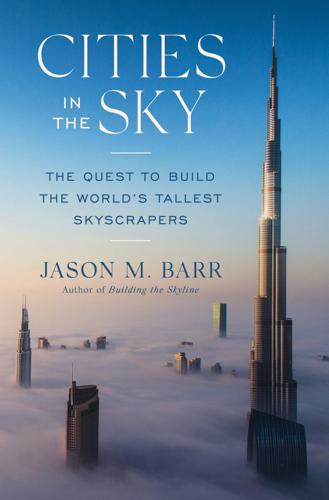
Cities in the Sky: The Quest to Build the World's Tallest Skyscrapers
by
Jason M. Barr
Published 13 May 2024
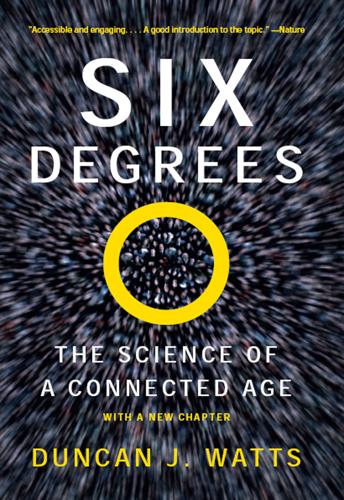
Six Degrees: The Science of a Connected Age
by
Duncan J. Watts
Published 1 Feb 2003

The Optimist: Sam Altman, OpenAI, and the Race to Invent the Future
by
Keach Hagey
Published 19 May 2025
(Hiring the firm, a boutique investment bank that will often be listed as the third bank on a media deal, is the best way to get a coveted invitation to the conference.) Along the way, Altman has become close friends with Sun Valley mainstays like Barry Diller and his wife, Diane von Furstenberg. The conference is famous as a site for dealmaking, the place where AOL decided to buy Time Warner and Comcast sealed the deal to take over NBC Universal. Allen & Company gets a cut of every deal forged at the conference. This particular year, despite a healthy economy and the usual splendid weather, the conference was permeated by a sense of dread, as the big players in media seemed increasingly desperate to sell themselves off to some tech company or another before the profits fully leaked out of their business, thanks to competition from the likes of Netflix.
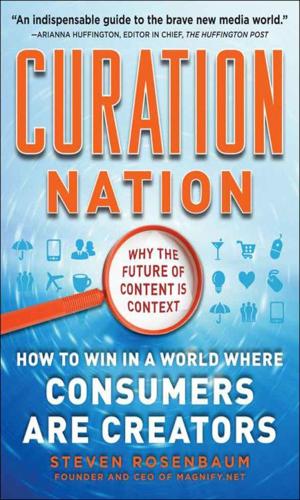
Curation Nation
by
Rosenbaum, Steven
Published 27 Jan 2011
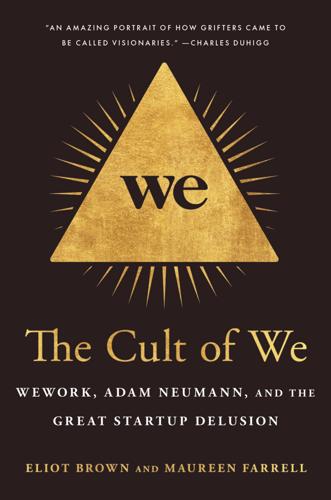
The Cult of We: WeWork, Adam Neumann, and the Great Startup Delusion
by
Eliot Brown
and
Maureen Farrell
Published 19 Jul 2021
Students learned Latin; many glided into Ivy League colleges and universities. Minson, a cross-country runner, did well academically and won acceptance to Georgetown. After college, Minson climbed the ladder of corporate finance, spending time at the accounting firm Ernst & Young and AOL before he became CFO of Time Warner Cable. When Neumann recruited him—promising him a front-row seat at one of the country’s most disruptive startups—Minson’s boss at Time Warner Cable, Robert Marcus, called him “the finest CFO in America” in a press release announcing his departure to join WeWork. When he got to WeWork, Minson was a clear contrast to Neumann.
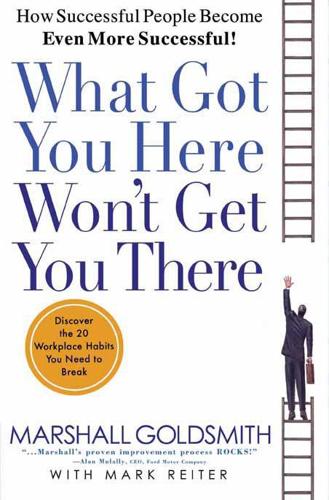
What Got You Here Won't Get You There: How Successful People Become Even More Successful
by
Marshall Goldsmith
and
Mark Reiter
Published 9 Jan 2007
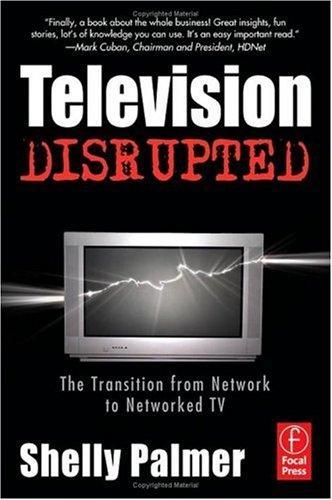
Television disrupted: the transition from network to networked TV
by
Shelly Palmer
Published 14 Apr 2006
All rights reserved. 13-Television.Glossary v2.qxd 3/20/06 7:29 AM Page 192 192 G L O S S A RY AMCI Advanced Media Consumption Index ranging from 1-10 is a useful tool for any type of forecasting by helping understand how different people consume media differently depending on where on the AMCI they can be found. See AMCI at http://www.amvgllc.com Analog Television A video standard established by the United States (RCA/NBC) and adopted by numerous other countries. This is a 525-line video with 3.58-MHz chroma subcarrier and 60 cycles per second. Frames are displayed at 30 fps. AOL America Online — owned by Time Warner Inc. ATM Asynchronous transfer mode. A high speed data transmission and switching technique that uses fixed size cells to transmit voice, data, video which greatly increases the capacity of transmission paths, both wired and wireless. Backbone Large networks that inter-connect with each others and have individual ISPs as clients.
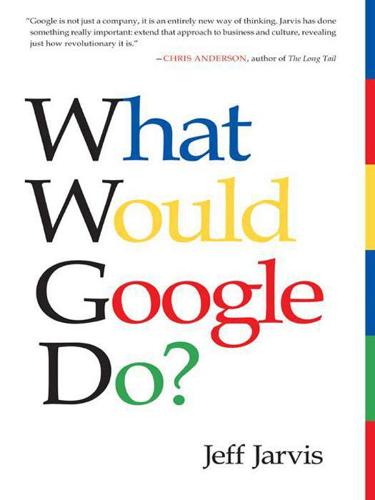
What Would Google Do?
by
Jeff Jarvis
Published 15 Feb 2009
Google knows more about what we know and want to know and what we do with that than any other institution. But its profit doesn’t come from that either. Google’s profit comes from advertising, which it dominates because it is so good at search and has so many of us using its services and knows so much that it can target ads efficiently. Google knows what it is. AOL thought it was in the content business, which is why Time Warner, a content company, made the disastrous mistake of combining with AOL. In reality, AOL was in the community business (its chats and forums were pioneering and popular, long before Facebook or MySpace) and the service business (“you’ve got mail” on AOL way before you’ve gotten it from Gmail).

The Internet Is Not the Answer
by
Andrew Keen
Published 5 Jan 2015
Alongside the general stock market hysteria, this thinking contributed to the massive increase in venture capital commitments in America between 1995 and 2000. The obsession with getting big quick also explains some of the most surreal Internet deals in the bubble, such as AOL’s catastrophic $164 billion acquisition of Time Warner in January 2000 and the $1.2 billion invested by venture capitalists in the online grocer Webvan, which the technology site CNET ranks as the “most epic fail in the dotcom bubble fiasco.”32 Founded in 1997 by Louis Borders, a founder of Borders Books, Webvan went public in November 1999, even though in the first six months of 1999, the e-commerce grocer lost $35 million on sales of $395,000.

Dreaming in Code: Two Dozen Programmers, Three Years, 4,732 Bugs, and One Quest for Transcendent Software
by
Scott Rosenberg
Published 2 Jan 2006
But what really brought the question back into the spotlight was Mitch Kapor’s new role as chairman of the Mozilla Foundation. Originally, Mozilla’s core programmers mostly held jobs on Netscape’s payroll, and when Netscape got bought by America Online in 1998, they became AOL employees. By 2003 that meant they were employees of Time Warner, the media conglomerate that had merged with AOL at the height of the dot-com boom and later came to regret the move. Deep in the doldrums of the tech downturn, AOL executives began asking: Tell me again why we’re paying a bunch of programmers to give away code? The future of Mozilla looked increasingly uncertain.
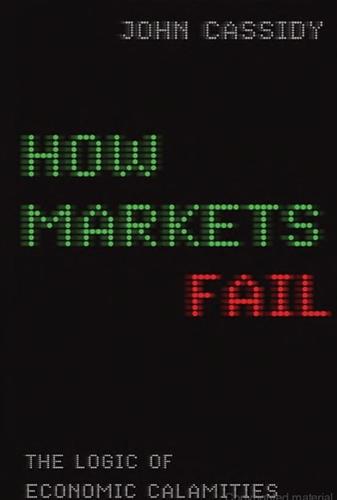
How Markets Fail: The Logic of Economic Calamities
by
John Cassidy
Published 10 Nov 2009
“From an efficient markets perspective, these results are puzzling,” Brunnermeier and Nagel noted. “Why would some of the most sophisticated investors in the market hold these overpriced technology stocks? And why would they devote a larger share of their portfolio to these stocks than other investors?” One possibility is that the hedge fund managers genuinely believed AOL was worth more than Time Warner, and that Webvan was going to challenge Wal-Mart. This notion can be safely discounted. During 1999, several prominent fund managers, including Stanley Druckenmiller, the chief investment officer at Soros Fund Management, said publicly that the rise in Internet stocks was a bubble. Evidently, hedge fund managers were playing a version of Keynes’s Beauty Contest, trying to surf the bubble and get out before it burst.

Unscripted: The Epic Battle for a Media Empire and the Redstone Family Legacy
by
James B Stewart
and
Rachel Abrams
Published 14 Feb 2023
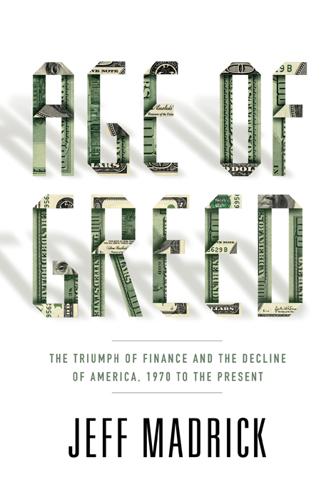
Age of Greed: The Triumph of Finance and the Decline of America, 1970 to the Present
by
Jeff Madrick
Published 11 Jun 2012
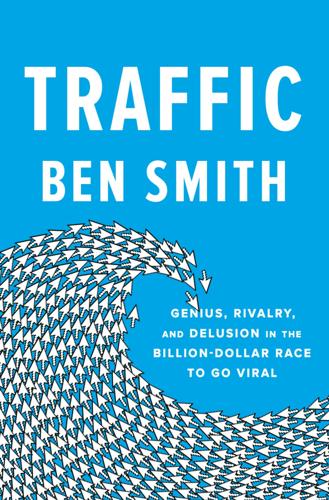
Traffic: Genius, Rivalry, and Delusion in the Billion-Dollar Race to Go Viral
by
Ben Smith
Published 2 May 2023
Kenny, as everyone who knew him called him, had already played a central role at the peak of the last internet boom in linking the worlds of political power and new media money. Once a cagey New York PR man, he was the executive vice president at AOL in 2000 when the company that popularized email and mailed you CDs had used its inflated stock to purchase Time Warner, the cable and media giant. Kenny held the ear of three CEOs—Steve Case, Gerald Levin, and Richard Parsons—through the iconic, disastrous merger of the first internet boom. The bubble burst in 2001 and the deal became a symbol of the idiocy of the era, but Kenny walked away with a sack of cash, a part-time role advising Parsons, and a sweet office overlooking Central Park.
…
Kenny had already reaped the political rewards of The Huffington Post back in 2008, building a new online base for the Democratic Party and having a hand in electing Barack Obama. Now, the financier was getting paid too. What’s more, he got to sit back and appreciate the irony that AOL—a descendant of the company that merged with Time Warner in the great boondoggle of the last bubble—was paying him again. Jonah had been drifting away from The Huffington Post, and by then was spending just one day a week there, less than he spent at BuzzFeed. But he found himself flattened by the deal—depressed. Jonah had been on an incredible ride for a decade, really since the day he sent that Nike email.
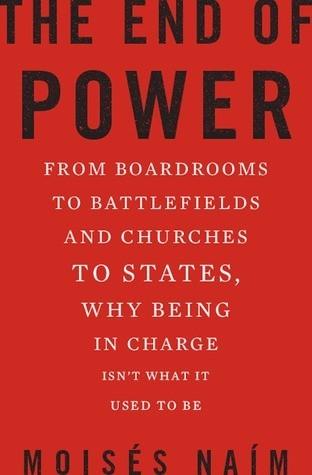
The End of Power: From Boardrooms to Battlefields and Churches to States, Why Being in Charge Isn’t What It Used to Be
by
Moises Naim
Published 5 Mar 2013
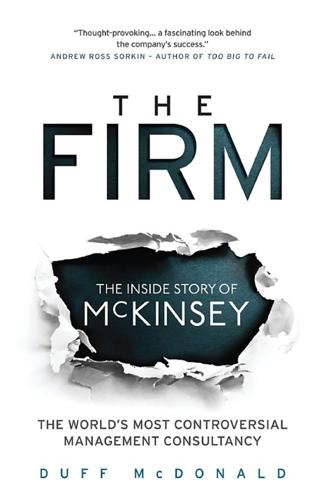
The Firm
by
Duff McDonald
Published 1 Jun 2014
Smelling opportunity, Chase Manhattan’s Jimmy Lee cranked his own bank’s corporate lending into high gear. When JP Morgan floundered, Chase Manhattan swooped in and bought it in 2000. McKinsey was also on the scene when Time Warner completed its notorious merger with AOL that same year. According to ex-McKinsey consultant Yves Smith, McKinsey pushed the board of Time Warner to consider the merger on five separate occasions.35 “They traded half of Time Warner for a box of air,” exclaimed a rival consultant. Just over a year later, the consultants earned $9 million as advisers to then–Hewlett-Packard CEO Carly Fiorina in her quixotic acquisition of Compaq that eventually cost Fiorina her job and brought the technology firm to its knees.
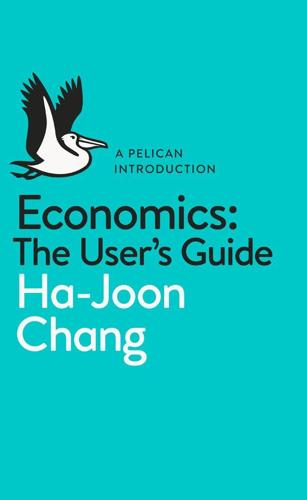
A Pelican Introduction Economics: A User's Guide
by
Ha-Joon Chang
Published 26 May 2014
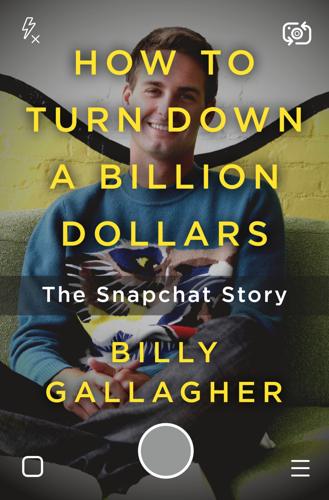
How to Turn Down a Billion Dollars: The Snapchat Story
by
Billy Gallagher
Published 13 Feb 2018
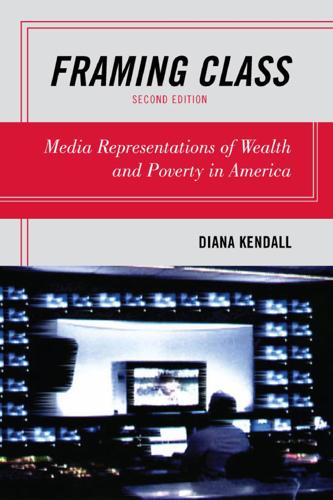
Framing Class: Media Representations of Wealth and Poverty in America
by
Diana Elizabeth Kendall
Published 27 Jul 2005

Life After Google: The Fall of Big Data and the Rise of the Blockchain Economy
by
George Gilder
Published 16 Jul 2018
Silicon Valley today is a green sward with almost no silicon visible and no significant chip, fiber optic, or complex systems manufacturing. Because of the differential treatment, the telco hardware companies are throwing their investment funds into the green sward. Rather than an all-out drive to 5G, Verizon purchases AOL and the Huffington Post. AT&T romances Time Warner. These are mostly bandwidth users rather than bandwidth suppliers. Over the next decade, regulatory policy will largely determine whether 5G happens in the United States or is chiefly relegated to foreign countries, whether the promise of Internet security afforded by blockchain innovations will be realized in the United States or whether the Internet will continue to decline into giant walled gardens ruled by Google, Apple, and Facebook.

Nerds on Wall Street: Math, Machines and Wired Markets
by
David J. Leinweber
Published 31 Dec 2008

The Rise and Fall of the Neoliberal Order: America and the World in the Free Market Era
by
Gary Gerstle
Published 14 Oct 2022
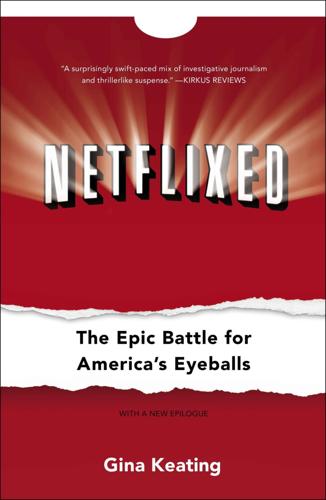
Netflixed: The Epic Battle for America's Eyeballs
by
Gina Keating
Published 10 Oct 2012

Broke: How to Survive the Middle Class Crisis
by
David Boyle
Published 15 Jan 2014
Nothing would ever be the same again, and the doubters were ridiculed in the press. For a moment, they had many people believing that a website like @Home was suddenly worth the same as Lockheed Martin, or the Internet share-trader E*Trade was worth the same as the giant American Airlines. Tiny AOL even took over the giant media empire Time Warner — one of the most disastrous mergers of all time. ‘We have one general response to the word “valuation” these days: “Bull market”,’ said Morgan Stanley’s Mary Meeker, the so-called Queen of the Net. ‘We believe we have entered a new valuation zone.’ What were Woolley and his colleagues going to do in the face of this insanity?

Surveillance Valley: The Rise of the Military-Digital Complex
by
Yasha Levine
Published 6 Feb 2018
According to its mission statement, the organization was set up to promote telecommunications reforms “based on a philosophy of limited government, free markets and individual sovereignty.” 74. Here’s a roundup of what happened to the NSFNET providers in greater detail: America Online bought up the NFSNET backbone built by the IBM-MCI consortium. Using access to this high-speed national network to outpace competitors like Prodigy and CompuServe, AOL would later end up merging with Time-Warner. The San Francisco Bay Area’s BARNET became part of Bolt, Beranek and Newman, J. C. R. Licklider’s old firm and an original ARPANET contractor, which itself grew into one of the largest Internet providers in the country and eventually had its networking division absorbed by Verizon (while the rest of the company went to Raytheon) (Nathan Newman, Net Loss: Internet Prophets, Private Profits, and the Costs to Community [University Park: Penn State University Press, 2002]).

Facebook: The Inside Story
by
Steven Levy
Published 25 Feb 2020
Parker and Zuckerberg flew to Dulles and met Palihapitiya and another AOL executive, Jim Bankoff. Parker did most of the talking, as Zuckerberg was in his silent mode for most of the meeting. But Palihapitiya was impressed. He later told Bankoff that AOL should consider buying Thefacebook, but AOL was still sifting through the rubble of its train-wreck merger with Time Warner and couldn’t consider an offer. Not that Zuckerberg would have gone for it. AOL wound up doing a small deal with Thefacebook that linked AIM to the start-up’s website, so that Facebook friends could find one another on the chat service. Palihapitiya often referred to it as solely to AOL’s advantage.
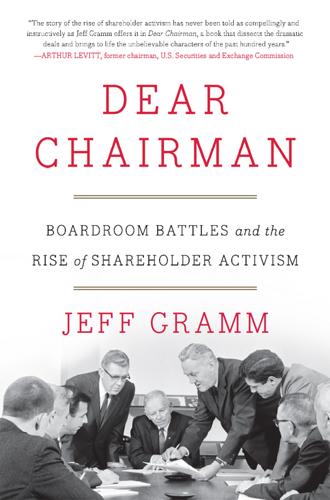
Dear Chairman: Boardroom Battles and the Rise of Shareholder Activism
by
Jeff Gramm
Published 23 Feb 2016
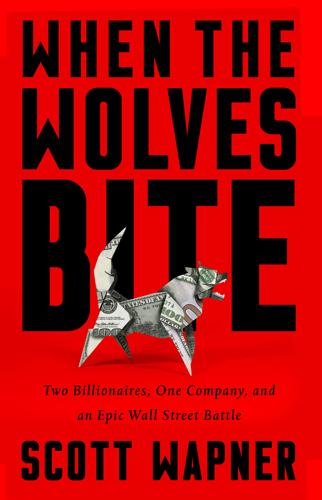
When the Wolves Bite: Two Billionaires, One Company, and an Epic Wall Street Battle
by
Scott Wapner
Published 23 Apr 2018
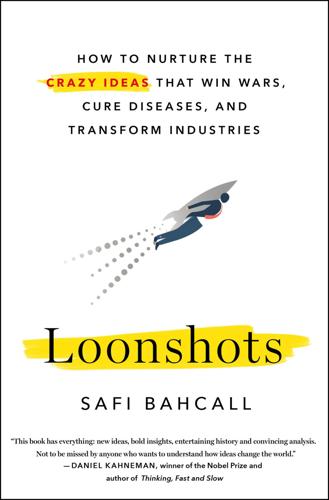
Loonshots: How to Nurture the Crazy Ideas That Win Wars, Cure Diseases, and Transform Industries
by
Safi Bahcall
Published 19 Mar 2019
Studios were bought and sold by an automobile parts company, two beverage companies, a hotel company, a talent agency, a half dozen or so different conglomerates, and one Italian con artist working with a French government bank. The game of musical chairs peaked when Warner Brothers merged with Time Inc. and waltzed together into the arms of AOL, becoming the largest failed megamerger, at $186 billion, of all time. As the music slowed, the film industry separated into two markets. The present-day Majors—Warner, Universal, Columbia, Fox, Paramount, and Disney—acquire and manage franchise or well-developed projects. They compete by delivering those products through as many channels to as many customers as they profitably can.
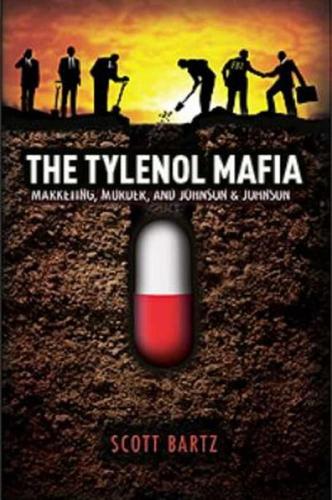
The Tylenol Mafia
by
Scott Bartz
Published 21 Sep 2011